
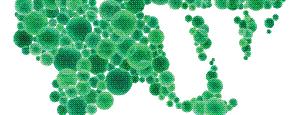






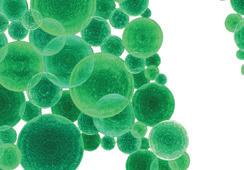






Wege Prize is an annual competition that ignites game-changing solutions for the future by inspiring college and university students around the world to collaborate across institutional, disciplinary, and cultural boundaries to redesign the way economies work.

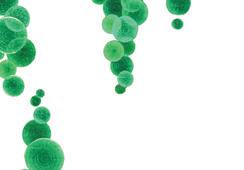
Participants contend for a portion of a cash prize pool now totaling $65,000 (USD), all while learning — and helping show the world — what the future of problem solving looks like.


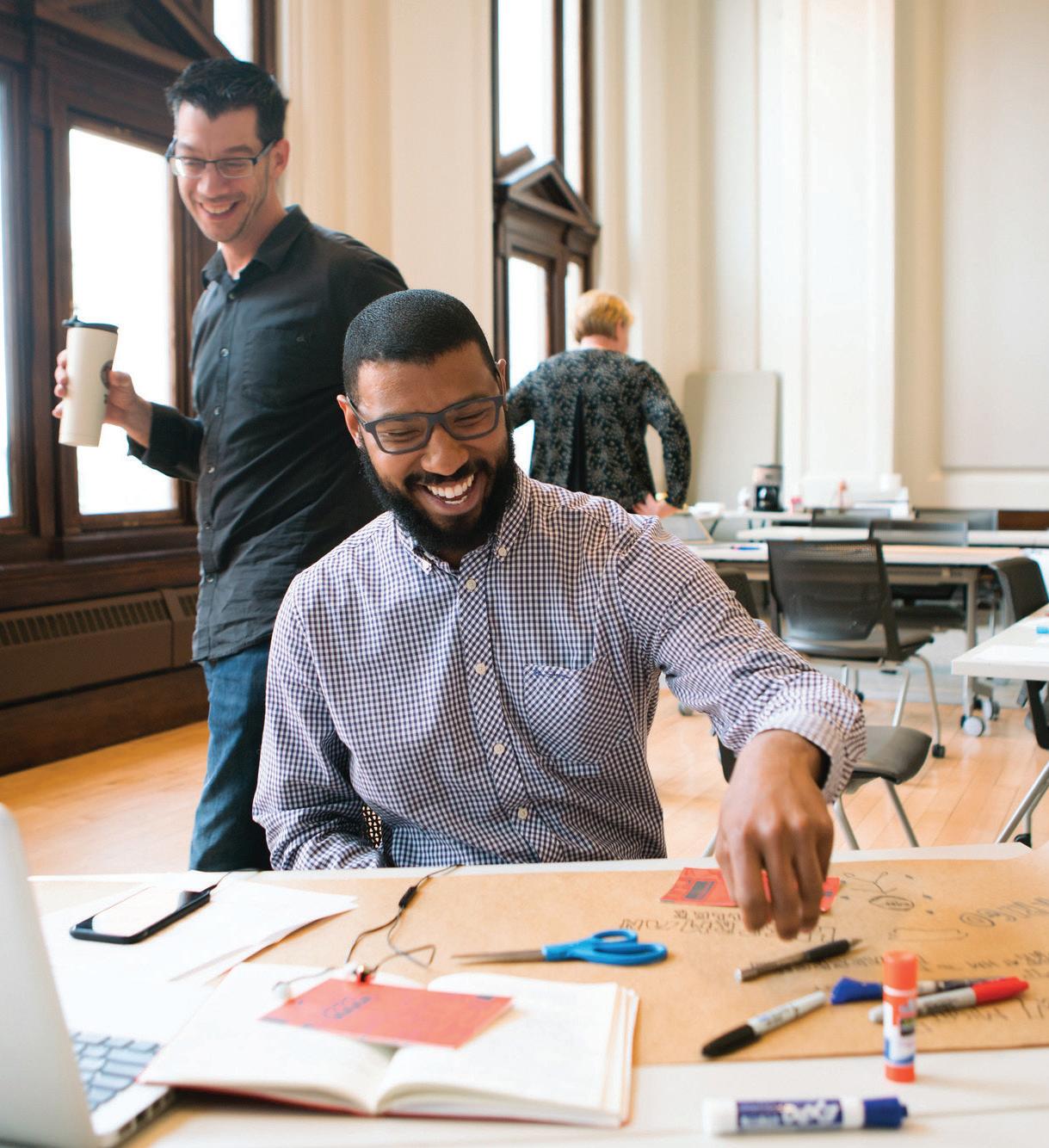

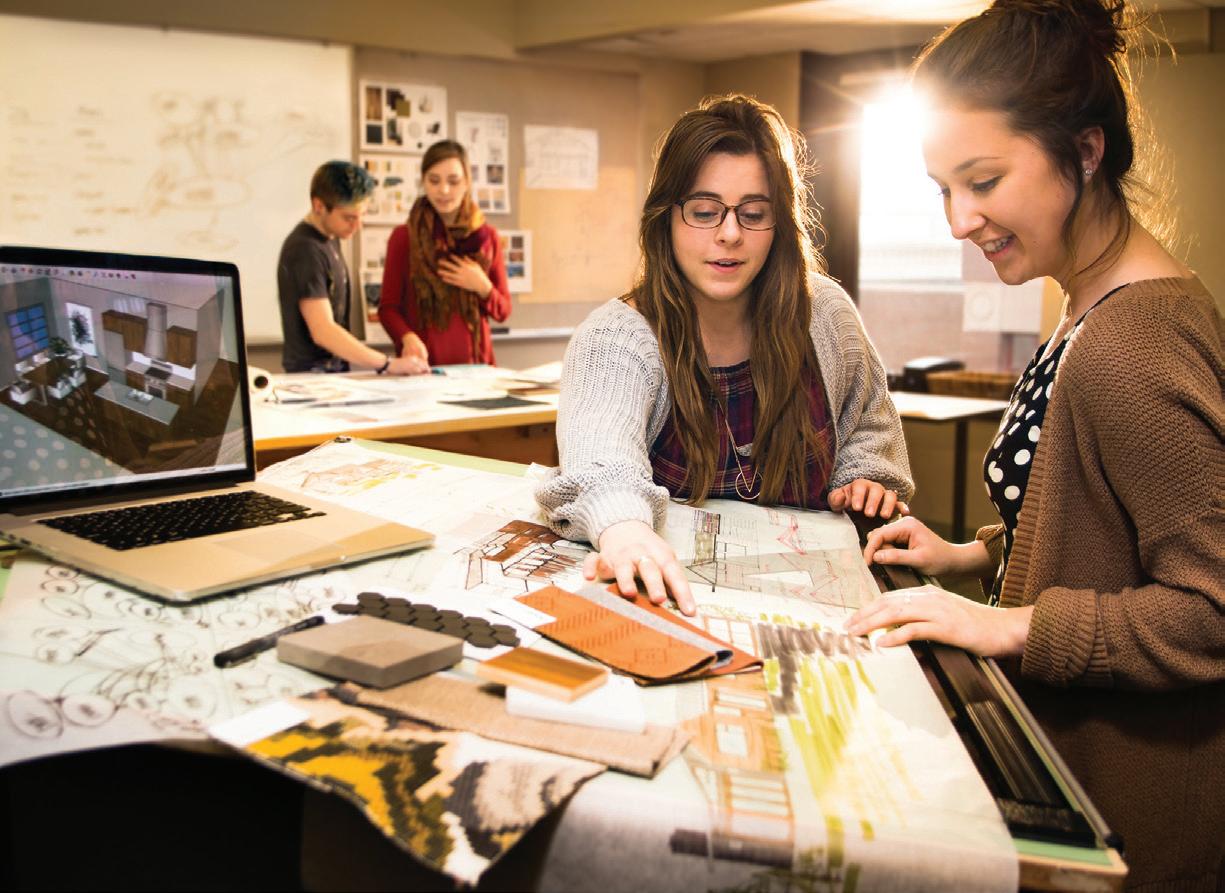

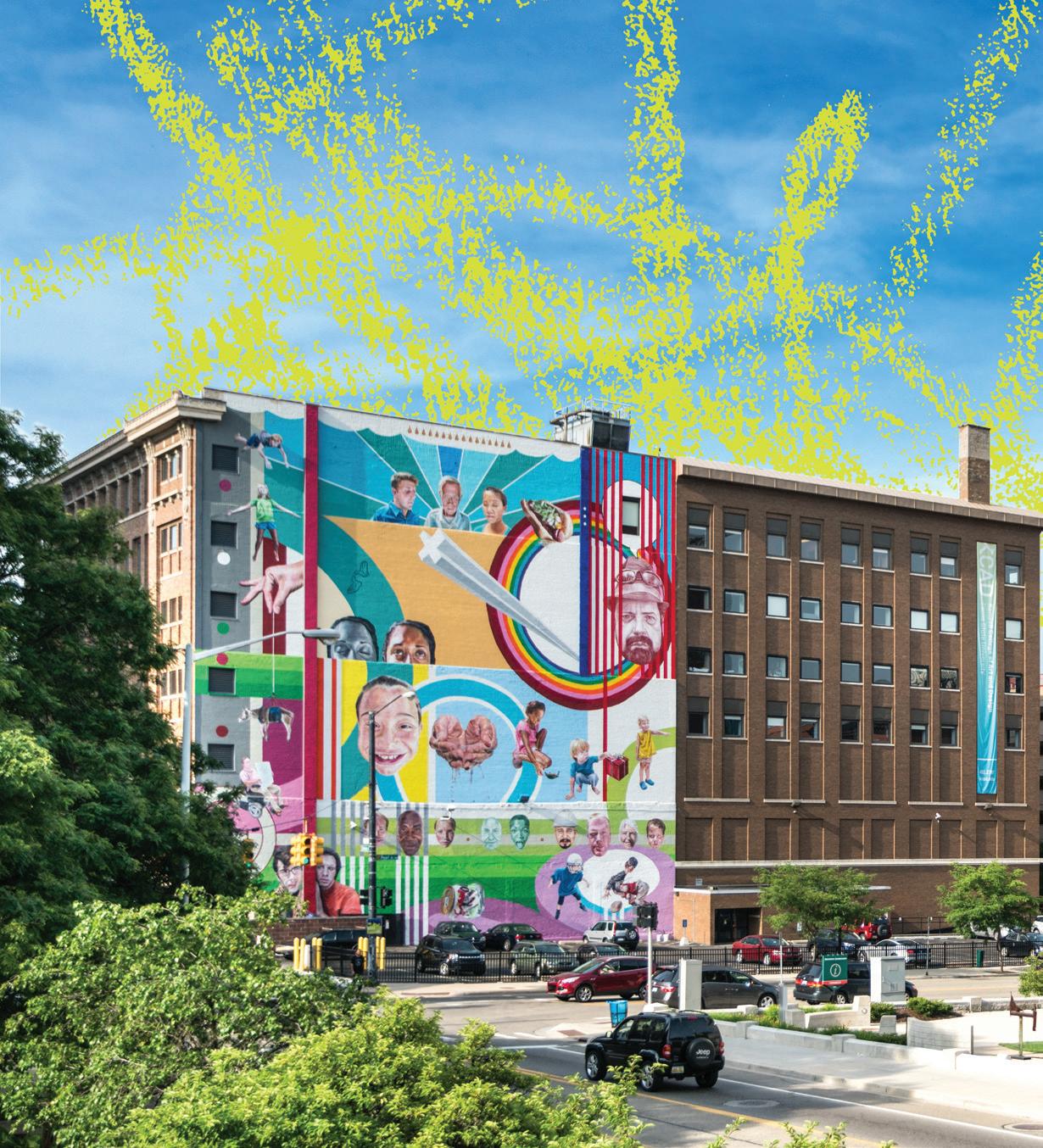

Working across the boundaries that divide us has been central to Kendall College of Art and Design of Ferris State University’s (KCAD) mission since its founding in 1928. From the college’s earliest days, fine artists studied and grew alongside those learning to design furniture, interiors and advertisements. Bound by a shared understanding of creativity as an exercise in both problem solving and communication, students and faculty alike were naturally drawn to exploring and interacting outside their own disciplines. KCAD graduates by extension emerged as more than successful creative professionals; they were becoming leaders who cared deeply about how their work connected to the world at large.
Today this collaborative spirit continues to shape KCAD’s dynamic learning community in the heart of downtown Grand Rapids, Michigan, USA. Programs like the BFA in Collaborative Design, Master of Arts in Design, and Certificate in Design and Innovation Management are driven by the idea that successful problem solving at any scale requires all fields that inform the problem to have a seat at the table. KCAD students are whole systems design thinkers who conduct in-depth research, interface with a diverse array of stakeholders and subject matter experts, and explore knowledge areas beyond their own to address problems from multiple perspectives and design solutions that satisfy multiple needs. And they graduate prepared for a 21st century workplace where this kind of human-centered collaboration is increasingly essential.
Complex and layered “wicked” problems like climate change and global hunger are growing more urgent by the day. They will not be solved by a single answer coming from a single area. But if we can collaborate with intentionality, empathy and passion, we can design a better future together.

Wege Prize grew out of a collaboration between Kendall College of Art and Design of Ferris State University (KCAD) and The Wege Foundation. As the retired chairman of the West Michigan office furniture giant Steelcase, Pete M. Wege (pronounced WEG-ee) had a passion for protecting the environment, an interest that inspired him to start The Wege Foundation in 1967. Throughout his life, Wege leveraged that passion and his business acumen to become the champion of “economicology,” the merging of economy with ecology.
When KCAD expanded into the Historic Federal Building in Grand Rapids in 2012, the foundation played a key role in establishing the Wege Center for Sustainable Design on the building’s fourth floor. Envisioned as a resource for both students and the community, the center empowers people to use art and design as vehicles for solving problems and telling stories of a sustainable community.
In 2013, the college and the foundation teamed up again to create the Wege Prize competition. This annual event invites students to collaborate on teams of five that connect members across institutional, disciplinary and cultural boundaries, using design thinking principles to develop economically feasible circular solutions for complex environmental problems while contending for cash prizes.
A decade later, we’re proud to celebrate the many triumphs of this program, including its growth into an international design competition, the collaborative spirit that has allowed students and expert judges from around the world to solve problems together, and, of course, the success stories embodied by student competitors who have gone on to change the world.
We hope you will enjoy learning about the innovation and persistence of everyone involved with Wege Prize. May their journeys inspire us all to work toward a more sustainable world.
DESIGN a powerful platform for students to connect and collaborate across disciplinary, institutional and cultural boundaries
EMPOWER participants with hands-on experiences addressing complex, layered, “wicked” problems through a systemic framework using design thinking methodologies
INSPIRE participants to carry the power of transdisciplinary collaboration out into the world SPARK greater dialogue around wicked environmental problems, sustainable development and circular economies
CATALYZE feasible, meaningful and sustainable solutions to real-world problems
Wege Prize teams are challenged to develop a product, service, business model or other solution to a wicked problem of their choosing that can also help power a transition from our current linear economy — in which we take, make and dispose — to a circular economy that’s restorative and regenerative by design.
Wege Prize teams must represent at least two academic institutions and at least three academic disciplines. Each teams’ first challenge is to build an agile, diverse team capable of viewing complex problems from a holistic perspective.
Each Wege Prize competition takes place over a nine-month period, enabling teams to focus intently on their work and dive deeper into the concepts and issues they’re grappling with.
The teams’ work is informed throughout the process by direct feedback from competition judges, who themselves represent different backgrounds, experiences and areas of expertise. Teams are also strongly encouraged to involve other mentors and subject matter experts in their work.
This is not a competition that pits finely tuned ideas against one another, but rather one in which inspired ideas can be vetted, built upon, strengthened and ultimately nurtured closer to real-world feasibility and implementation.
Teams are encouraged to address problems that are happening right in their own backyards or that they have a personal connection to — and many do. Other teams bring in projects on which they’re already working. An accessible and free platform for submitting work and receiving feedback ensures that any student, anywhere in the world, can participate.
By culminating in a professionally produced event in which finalist teams must present and defend their ideas in front of judges and live/online audiences, Wege Prize amplifies teams’ work for the world to see and provides a highly meaningful and confidence-instilling experience that stays with participants long after it’s over.
Wege Prize would not be possible without the support of our ever-evolving group of distinguished judges, whose contributions extend much further than simply choosing a winning project. Each year, our panel of judges works closely with the student teams throughout the four phases of their project.
Drawing upon their own perspectives and considerable experience and expertise, judges share feedback at every step to help students engage with wicked problems and enhance, expand and transform their ideas into feasible circular solutions that can change the world.
Our Wege Prize judges are global experts in a variety of areas including sustainable business, clean energy, industrial design, STEM education and other fields. Currently, 10 distinguished professionals serve as Wege Prize Preliminary Judges, helping to review the initial applications and move teams through to phase two. Another set of experts take it from there by serving as Core Judges, providing feedback to students throughout the remaining phases and ultimately determining the winners at the live finals event.
Please join us in thanking them for their immense contributions to the next generation of innovators.
Meritxell Martín i Pardo, or as she prefers to be called, Txell (pronounced “chell”), is a writer, researcher and professor. After working as a university professor for some years, she became a research associate for the Smithsonian Center for Folklife and Cultural Heritage. In addition to continuing to explore the relationship between the circular economy and living heritage in the Ellen MacArthur Foundation flagship learning program, Txell is a founding member of the nongovernmental organization The Cascade Collective for Cultural Sustainability as well as a professor of anthropological, cultural, and religious studies at IES Abroad in Barcelona. She holds an M.A. and Ph.D. in the history of religions from the University of Virginia and a B.A. in philosophy from the Universitat Autònoma de Barcelona. Txell is on the board of directors of Lluïsos de Gràcia.
Jo Williams is a circular economy learning consultant based in the U.K. She worked for the Ellen MacArthur Foundation for eight years, setting up and managing the higher education program. This included the world’s first CE fellowship program, an international yearlong program for graduate students blending online learning with a weeklong summer school.
Since 2018, Jo has been a senior tutor on the University of Exeter’s CE Masterclass, an online program for business executives. She has also developed and run CE workshops for various clients including the U.N.’s Switch Asia Leadership Program and Tsinghua University, China. Prior to this, Jo worked in science communication, developing content for exhibitions and events at the Science Museum in London, before running her own company working with museums around the world.
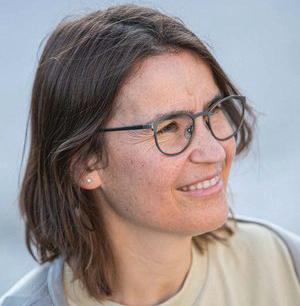
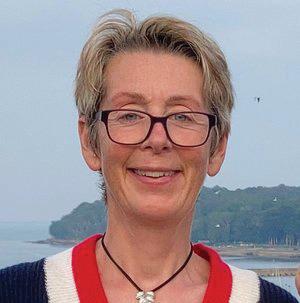
2021
Carrie Snyder designed and taught the Extension School course Introduction to the Circular Economy and is the founder of a circular economy consultancy. Her previous work experience includes extensive expertise in product take back, repair and reuse. During her previous career at Cisco Systems, she helped transform a US$8 million cost center into a US$100 million profit center through circular economy principles, and later was the director of a closed-loop supply chain.
Carrie’s client work ranges from advising high-tech companies in developing circular economy strategy to supporting a small country in achieving Sustainable Development Goals 12: Responsible Consumption and Production.
Carrie now brings her business expertise and academic interests to inspire students and organizations to advance the circular economy. She holds a bachelor’s degree in mathematics from Harvard College and an MBA from the University of Virginia.
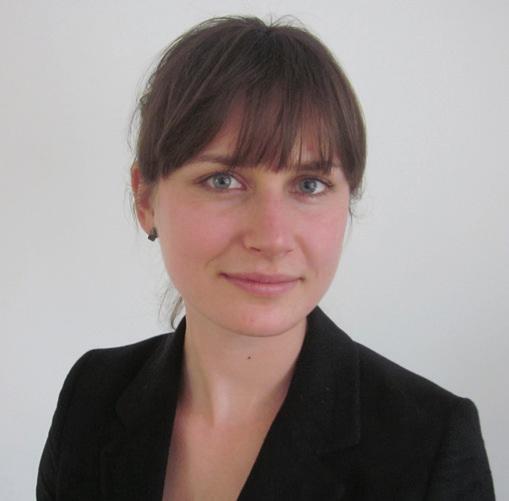
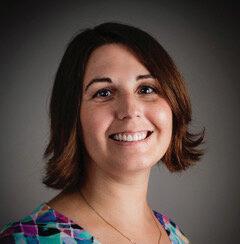
2018-present
Alysia (pronounced “ah-lee-shuh”) Garmulewicz is an associate professor of the circular economy at the Facultad de Administración y Economía, Universidad de Santiago de Chile. She is also an associate fellow at the CABDyN Complexity Centre, Saïd Business School, at the University of Oxford. Alysia is a founder and director of Materiom, an open platform for biomaterial recipes and property data. She regularly collaborates with the Ellen MacArthur Foundation, is a member of the International Society for the Circular Economy and is a regional co-chair of the Research Data Alliance. Alysia is a Rhodes Scholar and has a Ph.D. from the Saïd Business School, University of Oxford.
Preliminary Judge: 2018-2021
Core Judge: 2022-present
Bill Stough, founder and past president and CEO of Sustainable Research Group, has proven business skills in the design and implementation of sustainable development business strategies, creation of regional sustainable business networks, and creating baseline performance profiles for an organization’s ecological footprint and environmental and regulatory compliance. He has over 35 years of experience solving environmental problems, implementing sustainable business programs, and directing operational and marketing plans.
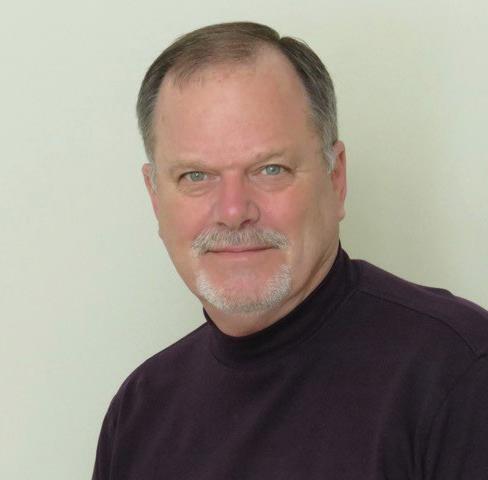
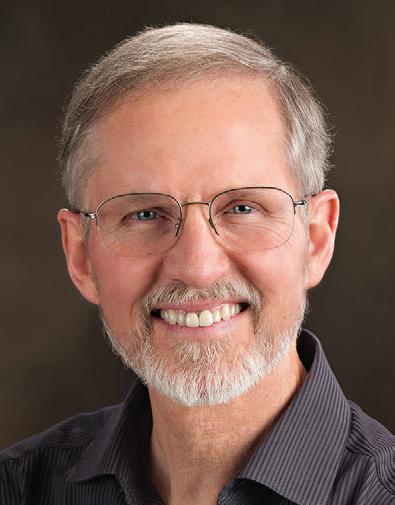
Preliminary Judge: 2018-2021
Core Judge: 2022-present
For more than 35 years, Tom Newhouse has been designing furniture, lighting, appliances and other products as the owner/principal of Thomas J. Newhouse Design, an industrial design consulting firm located in West Michigan. Prior to 1978, he was a member of the corporate design staff of Herman Miller Inc. He holds a degree in industrial design from the University of Michigan. Tom works primarily in the areas of home and office furniture, lighting, kitchen cabinetry, and major appliance design, with an emphasis on environmentally sustainable design practice. He currently holds over 90 design and utility patents. Tom lectures to professional design societies and universities internationally on the topic of environmentally sustainable design and his “four corners” design philosophy.
Christopher Carter is an educator, a seasoned animator/storyboard artist, and a nationally known and highly regarded sculptor of reclaimed and repurposed found materials.
His artwork has been shown in numerous solo museum, gallery and art fair exhibitions and is held in private collections and museums. Most recently, one major work was acquired by the new African American Museum of History Art and Culture-Smithsonian in Washington, D.C.
He was CEO/creative director of Maverix Studios (San Francisco and Tokyo, Japan) from 2007 to 2012, and twice won a Clio Award (the advertising industry’s highest award) for his animation work and art direction while at Colossal Pictures and Wild Brain Inc.
Christopher is also a trustee/board member of The Wege Foundation and resides in Miami, where he is constructing a multiuse mixed media art studio and exhibition venue implementing used shipping containers for the primary art production space.
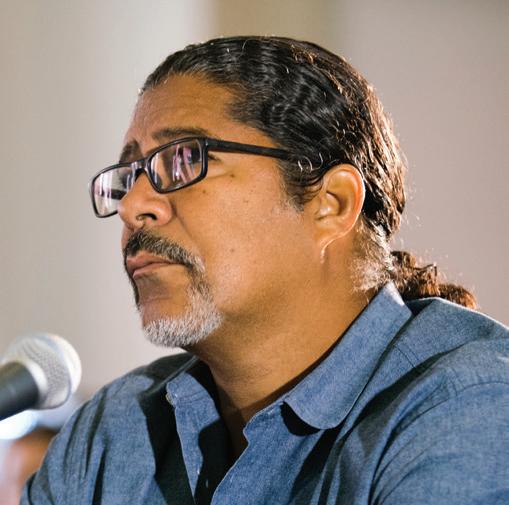
Colin Webster is an education program manager with the U.K.-based Ellen MacArthur Foundation. In this role, he introduces high school teachers and students to the circular economy, produces educational resources, and works with universities through the Foundation’s Schmidt-MacArthur Fellowship program. Prior to working with the foundation, Colin worked in secondary schools and in graphic design. He lives in Edinburgh, Scotland.


2014-present
Nathan Shedroff is an associate professor at California College of the Arts in San Francisco, where he founded the groundbreaking MBA in design strategy. This program prepares the next generation of innovation leaders for a world that is profitable, sustainable, ethical and truly meaningful by uniting the perspectives of systems thinking, design thinking, sustainability and generative leadership into a holistic strategic framework. He is a pioneer in experience design, interaction design and information design; is a serial entrepreneur; and researches, speaks and teaches internationally about meaning, strategic innovation and science fiction interfaces. His many books include “Experience Design 1.1,” “Making Meaning,” “Design is the Problem,” “Design Strategy in Action,” and the new “Make It So.”


2014-2015
Ellen Satterlee is former CEO of The Wege Foundation, a philanthropic pillar of West Michigan that was founded by Peter M. Wege in 1967 to support local efforts that enhance the lives of people while promoting and sustaining the health of the natural environment. From 1988 until her retirement in 2015, Ellen was counted on to manage The Wege Foundation’s activities, which have included (to name just a few) the support and funding of the Grand Rapids Art Museum (the world’s first LEED-certified art museum), the Aquinas College Center for Sustainability, Frederick Meijer Gardens and Sculpture Park, and two LEED-certified medical facilities: the Richard J. Lacks Cancer Center and the Hauenstein Center for Neuroscience. Ellen also served as treasurer and assistant secretary on The Wege Foundation’s Board of Trustees and oversaw the estate of Peter M. Wege.
Gretchen Hooker is a designer, educator, and senior manager of visual science communication at the Biomimicry Institute, a global nonprofit that empowers people to create nature-inspired solutions for a healthy planet. One of the institute’s best-known projects is AskNature, an online resource for innovators that provides free information on over 1,800 natural phenomena and hundreds of bio-inspired applications. Gretchen’s work at the institute focuses primarily on the Global Biomimicry Design Challenge and the development of educational resources that support the integration of biomimicry into academia and professional practice. She holds a master’s degree in industrial design from Rhode Island School of Design and is a certified biomimicry specialist.
Michael Werner is the lead for circular economy and global sustainability at Google and a member of the board of directors for Healthy Building Network at Rheaply, a resource exchange and management platform to scale reuse and the circular economy within organizations. Having decided to give up the life of a pharmaceutical chemist, he has been dedicated to eliminating toxic chemicals from consumer products instead of creating them. He has worked in the green building and products space for many years, including with renowned architect Bill McDonough. Michael is also an advisory board member for Materiom, an open platform for biomaterial recipes and property data founded by fellow core judge Alysia Garmulewicz.


Michelle Seppala Gibbs is the director of the Office of Sustainability at Hope College. In this role, she coordinates strategic planning, implementation, analysis and communication of campus sustainability initiatives by working with faculty, staff, students, alumni and community stakeholders. She also oversees a team of a dozen student interns focused on promoting sustainability across the campus.

Before joining Hope College in 2014, Michelle served as the Next Generation Energy coordinator for Lakeshore Technical College in Wisconsin. Prior to that, she worked as an environmental scientist for an environmental consulting company, and while in college she also worked for the Michigan Department of Environmental Quality in the departments of Environmental Education and Land and Water Management. Michelle has a bachelor’s degree in zoology with a specialization in environmental studies from Michigan State University and a master’s degree in sustainable management from the University of Wisconsin-Green Bay.
John Kinch directs the strategic and daily operations of Michigan Energy Options (MEO), a clean energy nonprofit emphasizing innovative and collaborative projects between the public and private sectors. Under Kinch, MEO’s community-based work has expanded across the state and its revenue stream has diversified. MEO built a community solar park on a capped landfill — one of a few in the country owned and operated by a nonprofit. Kinch is a U.S. Department of Energy SunShot advisor and a National Community Solar partner, a municipal-certified solar expert by the National Renewable Energy Laboratory, and a local clean energy consultant for the Council of Michigan Foundations; he has also been a renewable energy consultant for The Nature Conservancy. He presents often to professional, academic and general audiences.

2022-present
Wendy Schlett, a senior sustainability manager with over 20 years of experience in the environmental consulting field, received her bachelor’s degree in hydrogeology from Western Michigan University and a professional certificate in sustainable business from Aquinas College. Wendy assists manufacturers, nonprofits and mining companies in creating strategy, identifying and prioritizing risk, and implementing sustainability and environmental business standards. She also implements ISO 14001:2015 Environmental Management Systems and ISO50001:2015 Energy Management Systems and conducts internal audits for manufacturers. She is active in Business +Institutional Furniture Manufacturers Association (BIFMA) and West Michigan Environmental Action Council and was an associate board member of the Michigan Aggregate Association from 2012 to 2017.

2021-present
Kristen Wieland is a senior consultant with Resource Recycling Systems (RRS), where she brings over 20 years of experience helping municipal, institutional and corporate partners reduce waste, grow the circular economy and promote sustainability. As a member of the leadership team in Kent County, Michigan, she led strategic communications and stakeholder engagement for the ambitious “90% by 2030” landfill diversion goal that included innovative approaches to sustainable materials management. Kristen applies her skills of community engagement, solid waste management planning, environmental education curriculum development and collaboration to help individuals, organizations and the community work together to achieve sustainability goals.
2021-present
Lisa Oliver-King, MPH, is the founding executive director of Our Kitchen Table (OKT), a grassroots organization based in Grand Rapids, Michigan. With funding provided by the W.K. Kellogg Foundation, OKT is developing a set of best practices and evidence-based applications for how community women can improve health and wellness by building a healthy neighborhood food system. Essentially, OKT is addressing the diet-related and environmental health disparities that impact women and their families. Information learned and documented will be used to help vulnerable children, their families and the neighborhoods in which they reside. This information will lead to residents gaining a better understanding of their local food system, learning how to address systemic change in order to become food secure, and building neighborhood-based sustainability.


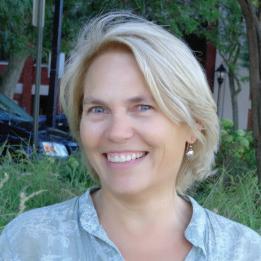

Mary Ellen Mika is director of Sustainability for Steelcase Inc., the global leader in the office furniture industry. She leads a team responsible for the company’s overall sustainability programs including its energy, renewable energy and climate change response strategies; managing compliance with environmental regulatory requirements for products, facilities and operations including implementation of the company’s ISO 14001 environmental management system and addressing environmental due diligence for potential acquisitions; pursuing product certifications for sustainability and indoor air quality; tracking and reporting waste, water, energy, recycling and composting efforts; and setting goals for continuous improvement.
Wendy Ogilvie is the director of Environmental Programs for the Grand Valley Metro Council (GVMC), which she joined in 2013. GVMC is an alliance of governmental units in West Michigan committed to collaboration and coordination of governmental services. Wendy came to GVMC to create its Environmental Programs Department, bringing her expertise of over 25 years in watershed and stormwater management and also her passion for convening and developing partnerships to build capacity in addressing environmental issues.
At GVMC, her programs include the facilitation of 23 National Pollutant Discharge Elimination System municipal stormwater permits in Kent and Ottawa counties, implementing the strategic plan for the Lower Grand River Organization of Watersheds (LGROW), and assisting the project team in bringing back the rapids and restoring connectivity and habitat in the Grand River, working with Grand Rapids Whitewater and its many partners.
and 2022-present
David Rinard retired in 2016 as director of Global Environmental Performance for Steelcase Inc., the global leader in the office furniture industry. He currently serves in a project manager role in a phased retirement plan. Steelcase delivers a better work experience to its customers by providing products, services and insights into the ways people work. Its portfolio includes architecture, furniture and technology products. During his 38-year career at Steelcase, Dave served in a variety of roles and led the department that was responsible for overseeing the company’s environmental initiatives and performance and implementing corporate environmental strategy, including regulatory compliance, environmental management systems, sustainability programs, environmental outreach and responsible conduct programs.
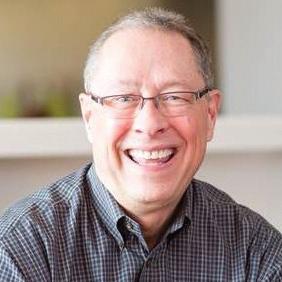
Keli Christopher, Ph.D., is currently the executive director of the STEM Greenhouse, an organization she founded in 2014 to prepare vulnerable children for careers in science, technology, engineering and mathematics. Keli was educated in Grand Rapids Public Schools and graduated from Ottawa Hills High School. After graduating from North Carolina A&T State University, she pursued both master’s and doctoral degrees in agricultural engineering at the University of Illinois at Urbana-Champaign. Keli has worked as an engineer for the USDA Natural Resources Conservation Service and the Kent County Conservation District. She has served as the national president of Alpha Epsilon Honor Society for Agricultural Engineers and currently serves on the board of the West Michigan Environmental Action Council.
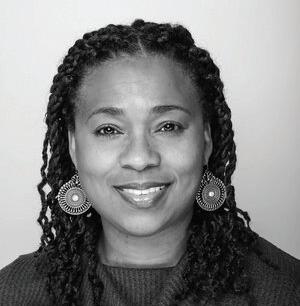
Terry Link is a retired (sort of) sustainability professional and former academic librarian. He co-founded and led the American Library Association’s Task for the Environment in the 1980s. Later, he founded Michigan State University’s Office of Campus Sustainability, which he led for a decade. He has written and spoken frequently on issues of sustainability, peace and citizenship, and served as associate editor of the two-volume encyclopedia Achieving Sustainability Visions, Principles and Practices. He is currently active on the boards of several organizations. He also blogs occasionally.
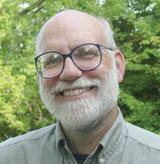
Jennifer Wammack joined the Business and Institutional Furniture Manufacturer’s Association (BIFMA) in the fall of 2017 as director of Outreach. She is a design-centric brand ambassador who educates the marketplace on BIFMA’s impact on the commercial built environment. As the trade association representing business and institutional furniture manufacturers, BIFMA’s work includes marketing analysis and development of product performance and safety standards. Jennifer is among the organization’s champions for LEVEL, the robust sustainability standard used across the contract furniture industry.
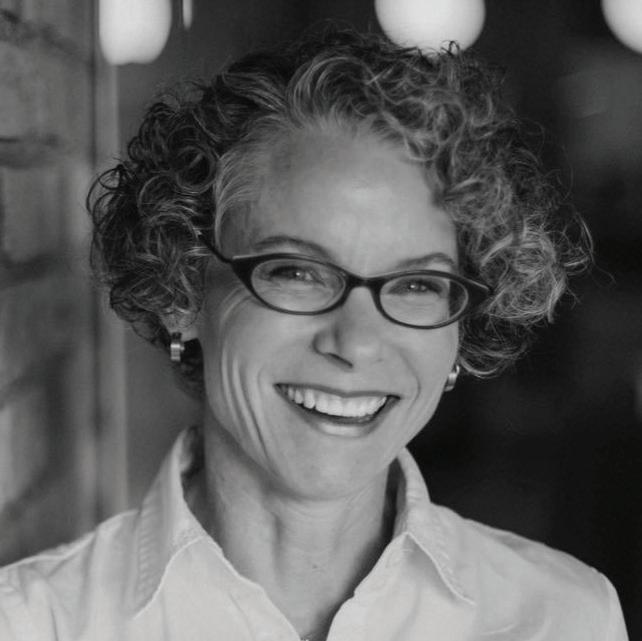

“When you look at the problem and challenge we’re facing ... it’s very multifaceted. There are resources and material goods, there are economies and business plans. I was interested in seeing how well teams could communicate the complexity of the problem and begin to create a solution.”
2014
“In all the teams, there was a real willingness to collaborate and engage with very complex concepts and ideas. And most importantly, each showed a desire to improve their solutions beyond this competition and to continue to refine their understanding of the circular economy.”
2015
“These students are the change agents we need embedded in our businesses and communities; they are prototyping better ways of doing things. The students who succeed in Wege Prize are risk-takers and rabble-rousers who are constantly challenging the established norms of business and the systems around us. They won’t stop until they realize a better future.”
2016
“In the earlier years, we were always saying to people, look, this is not a competition about sustainability but a competition about the circular economy, and there’s a crossover but they’re not necessarily aligned. This time around, the starting knowledge of the circular economy amongst the teams that submitted was very high, the highest we’ve seen so far.”
“It’s all about the implementation of the idea. So, what we’re looking for is some evidence that you’ve implemented parts of it and you’ve learned from that implementation, from that prototype, and that then is helping you refine and prove whatever it is that you’re trying to do.”
NATHAN SHEDROFF2018
participants in a process of innovation and change, focused on a wicked problem that is highly complicated and interdisciplinary, and you are going through this with us by getting feedback. You are in the middle of an innovation process.”
MICHAEL WERNER2019
“I think it’s very encouraging to see a more decentralized grassroots competition that is allowing students who know their own environment and know their own resources around them come up with solutions that are more in touch with their own local ecology.”
“It’s wonderful to see how participants have been able to take some of our advice and use it and where you take us on that journey. You’re taking us through your story so you’re able to articulate clearly and show us examples of the wicked problem and how your solution fits in. It’s very interesting to see.”
“The circular economy isn’t all worked out yet, and that’s where these student teams come in. ... You’re the ones who will be implementing this, so you can be part of that conversation, part of that journey, in helping to formulate what the circular economy really is.”
“That’s what Wege Prize is about. It’s about training
JO WILLIAMS 2022
TO DATE, WEGE PRIZE HAS ENGAGED
765 PARTICIPANTS
NOTABLE PARTICIPATING INSTITUTIONS
223 ACADEMIC INSTITUTIONS
47 COUNTRIES by Participant Citizenship
49 COUNTRIES by Institution Location
347
UNIQUE ACADEMIC DISCIPLINES
African Leadership University
American University of Sharjah
Beijing Normal University
Brown University
Carnegie Mellon University
Cornell University
Delft University of Technology
EARTH University
Ewha Womans University
Hong Kong Polytechnic University
Kwama Nkrumah University of Science and Technology
Lund University
Makerere University
Michigan State University
MODUL University Vienna
Parsons School of Design
Politecnico di Milano
Pontifical Catholic University of Chile
Princeton University
Rice University
Tecnológico de Monterrey
Tsinghua University
Universidad de São Paulo
University of British Columbia
University of California, Berkeley
University of Michigan
University of Modena and Reggio Emilia
University of Pennsylvania
University of Seoul
University of Tehran
Yale University
MexicoUnitedStatesNicaraguaCanadaCostaRicaColombiaChileBrazilGhanaUnitedKingdom
FranceNetherlandsNigeriaSwitzerland
NigerDenmark
ItalyCameroonAustriaSwedenHungary
Norway
Egypt
ZimbabweRwandaUganda
IsraelMalawi
BY PARTICIPANT CITIZENSHIP
Mexico
UnitedStatesCanada
Panama
Ethiopia Germany
Turkey Kenya
Tanzania
ArmeniaSaudiArabia Iran
United Arab Emirates
MauritiusPakistanRussiaIndia
Bangladesh
HongKongIndonesia
TaiwanSouthKorea
China Australia
BY INSTITUTION LOCATION
Chile Brazil
Great Britain
ArgentinaIvoryCoastGhana TogoNigeriaNigerGermanyGabon
Italy
CameroonNorway
Congo Egypt
PolandSouthAfricaUkraineZimbabweRwanda
Bulgaria
RepublicofSudanUganda
Tanzania
Malawi
TurkeyLebanon
Syria
KenyaEthiopiaIraqArmeniaIranPakistanIndia
Bangladesh
ChinaMalaysia
Indonesia
TaiwanPhilippines
New Zealand
Immersing participants in the concept of the circular economy, introducing them to transdisciplinary collaborative problemsolving and design thinking strategies
Helping participants expand their professional network, giving them the opportunity to build skills and experience to bolster their resumes and become more agile and versatile in the job marketplace
Helping teams refine their ideas via direct feedback from expert judges, nurturing their entrepreneurial endeavors with expert feedback and funding, witnessing the resulting social value created by ideas that move forward by participants who bring new skills, perspectives, and problem-solving strategies into other work in which they’re involved


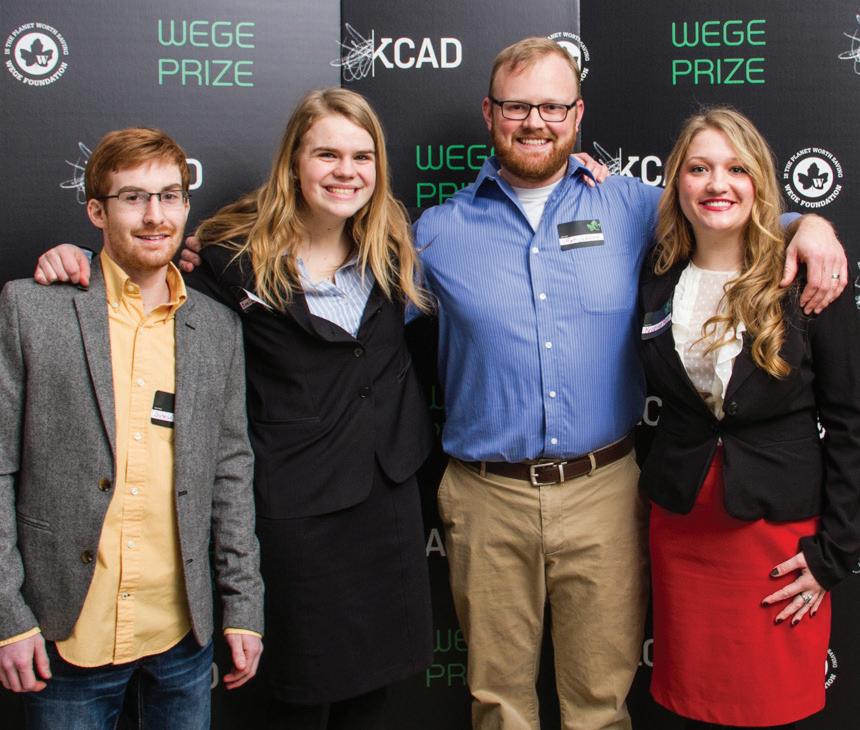
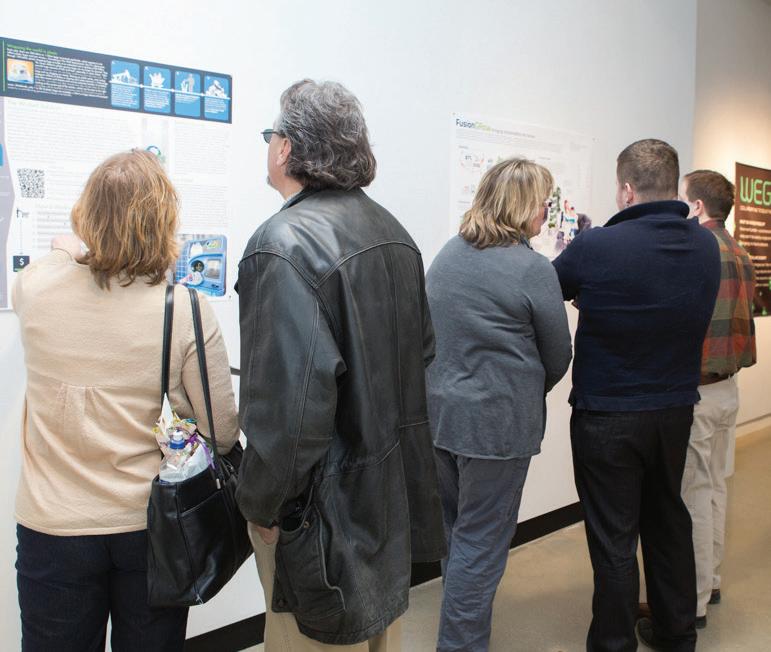
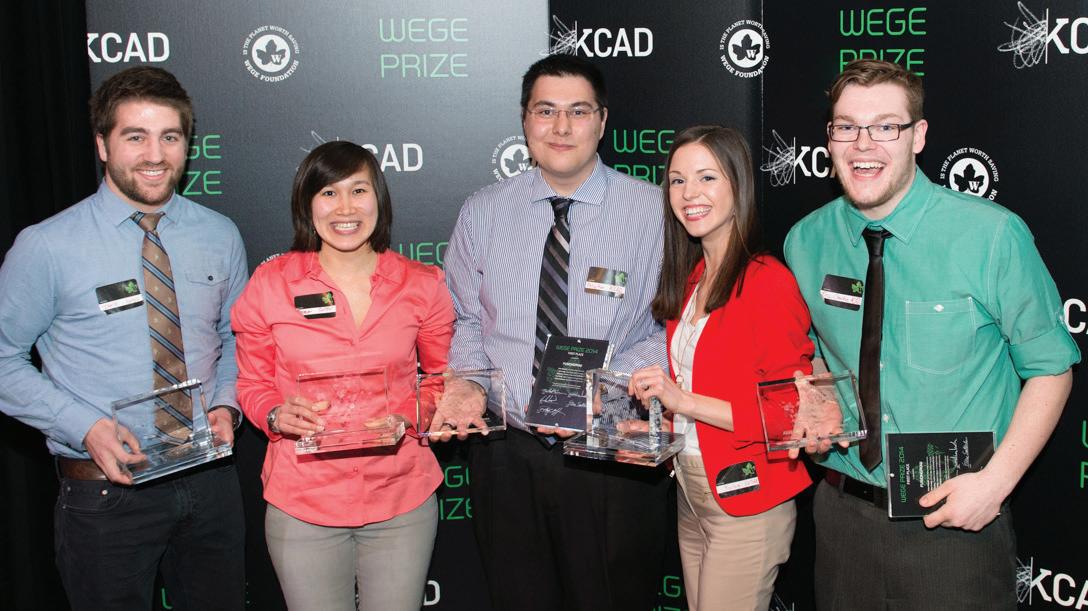

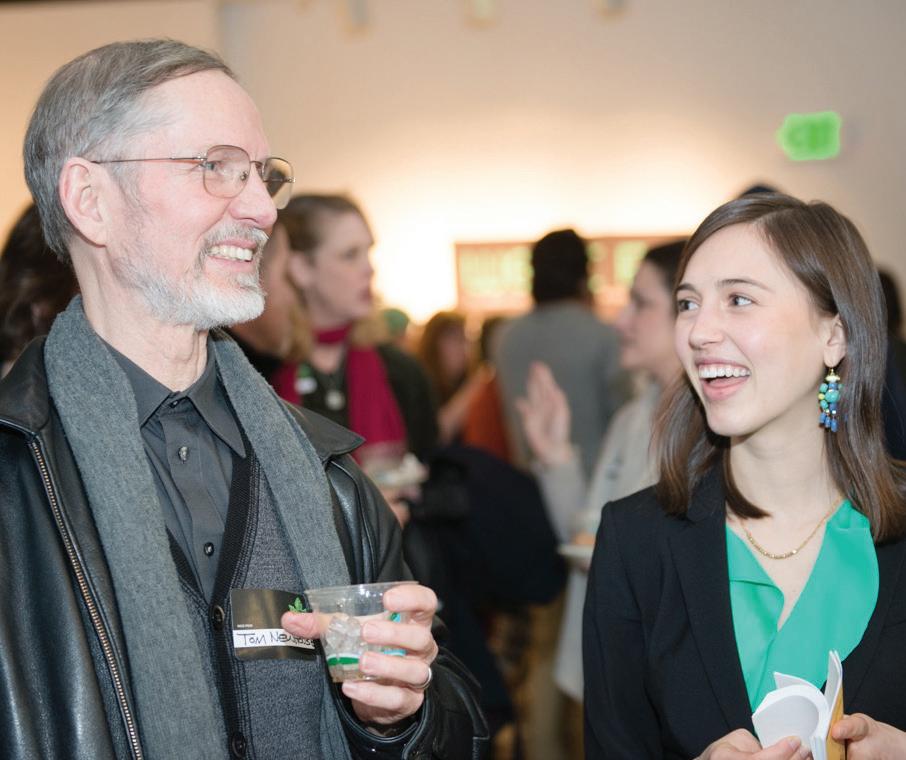
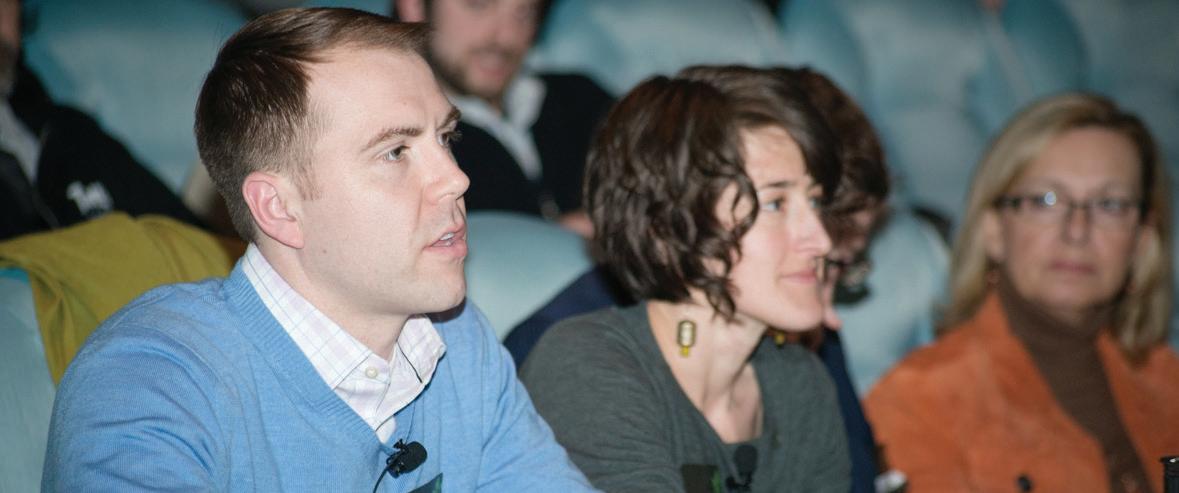
A partnership begins between The Wege Foundation and KCAD to bring Wege Prize to fruition.
Designed to find collaborative solutions to complex “wicked” problems, Wege Prize brought together student teams from West Michigan colleges.
Based on the principles of design thinking, the program was developed to be scalable, growing year after year.
FusionGRow designed a compact and efficient in-home hydroponics system that aims to reduce consumer dependence on large-scale commercial farming.

WICKED SOLUTIONS INC.
Wicked Solutions Inc. outlined a plan to eradicate the use of low-density polyurethane plastic bags at grocery stores by manufacturing a new kind of bag made from polylactic acid (PLA) and creating a system through which the new bags could be collected and reprocessed.

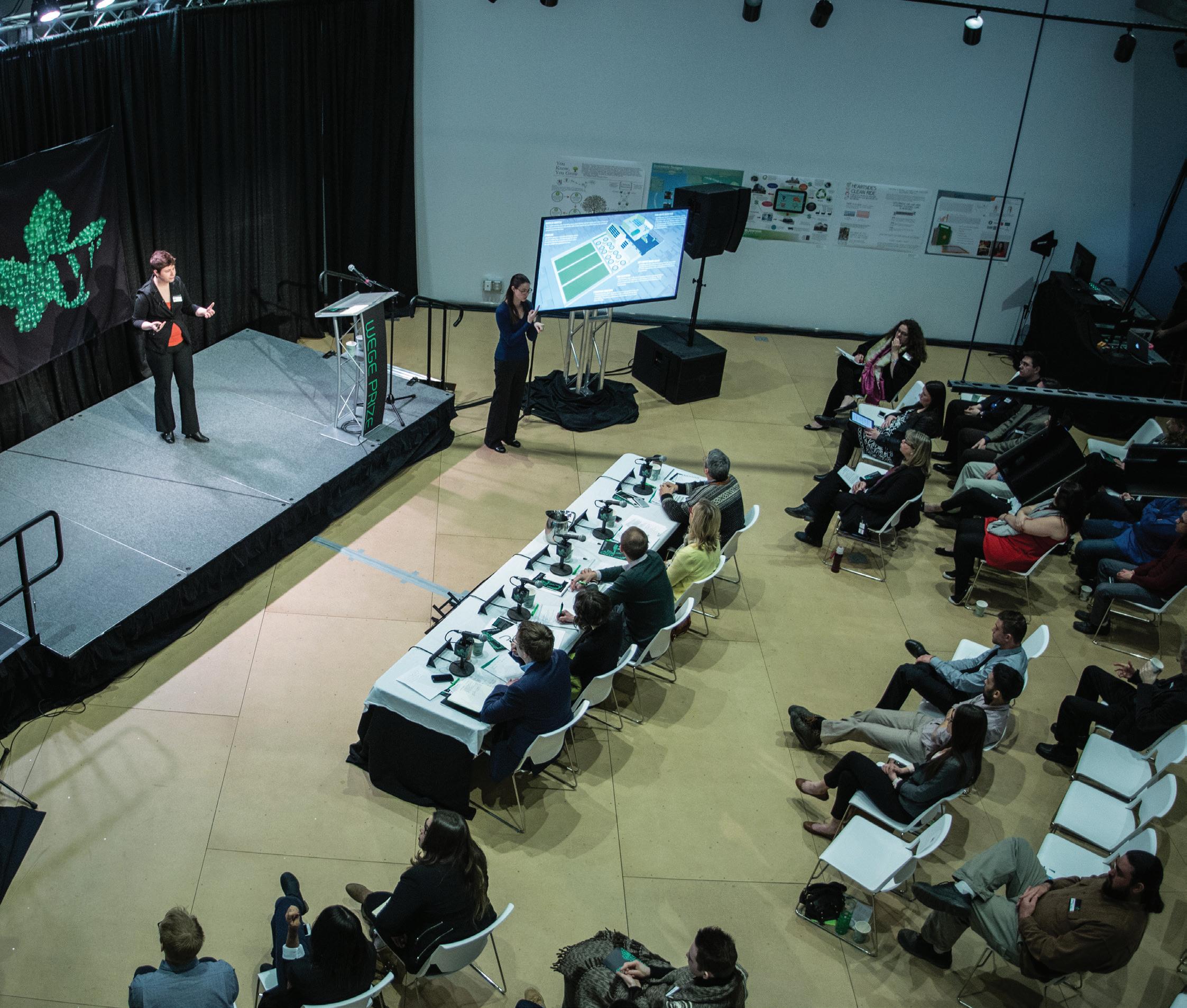

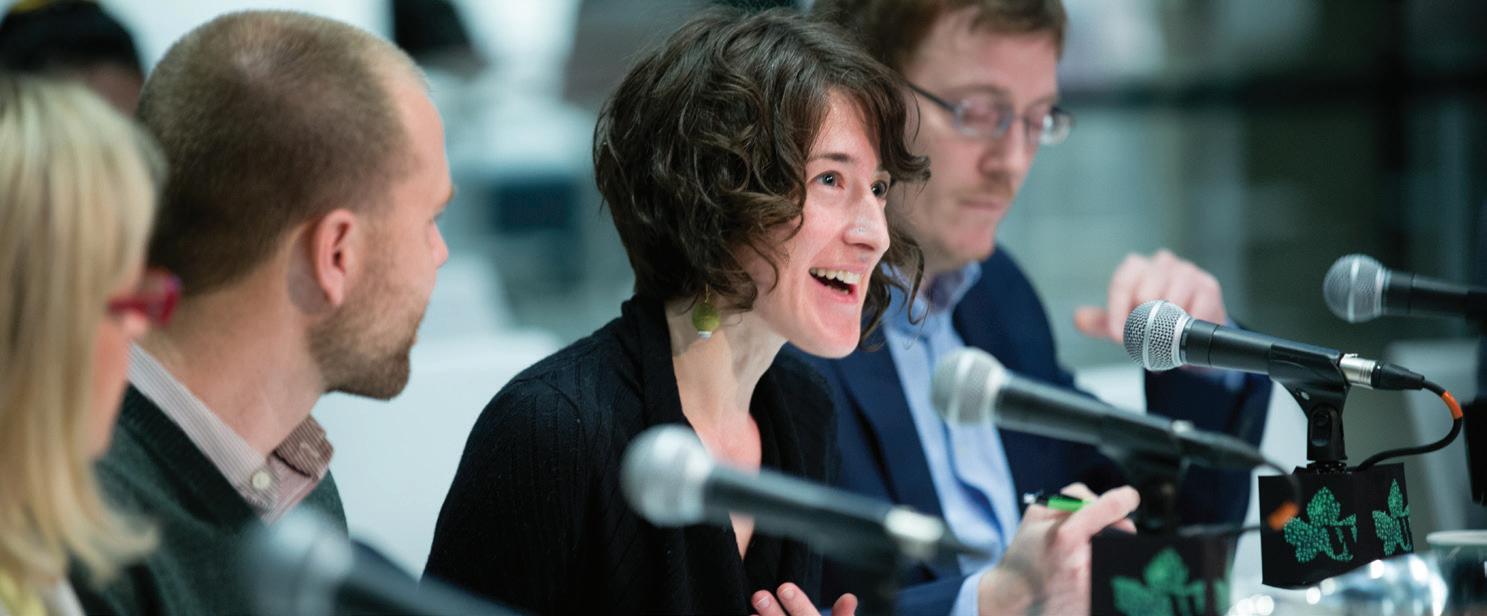
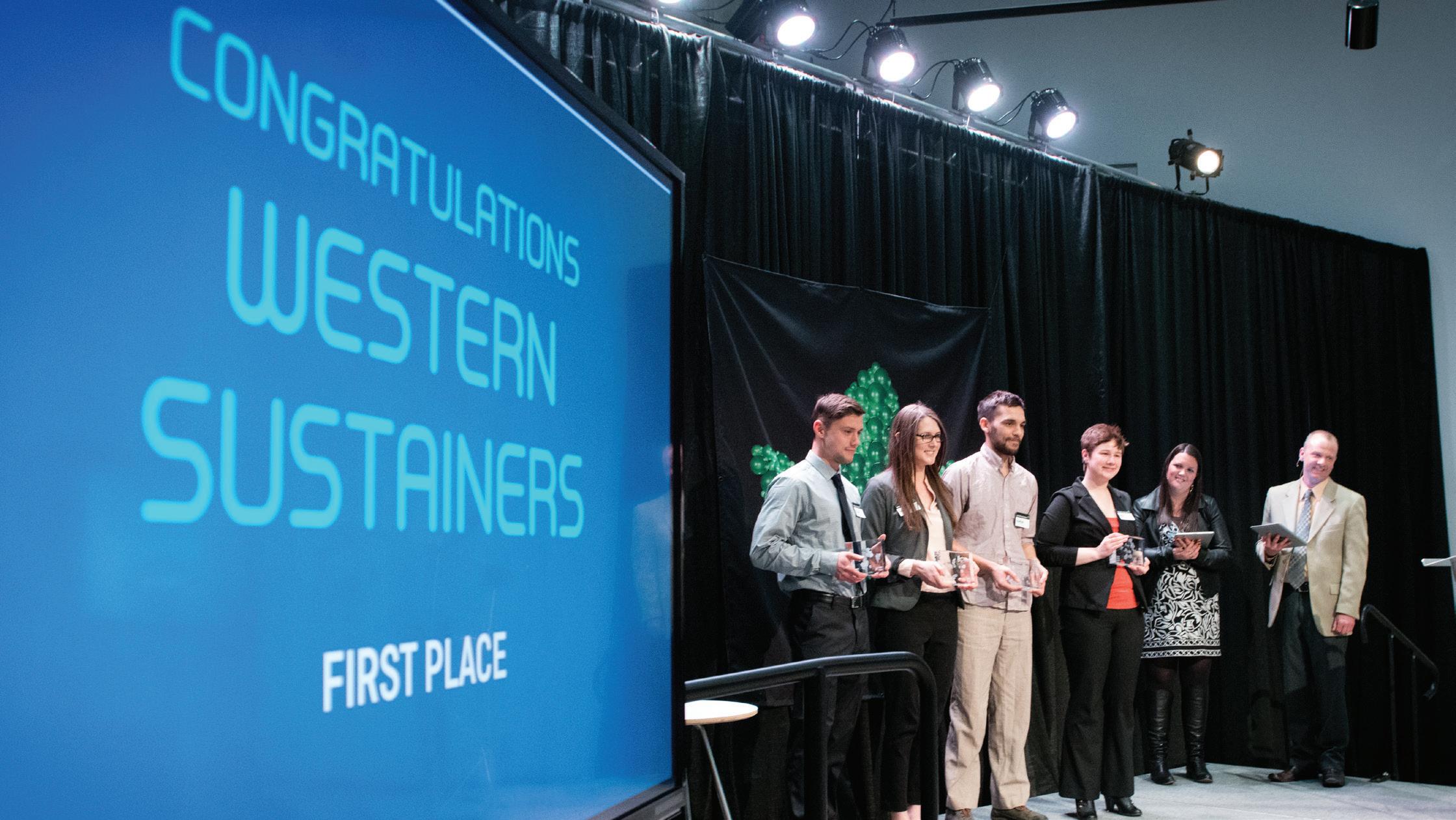
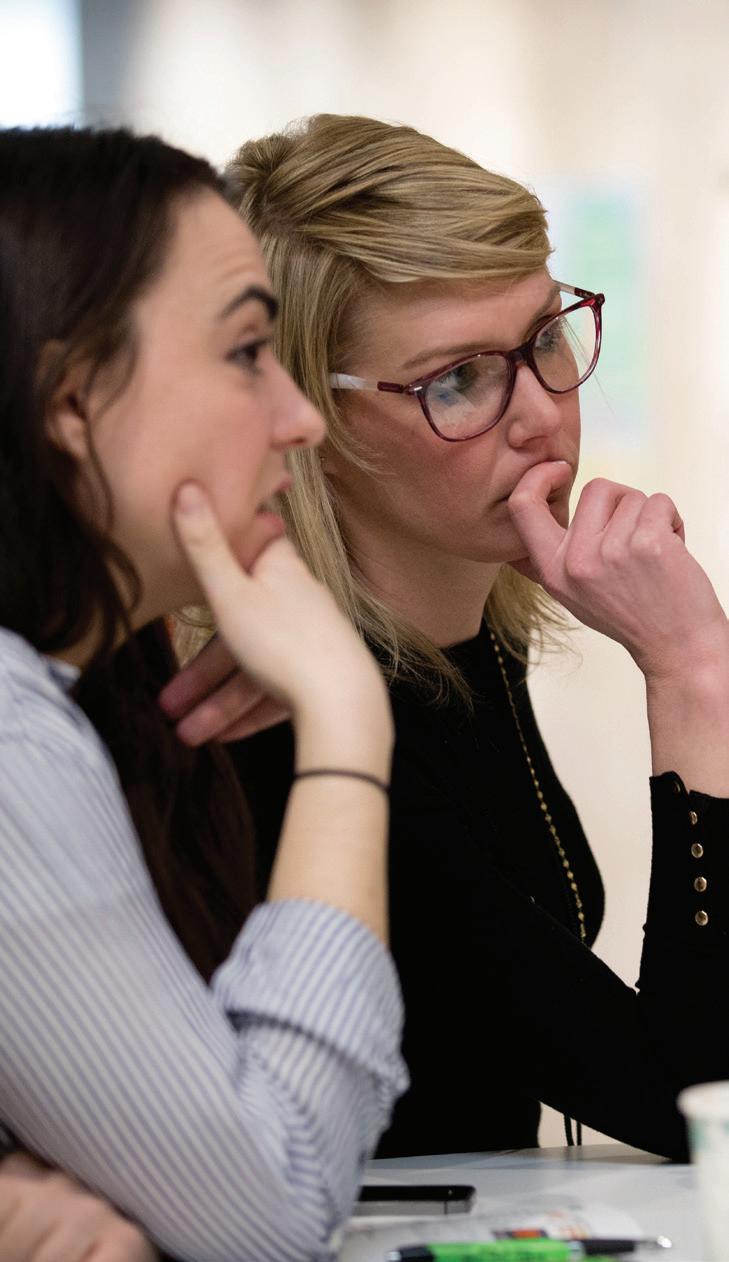
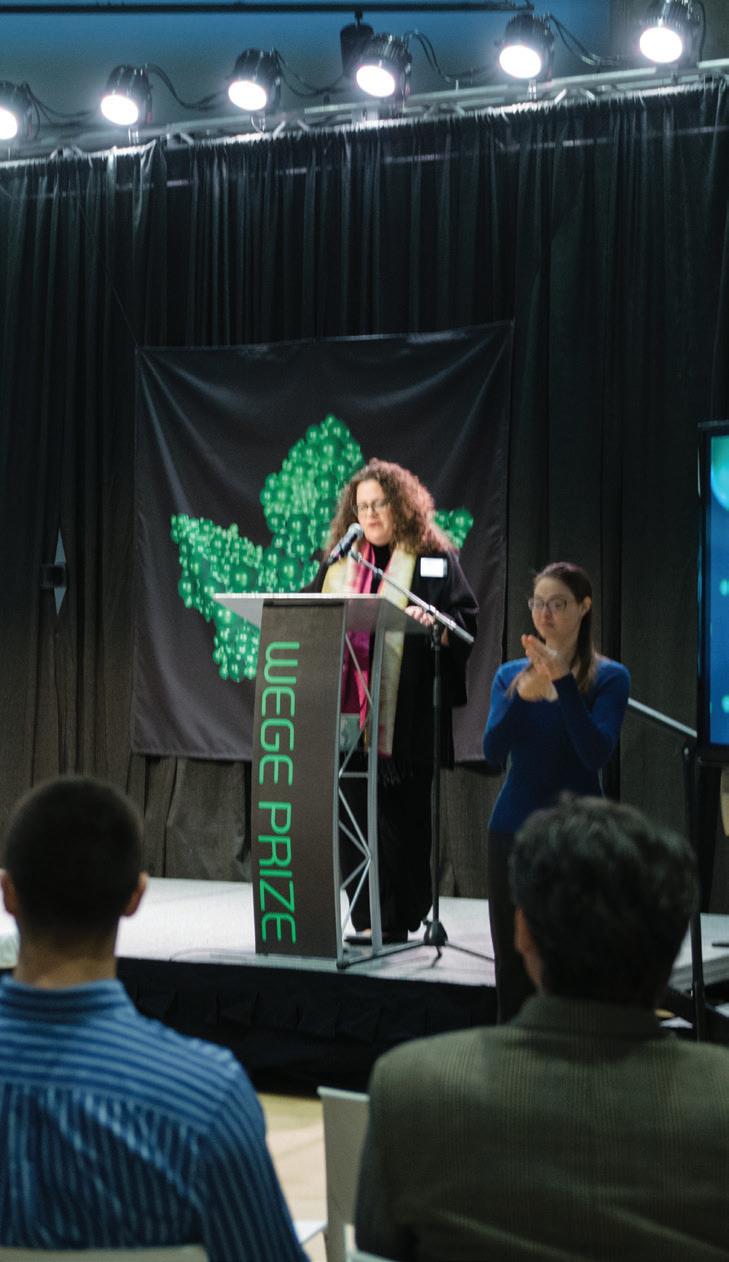
Expanding from its local stage, the competition opened up to students all over the U.S., with representation from 16 different colleges and universities.
Designing for the circular economy, this year’s challenge brought circularity to the forefront.
Addressing distance learning opportunities, judges engaged in online conversations to connect with students wherever they were.
Our current food system is cradle to grave. We mine the earth for its resources, ship them around the country, re ne them, ship them again, grow our food, ship it to consumers, and create vast amounts of food waste in the process. Using currently available technology, we can do better for the people & the planet.
95,000 tons
of food is wasted everyday in the United States, equivalent to 1,357 two story homes
On average,
Ocean sheries have had declining returns for the past ve years, resulting in higher prices
We poison our water and land with fertilizers, pesticides, and herbicides.
MARBLED CRAYFISH
The
of the annual expenses of aquaculture are feed related
Water can be used
more e ciently than more traditional forms of agriculture using hydroponics
This agricultural system was designed using whole systems thinking to be a symbiote with the surrounding community. Using complementary systems, the economic, environmental, and biological e ciencies of the overall whole are increased. These increased e ciencies allow the production of fresh, healthy, local, and sustainable sh and vegetables that are a ordable to the community, and eliminate many of the negative impacts associated with existing food production and consumption. Designing a two-acre facility that is representative of the average city block, the system is both modular and scalable enough to feed any size city, while mimicking a food production system and method of access most people are familiar with. The facility is intended to foster greater interaction among community members and develop a greater sense of connection between people and their food.

SPIRULINA
Spirulina is grown in a separate recirculating system, and fed compost teas and concentrated sh waste.
Harvested spirulina is processed with black soldier ies and cray sh into a pelleted sh feed.
Weekly onsite, this system:
• Converts 28.38 tons of food waste into sh feed
• Produces 19,036 heads of lettuce

• Produces 997 lbs of tilapia
• Composts 100 tons of agricultural waste

• Produces 1.35 tons of sh feed
Everyday,
as a fertilizer for spirulina growth, the frass used either as feed for the marbled cray sh or fertilizer, and the larvae used as a feed component.



Unwanted yard waste and animal manure from the community goes into the compost heating system, generating heat for the sh tanks and providing a rich, composted soil for local farmers and gardeners.
FISH CULTIVATION
After the initial stages of life, sh are transferred from the warehouse hatchery to the cultivation area where they mature and grow to market size. The hot compost water heater keeps water in the tanks at optimal temperatures for tilapia growth.
HYDROPONIC GROW BEDS Using hydroponics, plants are grown for human consumption in trays that oat above the aerated, nutrient dense water supplied by the sh tanks and bio lters. The plants simultaneously clean the water before it is sent back to the sh.
ing a number of sustainability issues involving fertilizers, animal feeds, and organic waste management. BSFL have a quicker composting rate than more conventional methods of composting, such as hot composting or vermicomposting (composting using worms), and will happily eat most organic matter. They act as a nutrient dense food, high in protein and fat content, and are fed to the sh. The residual waste, called frass, is also nutrient dense and can be used as animal feeds or plant fertilizers.
FISH CULTIVATION
Tilapia are widely researched and proven aquaculture candidate, and come in a variety of colors. They have a shorter life cycle and reproduce quicker than other cultured sh. They are also a hearty sh, tolerant to a wide range of temperatures and water qualities. Being a white sh, they are easy to cook with and thus highly sought after in the market.
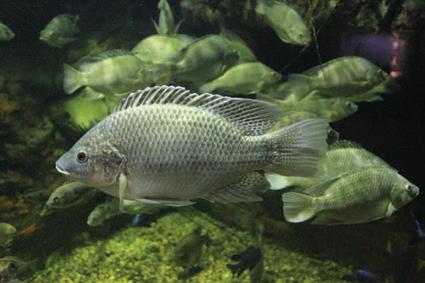
HYDROPONIC GROW BEDS
Plants that require high levels of nitrogen work well in this system. Roots hang into the aerated water beneath the oating rafts and absorb nitrogen in the form of nitrates, which is converted by bacteria that process waste ammonia. Lettuce, mixed greens, and herbs have proven predictably successful in this type of system, and the demand for fresh, local, clean, and sustainable grown produce is on the rise. Roots and other plant waste are composting through either the black soldier y or hot compost pile after harvest.
MARBLED CRAYFISH

Marbled cray sh are a recently discovered species of crustacean, that reproduce through parthenogenesis, making all cray sh genetically identical clones. They are less aggressive than other crustaceans, making them ideal for tank environments. They are fed black soldier y frass and spirulina, but being omnivorous scavengers, they process undigested sh waste as a supplemental feed source. In this system they are used in as a feed component, but could be raised for human consumption if market demands are present.
SPIRULINA
Spirulina is a nutrient dense photosynthetic bacterium, high in protein and amino acid content. The spirulina is cultivated in a separate recirculating system, consisting of cylindrical tanks and airlift pumps that provide aeration and ensure even access to light. The spirulina culture is supplemented with sh waste and compost teas that provide the necessary nutrients and create a highly alkaline environment ideal for growth. The spirulina is pelletized along with the black soldier y and marbled craysh, and fed to the sh.
HOT COMPOST WATER HEATER
Hot compost piles can accept any type of organic material, making it a valuable addition to any area that produces excess food or animal waste. The composting process produces heat up to 170° F e ectively destroying harmful pathogens that may be present in the feedstock. The heat generated in from the compost process is contained primarily as hot water and air vapor. This heat is transferred through a heat capture pad and radiant and the heat then pumped to the sh tanks.
Western Sustainers presented Local Loop Farm, an agricultural system designed to act in symbiosis with its surrounding community, utilizing hot composting, hydroponics and other innovative technologies to produce fresh, healthy, local and affordable fish and vegetables while upcycling waste and eliminating many of the negative impacts associated with existing food production and consumption.
soldier y are a small non-pest insect native to North America, capable of solv-
cray sh are fed a diet of spirulina, black soldier y frass, and sh waste solids. Each of these are collected and transferred to the cray sh daily. Excess cray sh not used for breeding are harvested and pelletized into sh feed.
food waste is gathered from the community, which is then distributed to the black soldier y larvae (BSFL) bins. Excess liquid is used






Pixelation presented NOW Delivery, a food delivery service that’s designed to change the food consumption and purchasing norms of the urban office worker by reducing packaging waste, food waste and delivery service fuel emissions.



The Originals presented Organikos, a service designed to remove the barriers that make composting difficult or inaccessible by combining an energy-efficient in-home composting appliance with a user experience-driven web platform.







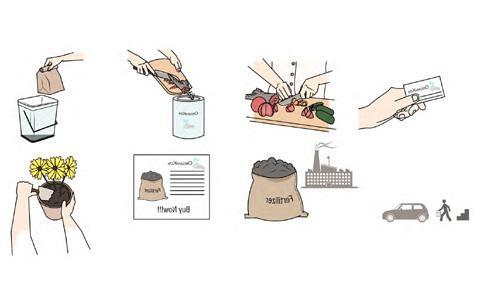




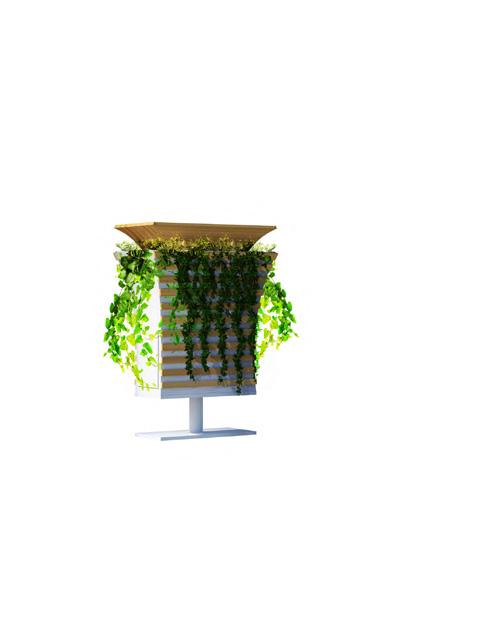






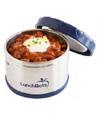

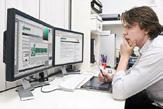




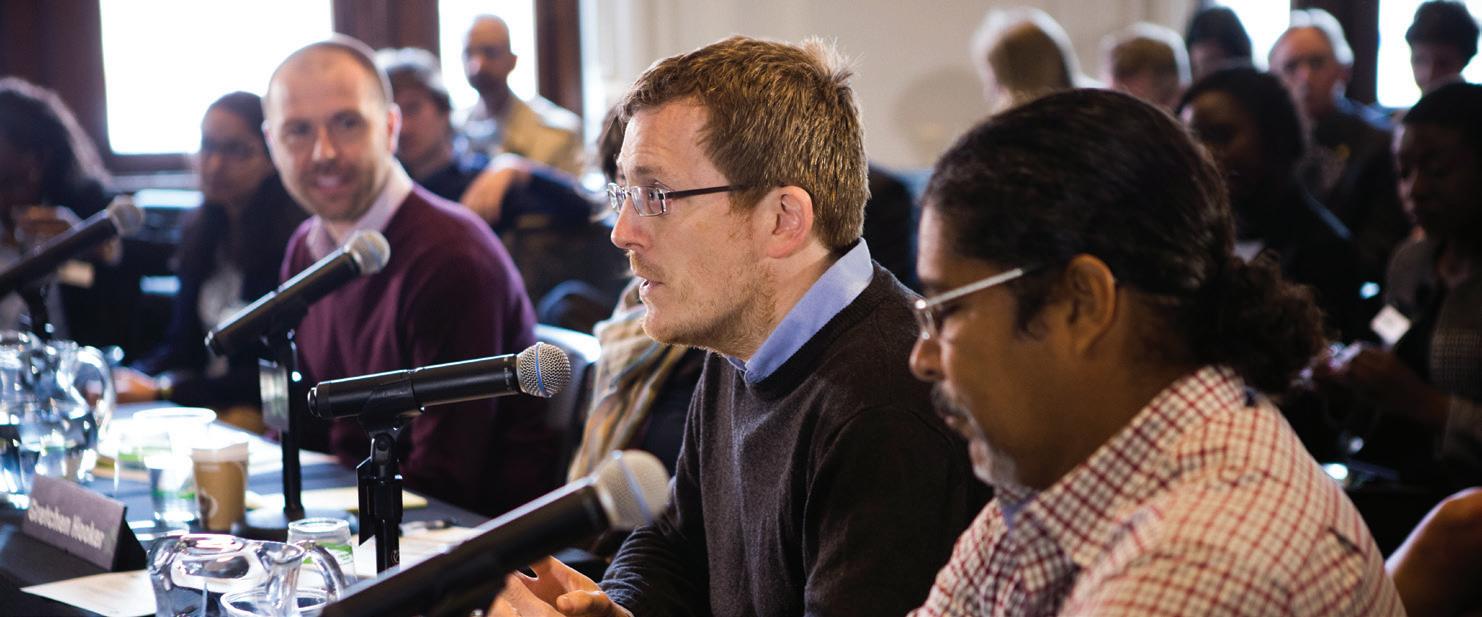



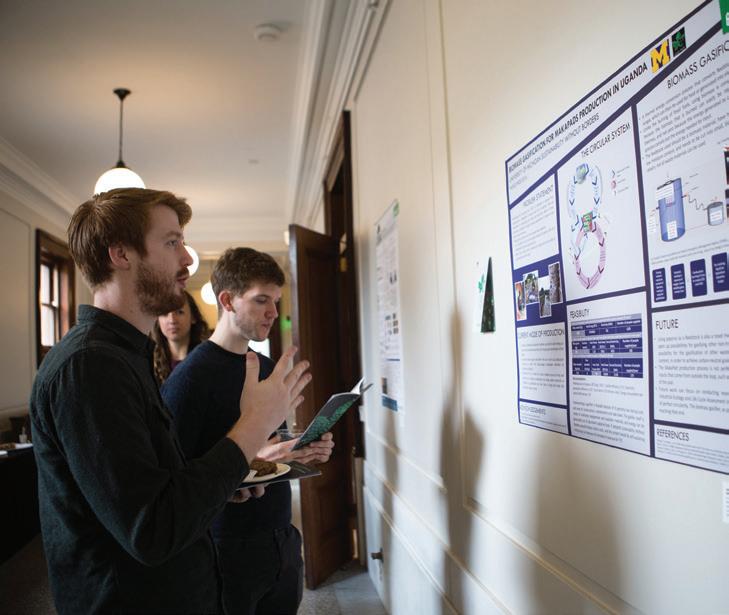

Competition opens up to students worldwide, bringing new insights into wicked problems across the globe.
Feedback loops instituted: After submitting a research plan at time of application, the competition broke into multiple phases with judges providing feedback along the way.
Wege Prize Awards hosted on KCAD’s campus in May, to better accommodate a global academic calendar. Finalists presented their projects in front of the judges and the public before winners were determined.
Current hospital situation and need for change
The volatile price of petroleum, its dwindling nature along with increasing climate change concern and the forecasted population growth have called the plastic industry to adopt more sustainable resource materials. Therefore, there is a need to develop technology aligned with environmental preservation. Furthermore, government’s support and consumers’ demand for green products are additional factors that drive the development of renewable plastics.
Hospital waste consists mostly of petroleum-based materials and accessories that have been used only once. Strict regulations regarding risk prevention state that these materials may only serve a single application and recycling of contaminated material is also impeded. With this in mind, it makes sense to switch to a carbon neutral system that maximizes the use of resources.
Conventional materials can only be destroyed or recycled at external facilities through a long chain of processes. For cost reasons these materials are usually destroyed in waste burning facilities at high temperatures. Wastewater is usually disposed of through the sewer system after which it is processed by local water treatment facilities to prevent for example drug pollution. Treatment of both solid waste and wastewater incur high costs for hospitals (up to $3 per day hospital bed, just for solid waste).
Bio-based materials however can be recycled by processing them in an onsite digester at the hospital. The digester converts the bioplastics to biogas which provides energy to power the rest of the waste processing facility and hospital (this is explained in detail below). Although biogas creates CO2, the system itself is neutral. However, future developments could focus on carbon capturing to contribute to an overall reduction of atmospheric CO2 levels.
Only 15% of medical waste is hazardous, but due to mixing of waste it contaminates otherwise non-hazardous waste, leading to environmental hazards and higher treatments costs.

This circular waste (water) treatment system was designed specifically to deal with hospital waste (water) in a manner that minimizes environmental impact and maximizes resource recovery at a cost-effective rate, while at the same time adhering to the increasingly strict regulations that apply to the medical sector, now and in the future. The system is essentially a collection of proven waste (water) treatment processes wrapped in a concept that is feasible for on-site placement at hospitals without the necessity of extensive modifications to existing infrastructure. By using bioplastics as the basis for single-use materials in hospitals, this system is capable of effectively processing waste in such a way that waste output is minimized with 90% and at the same time energy and potable water is produced in a carbon neutral way.
The Holistic Hospital Concept reduces waste output of hospitals by up to 90%.
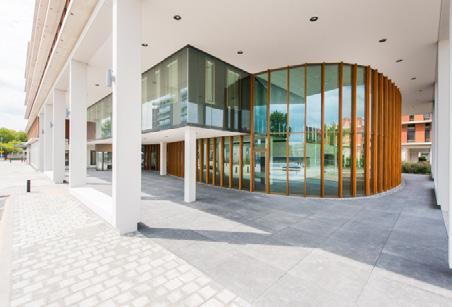
The water outflow of the treatment plant is cleaner than tap water. No pharmaceuticals that are harmful to the aquatic environment will leave the treatment plant.
are then transported to a collection tank (discussed later). The remaining wastewater is transported to the bioreactor with activated sludge.
Bioreactor: Activated Sludge (WW)
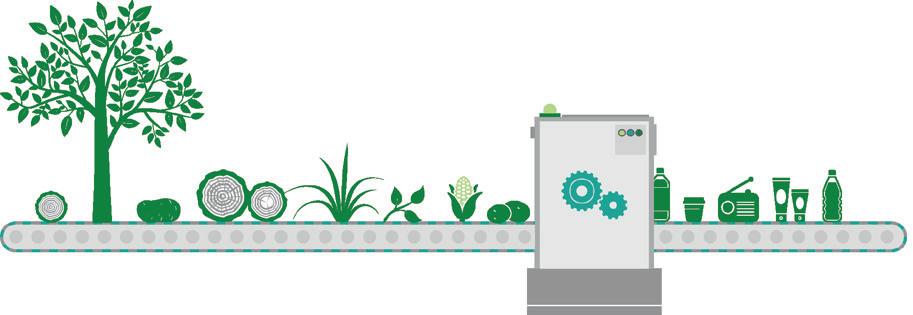
Activated sludge in the bioreactor removes heavy metals, phosphates and nitrogen from wastewater by binding This sludge is still present in the outflow stream of the bioreactor.
Membrane (WW)
The outflow stream from the bioreactors goes through a membrane that filters out sludge from the previous step, bacteria and viruses. The holes in this membrane are so small that only water can pass through. Pharmaceuticals and hormones dissolved in water are not (yet) removed. The sludge that is filtered from the water is collected in the same collection tank that contains the solid waste.
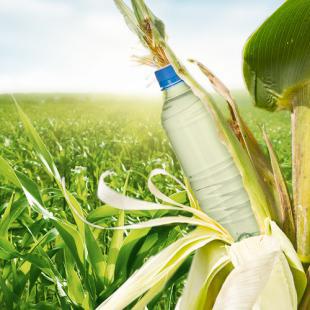
Bioplastics is an ambiguous term, meaning that the definition is used for both biodegradable and bio-based plastics. These two groups do not necessarily overlap. The bioplastics to which are referred in this project are biodegradable bio-based plastics, i.e. made directly or indirectly from naturally occurring compounds and able to be chemically broken down by microbes or other biological means. Bio-based plastics can for example be made from starch (as is the case for PLA), which is a common by-product for any potato processing facility. Considering the entire life cycle of bioplastics, natural materials are needed to produce them and after use they are turned into methane via fermentation and a remaining sludge rich in phosphor and nitrogen.
Spaak+ developed an on-site waste treatment system for hospitals that minimizes environmental impact while maximizing the ability of the system to recover resources. The solution translates existing proven waste treatment processes into a hospital setting in a way that does not require extensive modification to existing infrastructure.
Oxidation (WW)
The oxidation phase removes the majority of the pharmaceuticals and hormones that are dissolved in the water. The oxidant employed is ozone gas and is considered one of the most aggressive oxidative agents available. An added benefit of this method is that it produces no dangerous side products. These products are, however, still present in the outflow stream.






















Active Carbon (WW)
The activated carbon (AC) system consists of a reactor with a surface of active carbon. This carbon binds to any remaining particles in the wastewater. After having passed through the AC system the water is 99% free of pollutants meaning that it is cleaner than tap water.
Mixing (Sludge + SW)
In the collection tank sludge and solid waste are gathered and mixed. The mixing is intended to equalize the composition of the contents of the tank as far as possible. A more equal composition ensures a better digestion process later on.
Hydrolysis (SW)
Before the material can enter the digester, water content must be diminished. This is done through the process of hydrolysis. After this the waste is transported to the digester.
Digester (SW)
The solid waste is collected in the digester. In the digester 90% of the waste is converted to biogas. The remaining 10% is converted to sludge during the process, and has to be collected and treated at an external location by a third party. The available biogas is sufficient to power the waste treatment facility, allowing for a CO2 neutral process. The digestion process is such that it succeeds in eliminating pathogens, bacteria, pharmaceuticals and hormones. In depth information on how this process functions is provided elsewhere.
Heavy metal recovery from sludge
With prices for raw materials increasing, new methods for recovery of valuable resources from waste and sludge have become economically feasible.

‘Spaak’ is Dutch for ‘spoke’. Spokes give structure to the wheel. The wheel stands as a symbol for our heritage – the Dutch bikes, standing for freedom and independence- but it is also a symbol for circular design. With our design we added a new spoke to the wheel of the circular economy, increasing its strength and firmness.
Dan Mulder Josephine Nijstad
Livio Bod Martijn Savenije
circular solutions
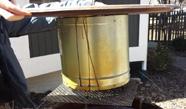
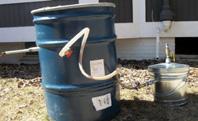




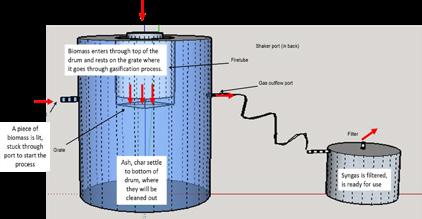
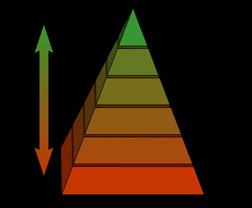


Using Kibera — the largest urban slum in Africa — as a model, KYCE developed a solution that focuses on creating self-sustaining systems for developing countries that can foster employment, improve sanitation and hygiene, enhance the livability of urban environments, and improve the overall health of communities.


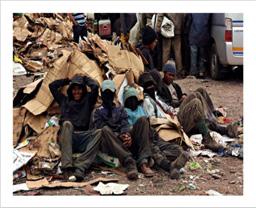
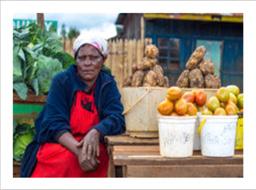
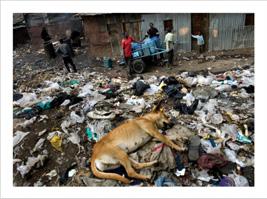

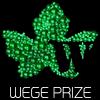


University of Michigan Sustainability Without Borders developed a solution that would help Technology for Tomorrow Ltd. — an existing company in Uganda that manufactures sanitary pads out of papyrus — adopt a circular model for meeting the heating and electricity needs of its production facilities through biomass gasification of papyrus and paper waste materials.


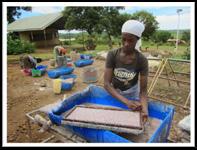
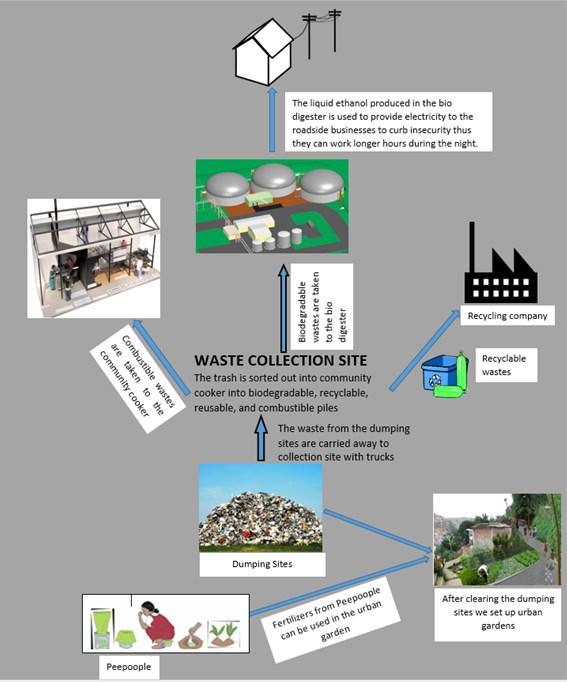
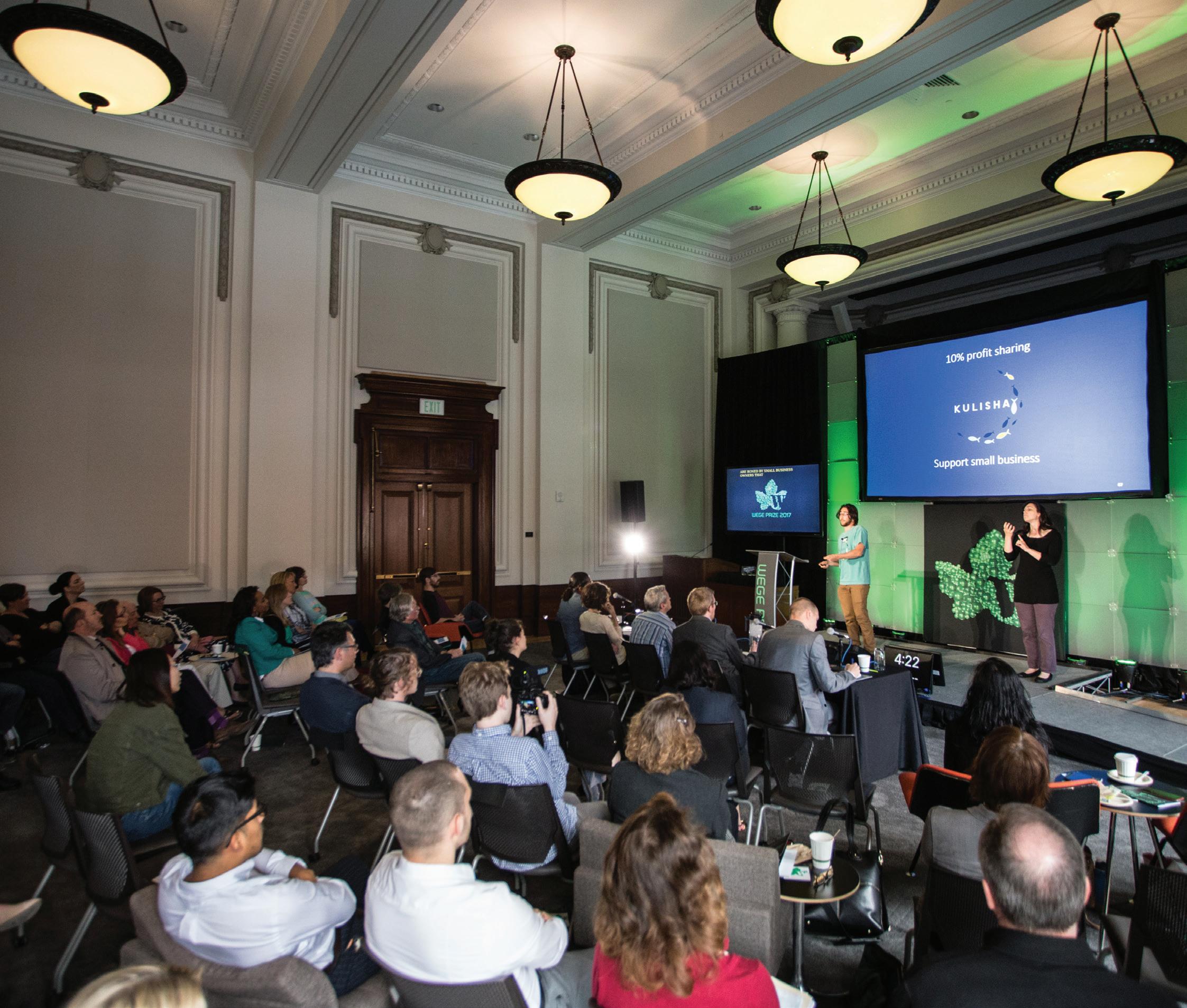



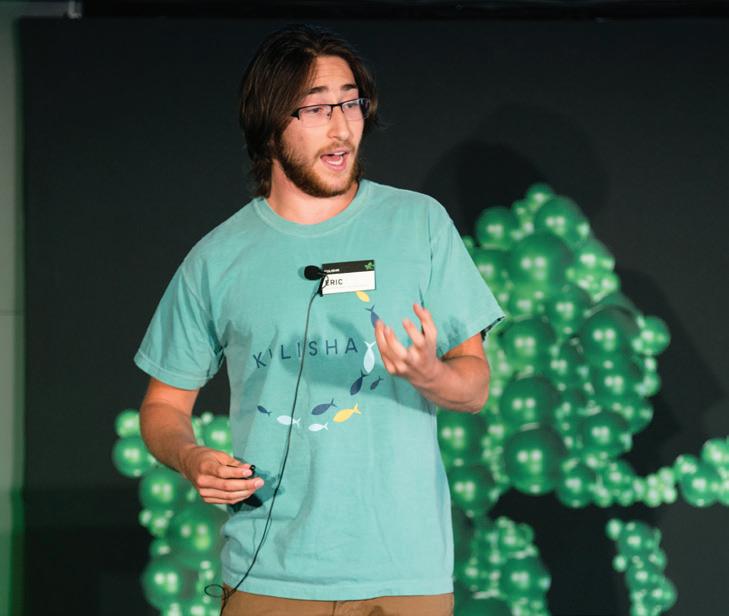


2017 YEAR FOUR
Project summary introduced as main deliverable, giving teams more freedom and motivation to grow the scope, complexity and strength of their ideas over the course of the competition and communicate their solution in more detail.
Cloud-based deliverable submission platform introduced to streamline feedback process and inspire more meaningful interaction between judges and participants throughout the competition.
Graduate students invited to the table and encouraged to compete alongside undergraduate students, with 51 graduate students competing the first year and five teams featuring a mix of undergraduate and graduate students.
Kulisha developed a solution focused on working with food and beverage processing plants to convert their organic waste products into an insect-based protein that can be used in animal feeds and as an agricultural fertilizer. Their system integrates a type of insect called the black soldier fly into food and beverage plants to decrease disposal costs while creating additional value from waste that would otherwise be discarded.

Local water filtration and resource management.
Waste management within the coffee production process on small scale farms.
Farming cooperative that would manage waste and increase revenue streams.
Scaled back the Co-op and addressed it’s financial reality.
Miraflor is located in a unique biosphere in northern Nicaragua that contains opportune growing conditions for organic shade-grown coffee. Although this method is a more sustainable approach than many other coffee production processes, large amounts of water still only have one lifecycle before being contaminated, mismanaged, and eventually running off into nearby communtiy water reserves. (1)
We plan to redesign the coffee production process so as to eliminate waste, reusing the resources or turning them into revenue streams where possible. Somos proposes a cooperative that connects small coffee farmers of Miraflor to green coffee importers and ultimately the consumer. We would process the whole coffee cherries at a central location to avoid contaminating the water resources on the farm. By focusing the raw materials to one location, Somos can take advantage of the waste byproducts from coffee production to produce other raw materials that can be exported for additional revenue.
Over the first three years, we plan to employ crop science from peer reviewed research and local agricultural institutions to inform best nutrient practices for cotton farming in India. Subsequently, we will employ machine learning algorithms to learn from the data we collect to dynamically inform best farming practices, and move into other crop types.
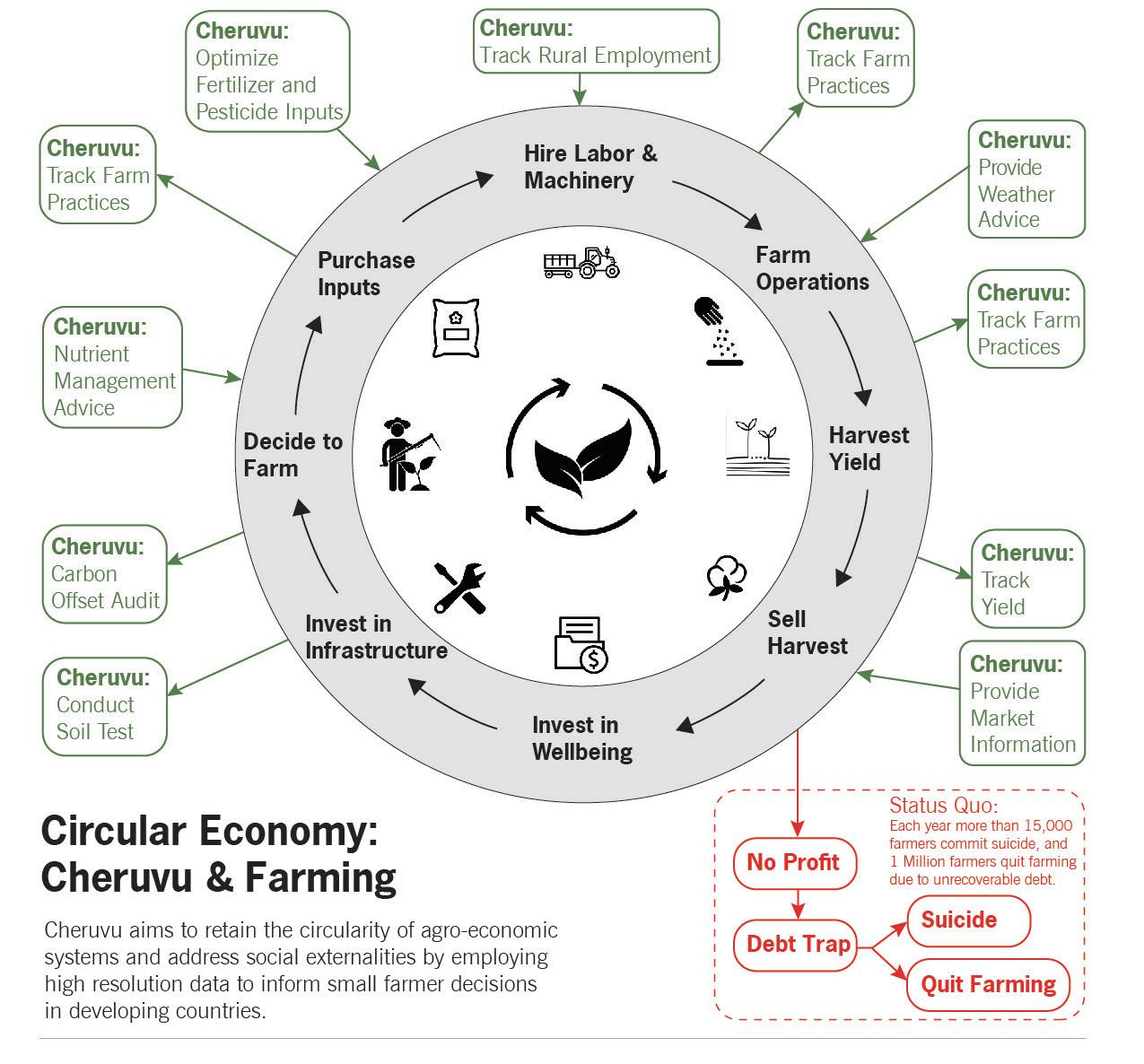
While the government of India is addressing financial barriers by promoting crop loans and insurance, improving access to farm-specific information has not been explored. We believe informing farm decisions by dynamically learning from the best farmers in the field can enhance agro-socio-economic circularity by increasing crop yields with a long term goal of reducing farmer sucides New data collected each year will strengthen our ability to provide evolving best practices to improve sustainability of small farms.
Small farmers (average landholding size: 3 acres) in India are the primary consumers of our service. To provide this service in the field (soil sampling, contour mapping, geo tagging, data collection, service delivery), we will empower and employ educated but previously unemployed women from the same farmer communities. This is a socially reinforcing model that benefits vulnerable populations in the ser vice consumers and service delivery channels.
SOMOS developed a solution focused on helping small coffee farmers operating in Nicaragua’s Miraflor Natural Reserve halt the negative environmental impact of their production process while also taking advantage of the waste byproducts of that process to produce other raw materials that can be exported for additional revenue.
Using their home country of India as a case study, Cheruvu developed a solution focused on the creation of a sustainable enterprise that employs crop science, machine learning and crowd analytics to help farmers in India increase crop yields, mitigate risk and improve their economic standing by providing them with access to highresolution data on best agricultural practices, soil nutrients, climate and satellite imagery.
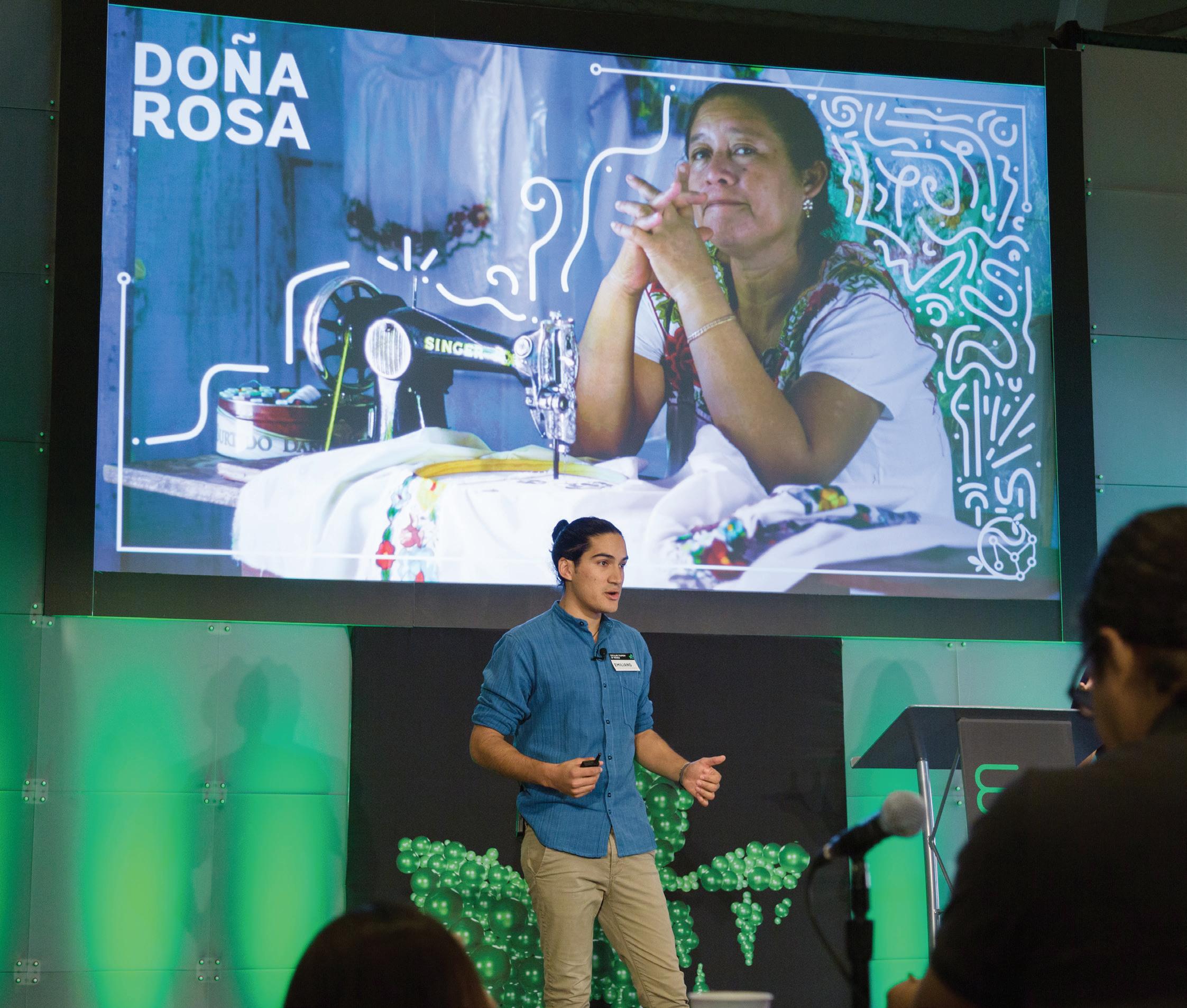




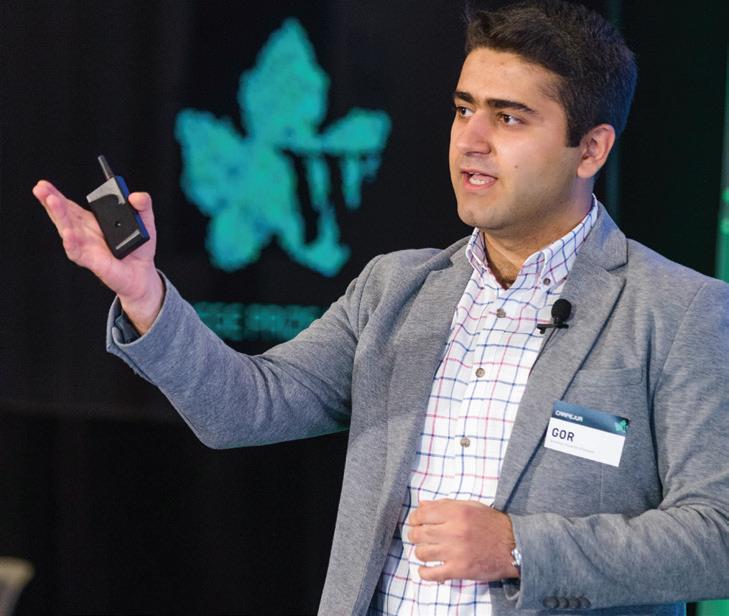

2018 YEAR FIVE
17 Teams / 85 Participants / 36 Schools / 63 Disciplines / 17 Countries
Phase I deliverable revised to inspire teams toward deeper understanding of how strategic team makeup and collective investment are key drivers of success.
Moving teams toward a feasible action plan, Wege Prize continues to encourage teams to improve their ideas throughout the competition process.
Creativity and collaboration stay at the forefront promoting experimentation, learning and growth
Circular Tourism Mexico proposed Rutopia, an online platform that facilitates the transition to a fair, sustainable and circular tourism system for Indigenous communities in Mexico. The platform connects Indigenous-run community tourism initiatives directly to their target audiences and offers them the tools they need to overcome obstacles that prevent them from competing in the ecotourism marketplace. At the same time, it ensures travelers will be able to enjoy genuine experiences while benefiting both Indigenous communities and the environment.
NEEDS:
A sustainable economic income
HAS: Natural and cultural attractions
NEEDS: Authentic and safe experiences
HAS: Travel budget
Indigenous Community: A social, political and economic entity which identifies itself as indigenous and works under a communal government system, in which decision-making involves the whole community.
We are designing and testing a social business that will facilitate the transition from the current extractive tourism system to a regenerative one which will allow communities to create a circular tourism-economy. Rutopia is a platform cooperative that will offer to indigenous-run, community-based co-ops the tools they need to overcome the obstacles they face when competing in the ecotourism marketplace. Simultaneously, it will give travelers the opportunity to take trips that feature authentic experiences while ensuring they have a positive impact on the environment, which is something they seek. It will be done through a system of direct payment of environmental services to the communities that we have called Sustainable Tourism Credits (STC). Rutopia is NOT an enterprise that brings tours to indigenous communities; Rutopia is a collaborative tool that builds communities capable of generating and operating their own tours.
Local Tourism Co-op: Managed by a committee designated by the indigenous community. They are in charge of managing local tourism activities under an agreement that also seeks to benefit the whole community.
Platform Cooperative: “A cooperatively-owned, democratically-governed business that uses a protocol, website or mobile app to facilitate the sale of goods and services” (Coop, n.d). In this case, Rutopia is a platform cooperative composed by a network of Local Tourism Co-ops.
In order to validate and retrieve information from our model, we built an initial network of 7 indigenous communities and carried out ten prototype trips co-designed with them.
106 Travelers
MAIN INSIGHTS:
Local tourism co-ops are capable of significantly improving their touristic products by applying design thinking methodologies
What travelers value most are the human interactions with local families and hosts
Local indigenous co-ops struggle to calculate costs and set a price for their services
A “Rutopia travel guide” for tourists can help overcome problems regarding language and cultural differences, each adapted for different regions and ethnicities
Local co-ops prefer a basic site as their internet connection is mostly through mobile data and loading heavy content is expensive for them. A simpler site with a shared backend will solve this
Prototype of Rutopia’s platform: www.rutopia.com.mx
STC (Sustainable Tourism Credits):
A touristic project might be so focused on its economic cycle that it might not have enough incentives in the short-term for the conservation of the ecosystem, especially if there are no community mechanisms to invest in it as if it was “natural infrastructure” for tourism. STCs is a system of direct payment of environmental services in which 10% of what each tourist pays goes to a fund that periodically rewards communities that prove that they conserve their environment according to a set of indicators, some of them easily rateable and verifiable by tourists (locally sourced food, waste management, preserved lanscape, etc.) and some others verifiable using low cost mechanisms of verification (satellite images, random checks, etc.) which could be carried out with alliances such as Mexico’s National Forestry Commission. Co-ops would then be free to use the STCs to pay for additional conservation actions, to improve their competitiveness in other ways, or even to buy Rutopia shares.

1 acquire/sort
HMU will acquire inventory from Merry Go Rounds as well as from parenting networks (FB Peanut) All articles are cleaned, sorted, and graded, and receive an HMU tag sewn with an RFID-embedded thread (Adetex) or RF-printed code (HP) Tags specify age and gender for apparel, and will automate delivery logistics, as well as takeback and future sorting and fulfillment
2 clean/repair
4 collect
When children outgrow the c othing, customer ships the pieces back to HMU in the original box, or drops off at an HMU fulf lment center

My baby weighs:
Sabon Sake proposed the use of biotechnology and web-based technology to transform bagasse, the main waste byproduct of sugarcane farming, into bio-compost fertilizer, increasing accessibility to the larger sugarcane market for rural farmers in Ghana’s Volta Region and helping them achieve greater yields, reduce crop losses and ultimately overcome poverty.
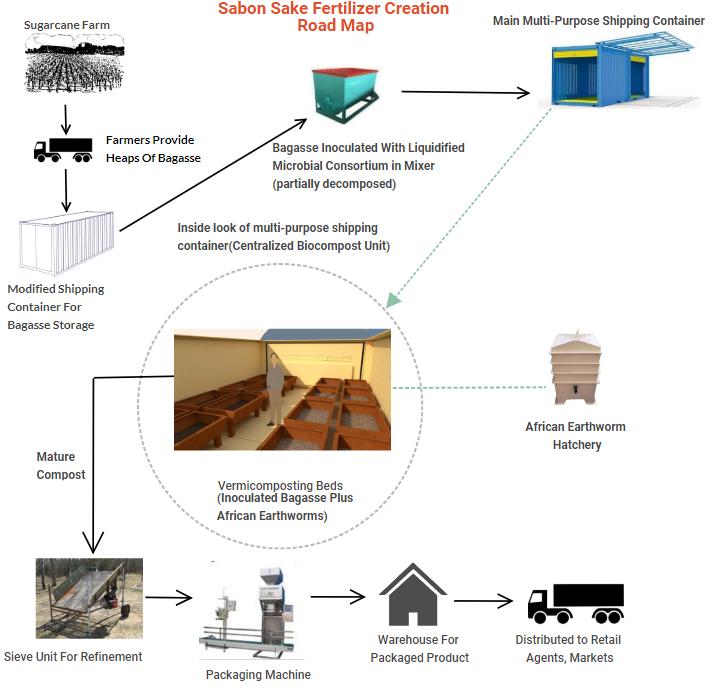
When clothing is worn out beyond future use in the secondhand cycle, it will be set as de and stored At this point HMU’s partnership with Evrnu will use their proprietary technology to convert the aggregated cotton garment waste into new, durable and clean fabric
HMU will use this fabric to construct new staple garments such as baby onesies - items that suffer the highest wear in the subscription box The HMU line of upcycled apparel will be assembled with Wear2 threads, which come apart when exposed to certain controlled microwaves for easy disassembly, repair, and future remanufacture
HMU will clean/repair clothes as needed
3 manage subscriptions
Apparel is sold to customers through a mobile-online subscription service
Customers indicate size and general aesthetic to receive a full season's worth of clothes. While customers cannot choose each item, sample pieces that could come in a box of a certain style will be shown on the platform
Branding:
Customer research from Merry Go Rounds notes that most parents look for a few basic styles (especially for boys: blue pants, primary color shirts ) which suggested to us that we can offer 5 "styles":

Traditional Boy Traditional Girl Quirky Boy, Quirky G rl and Gender Neutral Neutrals. "Traditional" boxes are filled with articles that sell well like reds and blues while "Quirky" boxes can be priced lower by selling pieces in less popular colors (orange purple) that don't move as well in the brick-and-mortar shop
We have delivered prototype boxes to some of our classmates with young children Parents have agiven us helpful feedback on packaging, style preferences, the option to return items, and more
Wege Prize 2018
Booming Babies proposed an online secondhand children’s clothing subscription service that builds a community of dedicated users while scaling adoption with mobile technology and RFID tagging. The team’s solution also plans to upcycle clothing that has reached the end of its life cycle through aggregation and remanufacturing by partnering with fabric dissolving/melting firms to create new fabric durable enough for extended use and soft enough for babies to wear comfortably.
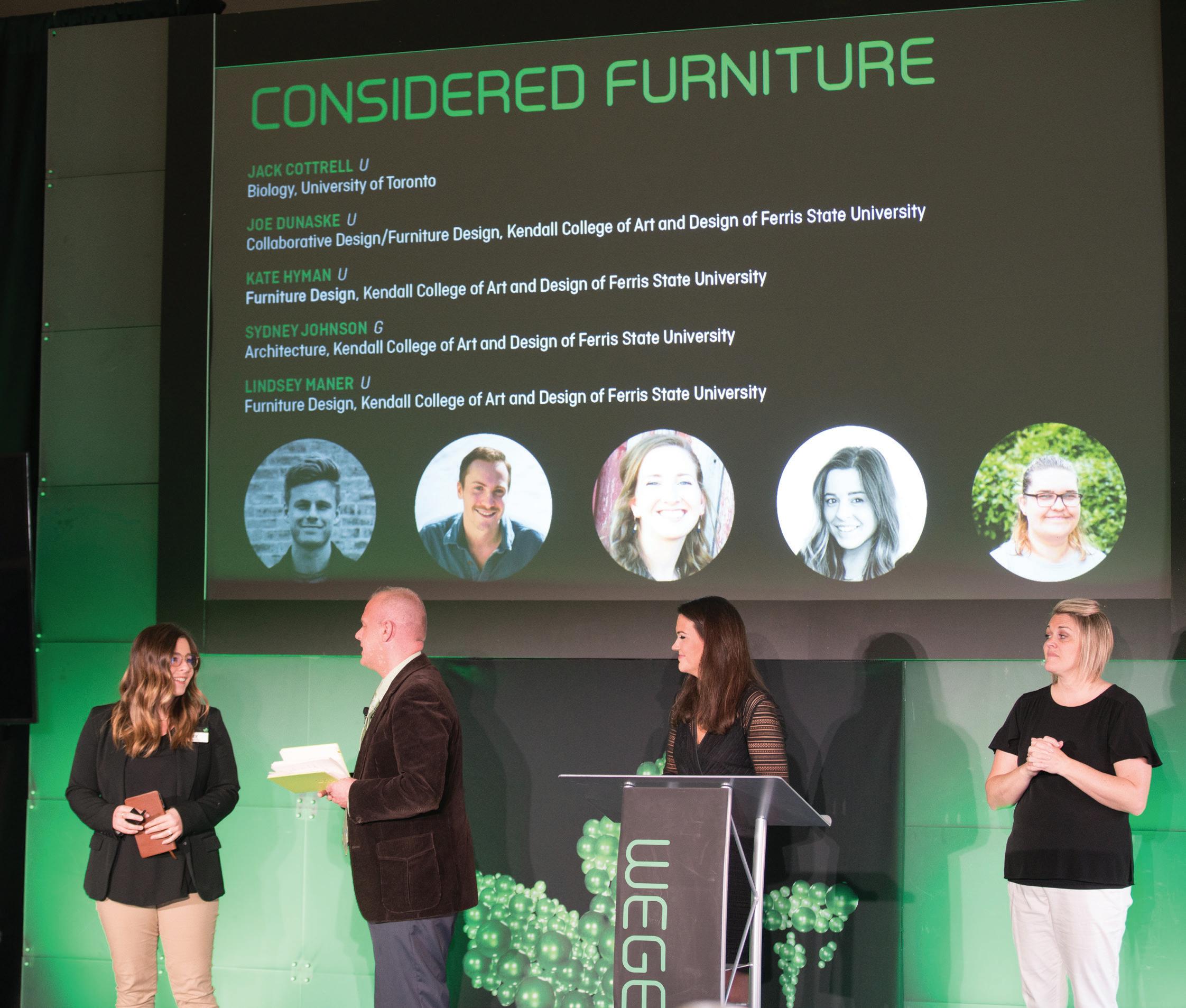



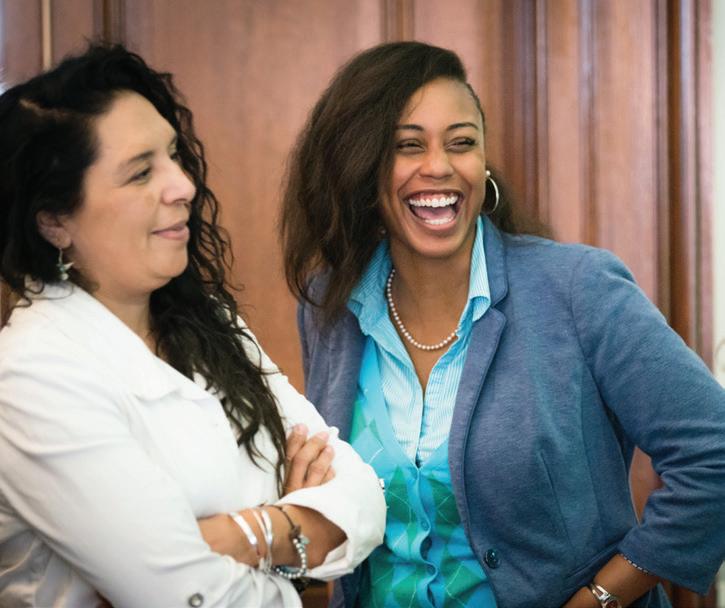

9 Teams / 45 Participants / 21 Schools / 40 Disciplines / 14 Countries
Newly passed data privacy laws unexpectedly hamper competition promotion, prompting organizers to revamp outreach processes to ensure compliance issues would not remain a barrier to growing team participation.
Phases further defined with the phase two project summary now including six distinct features with added impact assessment and prototyping sections.
An increased focus on overcoming project barriers to further push the feasibility of the teams’ proposed solutions.
REDENT proposed a system in which cocoa pod husks, a byproduct of cocoa bean production, can be upcycled into organic fertilizer. The system, designed to be waste-free and both economically and environmentally sustainable, also aims to inspire cocoa farmers to use sustainable farming practices while giving them access to additional income streams.

REDENT has designed a solution that will help achieve a zero-waste-cocoa beans production process by upcycling cocoa pods husks (CPH) to produce organic fertilizers, bio-soaps and animal feeds. Our pilot project, which is the production of organic fertilizer, is motivated by our desire to create an environmentally and economically sustainable venture from a supposedly waste product. REDENT will be working closely with cocoa farmers and the community, buying their CPH, developing a database of cocoa production and offering advice on sustainable farm practices which will create additional income streams for farmers and improve the wellbeing of the community.
REDENT consist of an interdisciplinary team studying in four different countries and represent five different majors , which are all relevant to the wicked problem we are tackling:
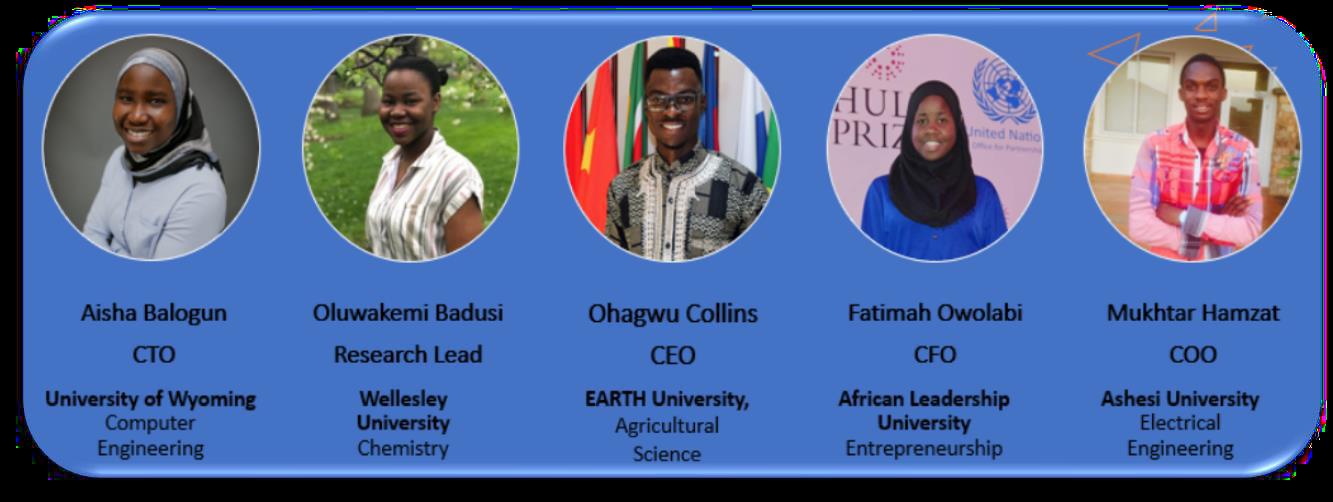
REDENT has been collaborating with several stakeholders and subject experts in o ur various institutions and beyond to realize the design of this product. We had collaborated in areas of financial modeling, prototyping, and product design.
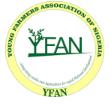
 Partners
Partners
 Respect Musiyiwa Director and Founder, Eco Connect Natural Foods
Respect Musiyiwa Director and Founder, Eco Connect Natural Foods

What are you designing?
Suite of biodegradeable, sustainably sourced furniture designed from the onset to cycle through multiple lifecycles. End of life products and by-products are upcycled through a carbon reduction compost program, generating additional revenue streams. This is supported by an incentivized, circular business model.

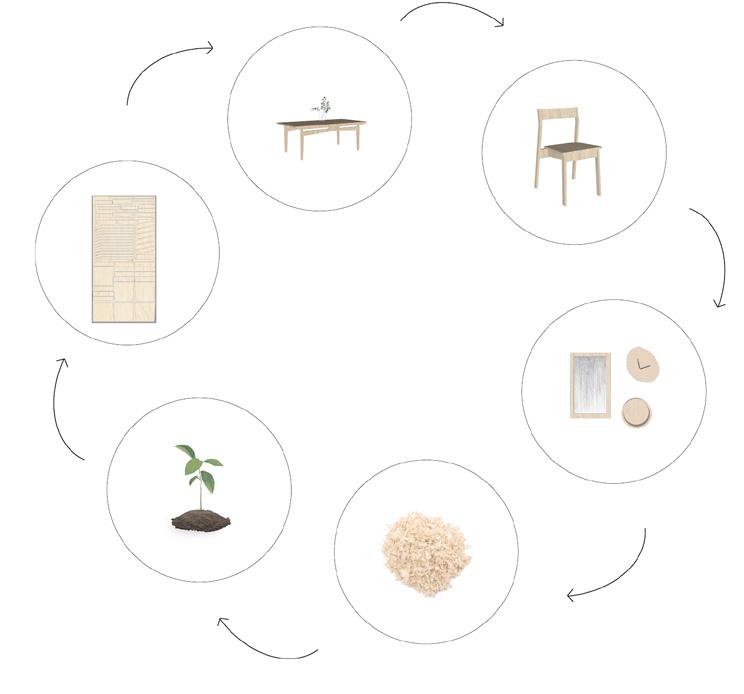
Pathways for a Piece - Innovation
This disrupts the linear system of the residential furniture industry which accounts for significant amounts of technically complex bulk waste entering landfills. A circular model targets an identified unmet consumer need for a system that fits their lifestyle without a negative environmental impact.
Target Consumer Needs
- The generation of “Urban Nomads”, this customer moves frequently between urban centers and needs a product that addresses:
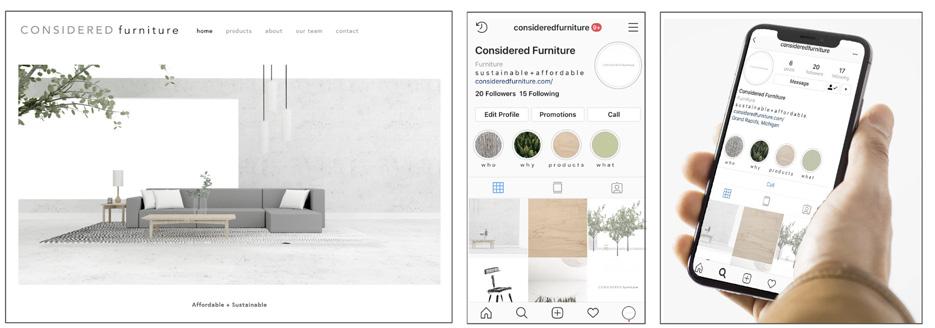
Convenience during move
- ease of transport
- disposal and return channels
- wear and tear during move
- product flexibility to account for changing floorplans
Sustainable but Financially Attainable
Fast Fashion
-Low commitment pieces to follow trends

Target Consumer Millennial
Recently established Young professionals New starts of households Urban Nomad
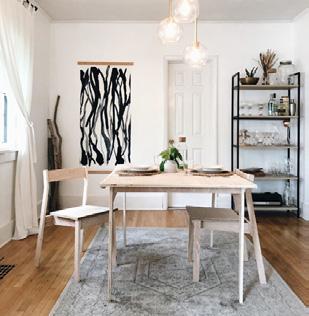

Considered Furniture (CF) Convenience during move
- CF buys back furniture
- Customer has new furniture delivered at next location that fits their new floorplan
- No wear and tear, transport or disposal hassle during move for consumer
Sustainable but Financially Attainable
- Competitively priced
- Two entry pricepoints: New & Circulated (discounted)

- Buy-back credit: ROI
Buy-Back Credit
Incentivized participation in a circular economy
Two entry pricepoints to company
Fast Fashion
-Furniture is customizable, upgradeable, return for new set

Wet Technik is a student start -up founded at Makerere University by a multidisciplinary group of students looking at reducing the costs of water usage and environmental pollution by hazardous wastewater through the use of constructed wetlands. Focused on solving the ever-present problem around wastewater handling, we want to bring to light the potential of its recycling to enable optimum water usage. T Through us ng a m xture of mod fied waste bottle caps and pumice n our constructed wetland , we have proven that it will r reduce the area requ rements , making this system accessible to the factories, schools and eventually households.
Wastewater is mainly in two ca tegories namely; black and greywater. Greywater comprises of a large proportion of wastewater generated in households and institutions. The reuse of greywater serves two fundamental purposes namely reduction in the fresh water requirements and reduction in sewerage generation

Wet Technik is targeting recycling wastewater from schools and factories as these have knock-on effects on the surrounding communities, as well as the respective schools and factories.
Number of schools surveyed=6
Average Population= 1400 students
Water bill monthly= 1.5 - 2 Ushs. Million
The amount spent on water is a significant proportion of the total monthly expenditure in schools.

Per Cap ta Water Consumption Non Potable Potable
Most of the activities consuming the water were n non-potab e uses.
• Washing r
• Flushing toilets
27 liters (per person daily)
• Cooking
• Drinking 10 liters (per person daily)
There is great potential for the use of water, from our solution, to satisfy these purposes hence reducing the effective water bill.
Consumer Channels
Considered Furniture proposed development of a circular furniture company that produces products that are sustainably priced and fully biodegradable. Furniture can be returned to manufacturing to enter a new life cyle, or upcycled and returned to the environment as a positive nutrient.
Uncontrolled industrial development in urban areas has been a major sour ce of pollution in the country [1] Rapid increase in Ugandan’s population needs a large public sector investment especially in regards to wastewater treatment. The increased pollution from both the urban settlers, whose waste volumes are alarming and the industries have contributed to the declining fishing ndustry. The economic effects of industrial pollution have knock-on effects, through the decreased economic potential of resources that are polluted and affect those that derive their income from the water resources e.g. fishermen in Lake Victoria and also the reduced output from workers through waterborne diseases resulting from environmental pollution. Uganda has a population of about 1.3 million people involved directly or indirectly in the fishing industry.
A study [3] on the management of industrial and municipal effluents in the Lake Victoria basin in Uganda indicated that most factories do not have effluent treatment plants and even where they existed most of them were poorly designed and constructed. Therefore, of those that have effluent treatment plants, only a few were achieving effluent discharge standards. This is a major threat to both the bio-diversity of the lake and the continued sustainable use of the lake resources which are a b ackbone to most of the population living in their vicinity. An environmentally friendly, cheap but circular alternative is needed to effectively filter out the toxic substances before release into the natural streams.

Constructed wetlands have been adopte d as a solution to treating and recycling wastewater. A c constructed wetland is a shallow basin filled with some sort of filter material (substrate), usually sand or gravel and planted with vegetation tolerant of sa turated conditions. [4] They are cheap and easy to maintain solutions as compared to other wastewater treatment systems. The major barrier to their implementation in various settings i.e. households, institutions, communities and factories is the large area requirements.

Wet Technik proposed a solution to address Uganda’s water shortage and wastewater treatment issues by designing a system that can upcycle grey water using a mix of constructed wetlands and filtration bio carriers made from repurposed plastic bottle caps. The system aims to reduce the costs of water usage while minimizing environmental pollution from hazardous wastewater.
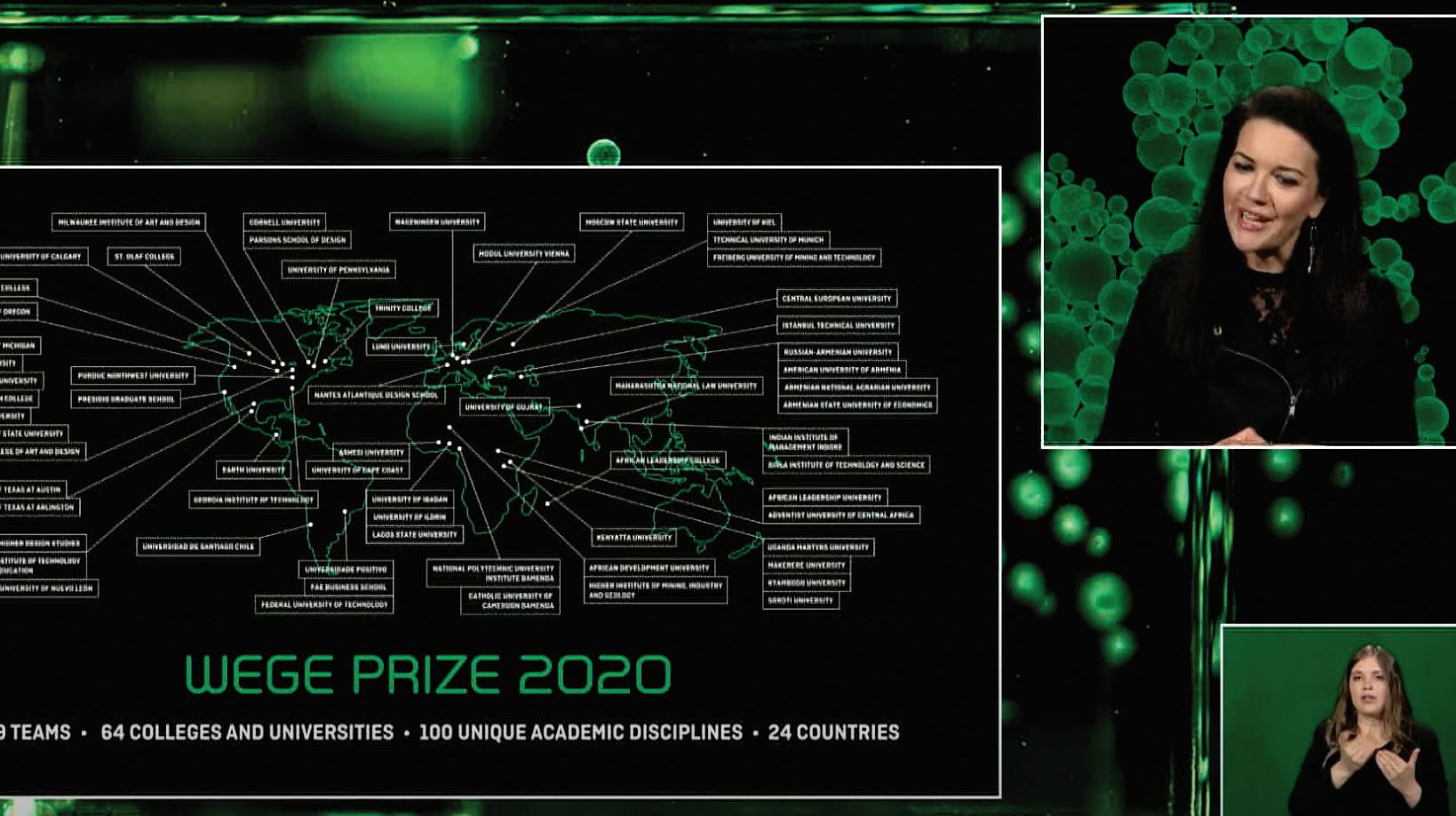

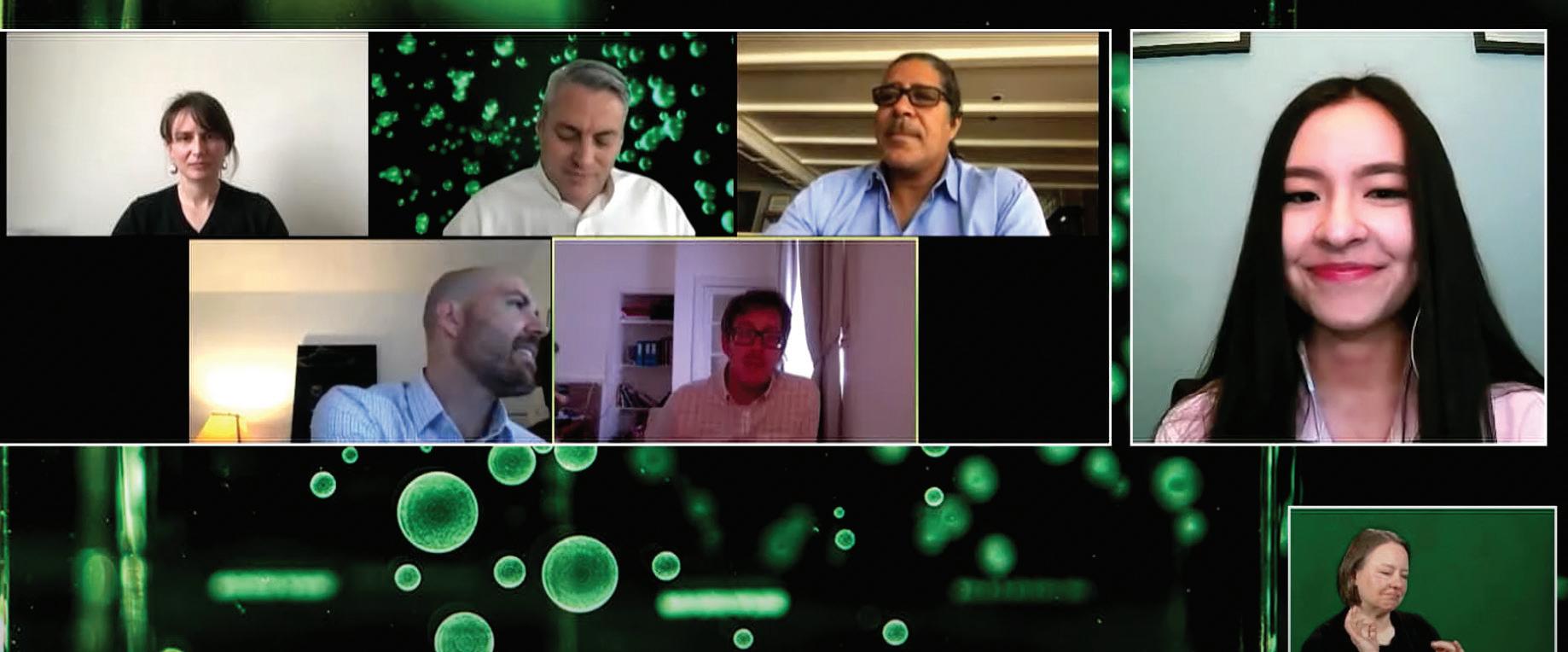




29 Teams / 145 Participants / 64 Schools / 100 Disciplines / 25 Countries
Revised outreach strategies pay off, resulting in largest field of participants in competition history.
Our most diverse field of participants ever, giving an increased perspective on what wicked problems look like around the world.
Transitioning to a virtual finals event due to the COVID-19 pandemic, enhanced live streaming presentation enabled continued connection with a global audience.
What if one of the world’s most invasive plants could help spell the end for single-use plastic?
Hya Bioplastics is developing a process that blends dried water hyacinth fibers and boiled cassava starch into a biodegradable raw material for the production of disposable plates, cups, silverware and packaging. At the same time, the process helps mitigate the threats posed by the spread of water hyacinth.
Hya-bioplastics is looking at replacing exist ing petroleum-derived disposable packaging with biodegradable ones using the invasive water hyacinth as a major raw material.

Water Hyacinth characteristics:
High growth rate 17.5 metric tons per hectare per day.
Causes: Its spread is largely linked to eutrophication emanating from increased water pollution, poor land use management practices and other environmental and climatic factors. The wastewater discharged from households and industries and contains these nutrients whic h when increased in concentrations result into eutrophication, which is growth of plant and algae. With increased urban population (25% growth rate) and industrial growth (6.5% growth rate) this nutrient loading of waterbodies is bound to grow and increase the yield of water hyacinth.
Location: Freshwater lakes in Southeast Asia, the South -eastern United States, central and western Africa, Central America and Iberian Peninsula in southwestern Europe and this poses a threat to the already scarce freshwater sources
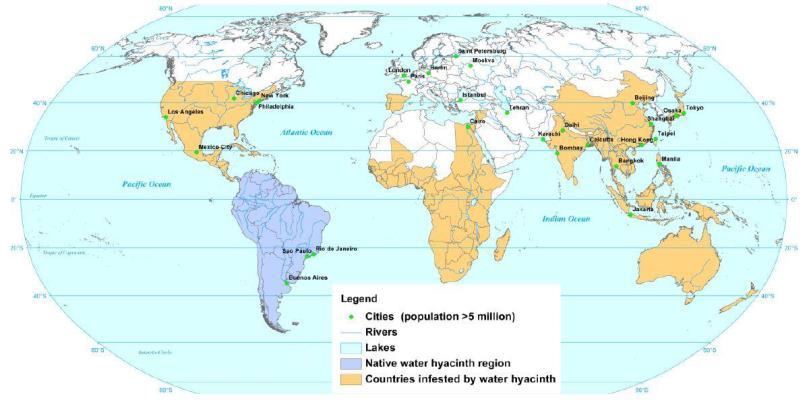
Coverage: In Uganda, water hyacinth attained peak coverage of up to 2000 ha on the bays of Lake Victoria with most infestation focusing on the shores with ample nutrients and shelter which are suitable conditions for the growth of these weeds.
Contextual Problems associated with hyacinth:
PROBLEM Instances of complete blockage of waterways by water hyacinth making fishing and recreation very difficult.
The fact that its mat-like nature results in the concentration of micro-organisms around the plant roots and shoots.
Its control measures yield no economic value: Mechanical, biological techniques are quite expensive and its explosive growth rate makes the measures seem unnecessary.
Food distributor
Aramark, Philadelphia, PA

We chose Aramark as our food distributor because of the prior contracts with GVSU. They offer a supportive environment to carry out this business plan.
Meal packages
Bio-Plus
We chose these meal packages because they are compostable, microwavable, and the see through window allows the buyer to view the product
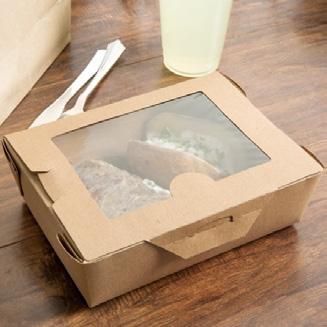
Labels
Elevate Packaging, Chicago, IL
These labels are made of all natural and unbleached sugarcane paper, and are certified compostable, supporting Further Food’s brand and mission.
Composting Vessel
Green Mountain Technologies, Bainbridge Island, WA
At GVSU, we will use the Earth Flow composting system which has an automated mixing and aeration system. It is made of custom steel with a polycarbonate greenhouse roof enclosure. The greenhouse roof acts as a passive solar supply to heat and dry the compost, and provide a visual to the composting system.
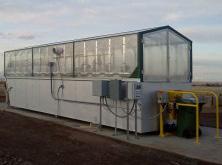
Trummel
Sittler’s Manufacturing, Linwood, ON Canada
Sittler’s Manufacturing offers a user-friendly and low maintenance compost screener that takes out contaminations and materials like spools, wine corks, and non-compostable materials. This trummel yields 90 cubic yards per hour.

Pulper
Somat Waste Reduction Solutions, Lancaster, PA

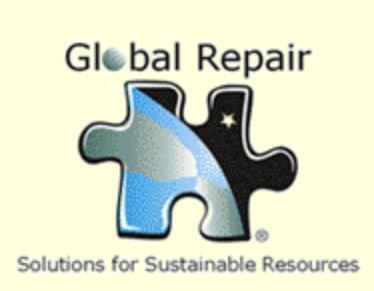
They specialize in pulping systems that produce an economical and efficient way to reduce food waste. This system reduces transportation costs along with supporting a LEED certification, and zero waste goals.
What if we could streamline and reduce preconsumer food waste at a university level by offering to-go meal packages and on-campus composting? Further Food is developing a regenerative system that transforms unused food from campus dining services into packaged meals made available to students during the final hours of cafeteria operations, while leftover waste is diverted to an on-campus composting facility. The system keeps nutrients cycling through campus while also creating economic value, social capital, and educational and research opportunities.
Pellet Group seeks to increase the use of fertilizer for the farmers by providing access to affordable and environmentally friendly fertilizer. Our proposed solution consists of the use of organic waste from urban residences and restaurants to manufacture organic fertilizer in the form of pellets. Our approach also contributes to reducing dependency on agricultural related imports and ensures proper waste management.
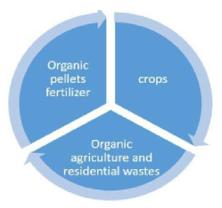

The implementation of our proposed solution will address this shortfall; it will start in 3 communities within Gasabo District where our processing facility will be based. We decided to base our facility within Gasabo for the following reasons:
1) Most residential places in this community are directly affected by poor waste disposal
2) There are three (Masaka, Murindi, and Kabuga) agricultural communities in Gasabo District which will be our potential customers.
3) The infrastructure (roads, electricity) in this community is favorable for our activities
4) It is easy to secure a space for our facility as one of our member´s family owns a plot of land in that community.
According to the statistics from the Rwanda Development Board, 80% of Rwandans have direct involvement in agriculture while the sector only contributes 30% to the country´s GDP.

At the same time, there is an increase in the number of urban centers whose waste disposal practices are poor. These practices are associated with other secondary consequences that threaten human lives as the waste that is poorly handled become hosts of pathogens.
Our proposed solution is to help communities to properly manage their organic waste while benefiting their neighboring communities whose majority depend on agriculture
By July 2019, the waste was estimated between 500 tons to 800 tons per day in which 40% are organic wastes in Kigali city and it is estimated to increase by 63% over the next 10 years to approximately 1300 tons per day by 2030 (Rajashekar, Bowers, and Gatoni, 2019).
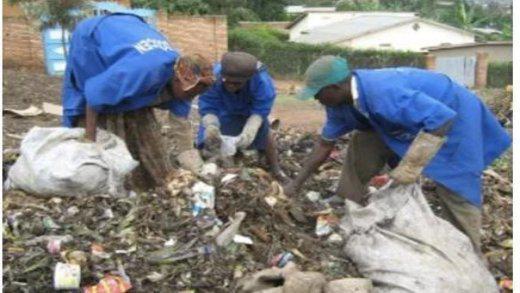
What if organic waste from urban restaurants and residences could give rural farmers access to affordable and environmentally friendly fertilizer? Pellet is developing a system to do just that by tackling persistent waste streams while creating economic opportunity, nurturing soil health and aiming to jump-start a budding industry in Rwanda in the process.


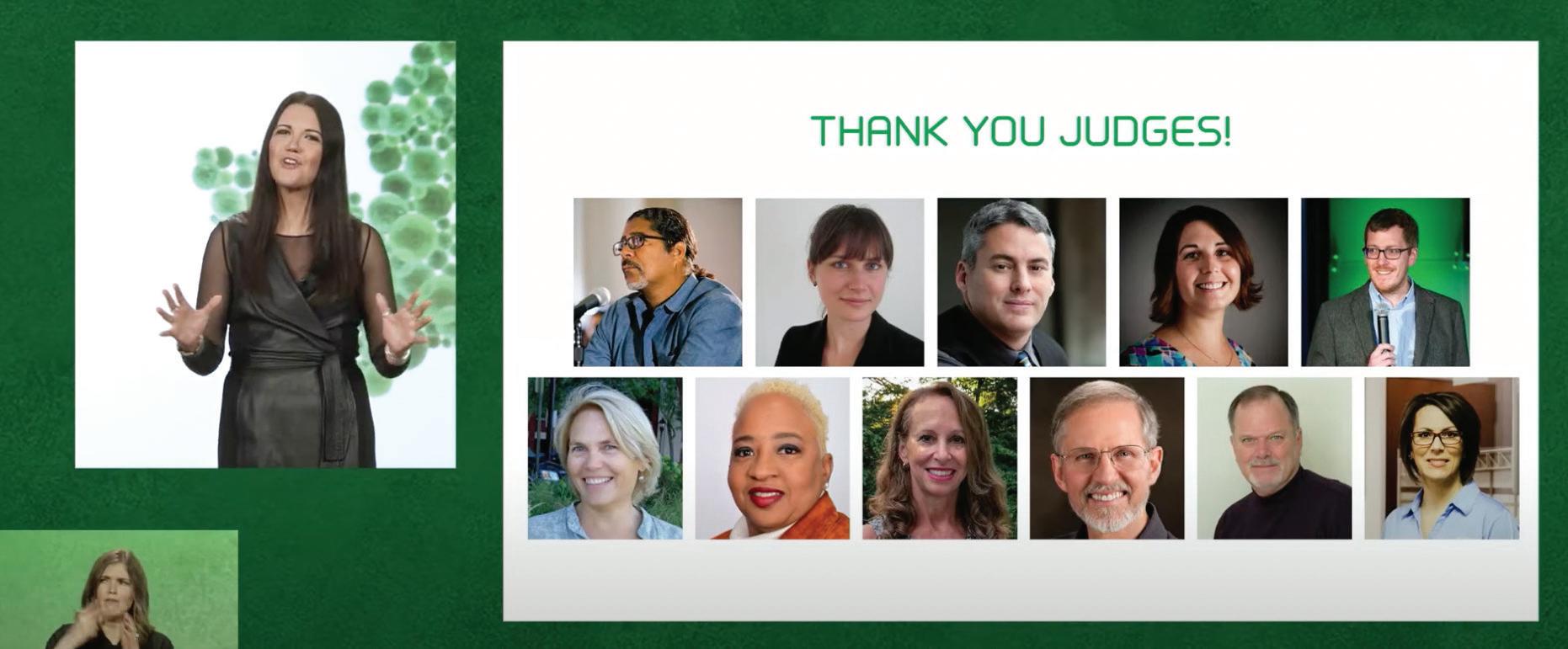

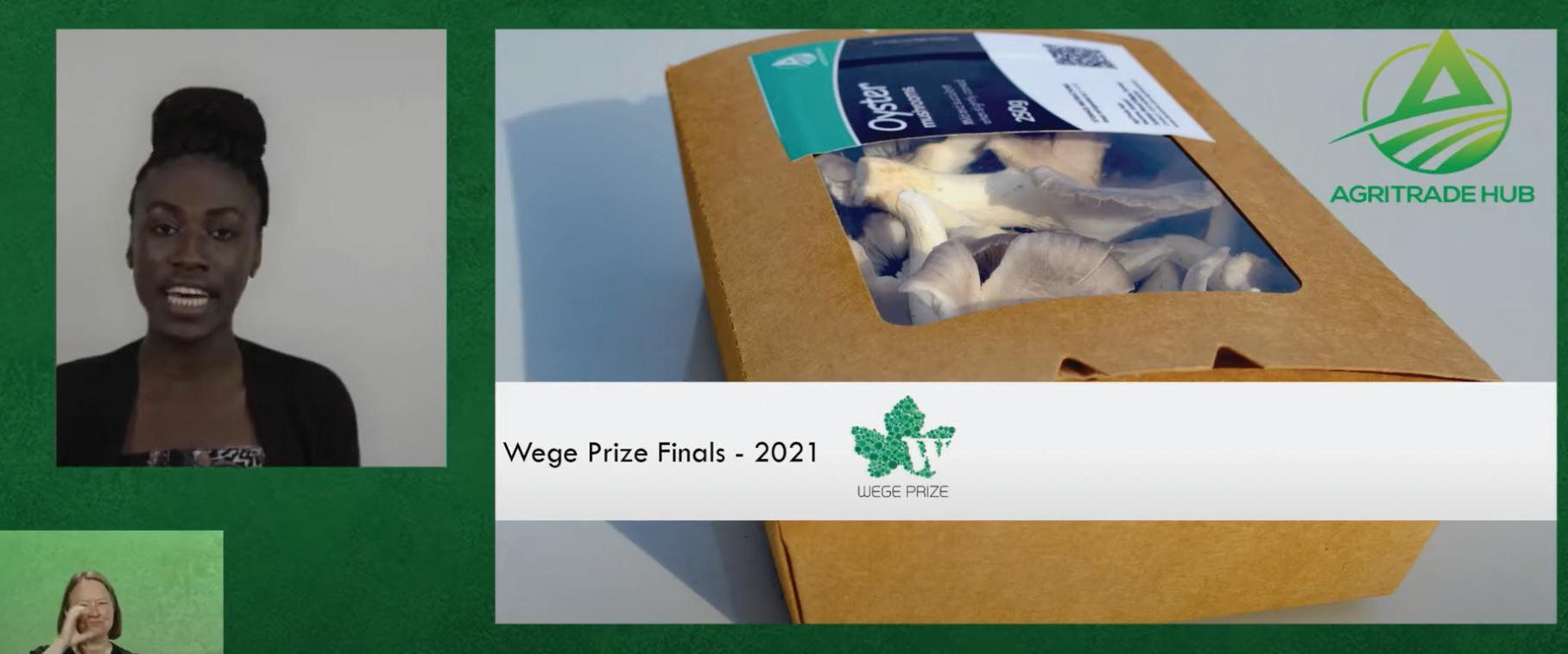


35 Teams / 175 Participants / 88 Schools / 144 Disciplines / 29 Countries
Enhanced outreach and awareness leads to second straight record-setting field of participants, both in terms of quantity and diversity.
Continuing the virtual experience, based on the successful model set up for 2020, ensuring equitable and meaningful experiences for all in the face of the ongoing pandemic.
Proven value in the process and experience led to a successful application for a substantial increase in funding and a five-year grant extension from The Wege Foundation.
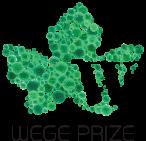
Based in Ghana, AgriTrade Hub’s design involves using and transforming 10 tons of wood waste into nutrient-based substrates for mushroom production, geared toward supporting the local economy by contributing to subsistent food security and combating malnutrition.
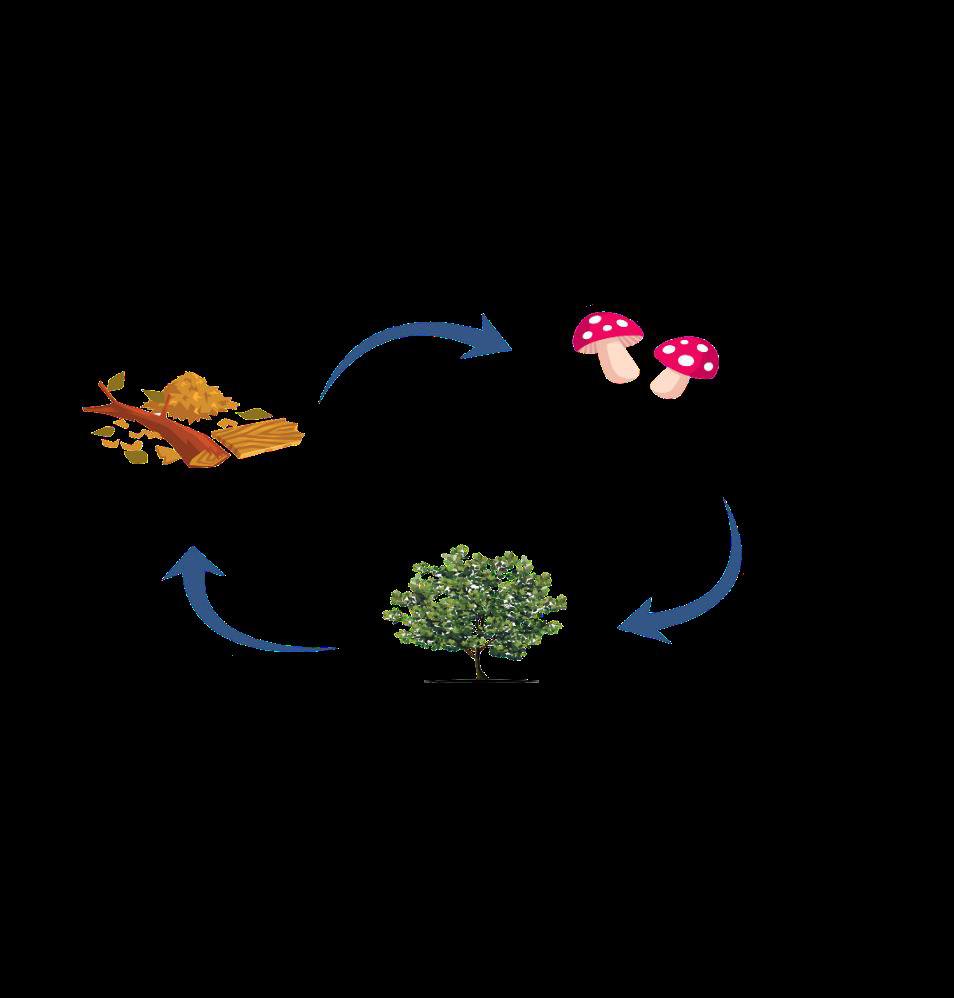
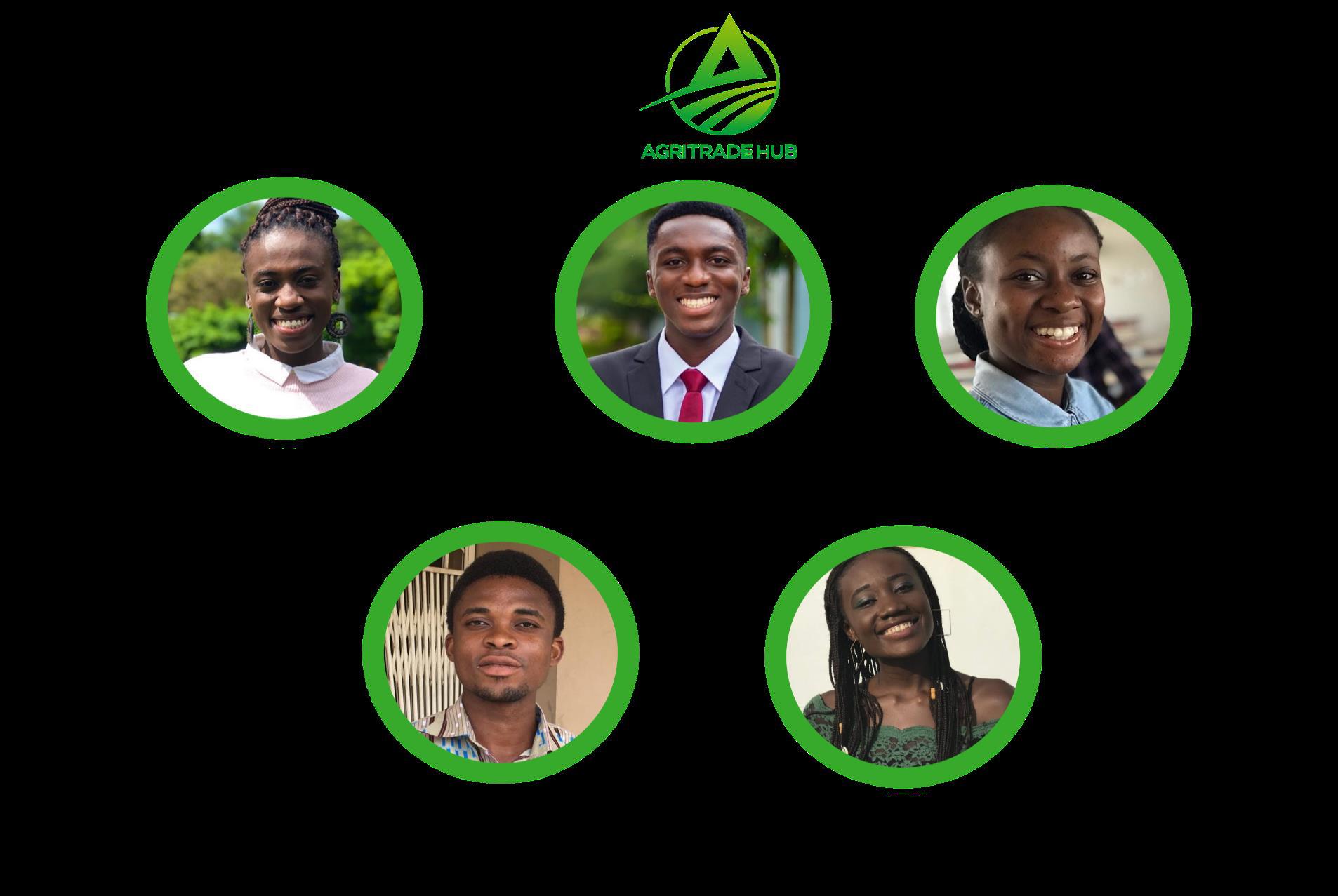

AgriTrade Hub is focusing on using tons of wood waste, specifically sawdust, generated by wood workers as a mainstream of resource; transforming the wood waste as substrates for the cultivation of high-protein oyster mushrooms, after which the spent mushroom compost will be reused to fertilize and grow forest and ornamental trees. This will be coupled with leading inhabitants in our chosen scope and surrounding communities to embark on tree planting exercises to help protect life on land and to mitigate harsh climatic changes.
• Mrs. Angelina Manu
Landscape Designer and an Agribusiness Entrepreneur.
• Mr. Paul Yeboah
Founder of Ghana Permaculture Institute/Eco-Village.
• Mr. Emmanuel Ebanyenle (PhD)
Senior Research Scientist at the Forestry Research Institute of Ghana (Fumesua, Ashanti Region)
• Mr. Ernest Osei Bonsu
Food and Nutrition Specialist, CEO of Ernestob Food Court,
SOLUTION SUMMARY
USACH, Business Administration
Yadin
HeraldoUSACH, Business Administration
VeraFernanda
Mentors Professor Leonardo Gordillo
Academic of the Physics Department at the USACH
Daniel Martínez
USACH, Chemical Engineering
Franco
ÁlvarezUSACH, Physical Engineering
FloresNazareth
PUC, Integral Design
CONTEXT
Tanzan a has a populat on of more than 56 m l ion of peop e and ts economy s high y dependent on agricul ure, which accounts for 26% of the gross domest c product (GDP) and about wo-th rds of the tota exports Tomato (Solanum ycopers cum) s the s ng e most dom nant vegetab e crop which contributes the highest percentage (63%) of all annual y harves ed fru ts and vegetables in Tanzania (Minis ry of Agriculture Food Secur ty and Cooperat ves, 2012) A survey done by Match-Maker-Associates-Lim ted shows that, tomato product on in Tanzan a s basica ly in the temperate areas nclud ng Southern and Northern h ghlands (MMA,2008) Furthermore, among regions cu tivating tomatoes, Morogoro has the argest area of about 2,442 ha (9 2% of its and), ol owed by Kagera (2386 ha,9%), Tanga (2,326 ha 8 7%), Mwanza (2,235 ha, 8 4%) and Iringa (2,223 ha 8 4%) The biggest markets for tomato are urban areas including Dar es Salaam, Mbeya, Moshi and Arusha
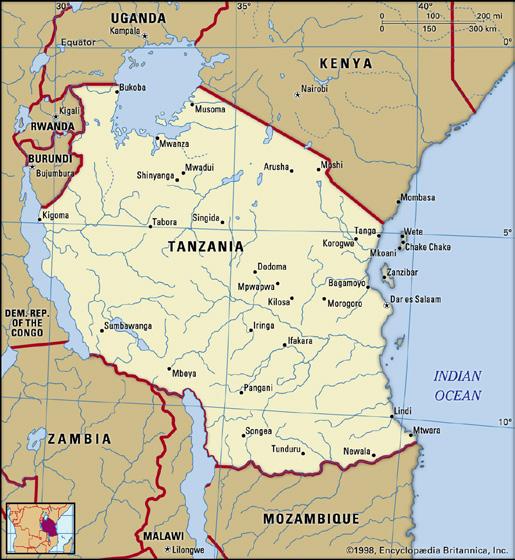
Tomato contr butes the h ghest percen to the ru t and vegetables consumed in Tanzania Its high consumpt on is attr buted to the presence of bioact ve compounds and v tamins known to prevent noncommunicab e d seases However, synthetic pesticides used to contro pests and d seases cause direct accumu ation of pesticide residues in food Consumpt on of pest c de contam nated omato ncreases the risk of pest c de exposure Actual y eve s of pes ic de residues in tomatoes consumed in Tanzan a exceed the recommended max mum residual l mits As such in order to assure pesticide safety of food, there s a need to identify and control farmers pract ces wh ch are h ghly assoc ated w th pesticide contam nat on in tomatoes

Health effects of synthetic pesticides
Al synthet c pesticides can be harmfu , although the evels of tox c ty vary from pesticide to pesticide Most comon toxicity s a long-term low- eve exposure or chron c toxicity wh ch s l nked w th pest c de residues n food as well as contact with pesticide res dues in the air, water soi , sediment, and food Higher consumers of synthet c pest c de con aminated tomatoes have the greatest exposure to these pesticides
Effec s of pest c des ranges rom m ld skin rr tation to b rth defects tumours, genet c changes, b ood and nerve disorders, endocr ne disrupt on, and even coma or death (Hong-Sheng Wang et al , 2011;Tebourbi et a , 2011) It a so affects reproduct ve, endocr ne and mmune systems Chron c exposure causes nferti ity, neurobehavioral d sorder, d seases such as cancer and mutagenic effects (Al-Wa l et al , 2012) Furthermore, Intensive appl cat on of pest c des affects, n addit on to human hea th, the env ronment due o residues that remain n dif erent env ronmenta matrices as wel as water and air (Mekonen et a , 2014)
We wi l elim nate the use of synthetic pesticide in tomato production by producing organic pesticides made from Tithonia diversifolia (Mexican sunflower) We will also make organic fertilizer made from Tithonia diversifolia and leverage on tomato wastes for biogas production for cooking This system will not give any room for the use of inorganic nputs thereby giving a secured so ution to land degradation and environmental restoration Page
Focusing on farming in Tanzania, Sutote’s proposal set out to eliminate the use of synthetic pesticides in tomato production by producing organic pesticides and organic fertilizer made from Tithonia diversifolia, the Mexican sunflower. Their closed-loop system includes leveraging the tomato waste for biogas production, which can then be used for cooking. Because this system does not include any inorganic inputs, it also works to combat land degradation and assists with environmental restoration.
Integral designer and biomaterial researcher of PUC
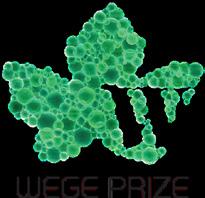
In Chile there are several types of palm trees, especially the Chilean palm tree Jubaea Chilensis and the palm tree Brahea armata, known as the blue palm. Nowadays discarded palm leaves are treated as a waste. These palm trees are used as decorative plants throughout the country. Specifically in private condominiums, municipal parks and houses.
Although there is only a cadaster of the Chilean palm, existing more than 2 and a half million throughout the country, palm trees of all types are abundant in all regions of Chile due to their great resistance to the different types of climate. Additionally, Palm trees need constant maintenance, especially the blue palm whose palm leaves are shed more frequently and must be removed.

On the other hand, Chile is a country with a high rate of inequity, which is reflected in the existence of neighborhoods with higher and lower income. Santiago de Chile, the capital, has more than 7 million people and 32 communes, which are neighborhoods governed by their own municipality. These municipalities are in charge of maintaining their green areas and pruning the dry leaves of the palm trees. People who work cutting the palm leaves in private houses, condominiums and green public areas often dump the waste in illegal landfills.
Overcrowding is a serious problem for most cities and Santiago of Chile is not the exception. This problem has increased exponentially during the pandemic, where all the family members have to be in the same place 24/7. We believe that people deserve some privacy and we could give it to them, creating the “Aislate” sound isolators from old palm leaves.
In our country there are several difficulties in becoming a homeowner. According to the Property Prices Index Rate (PIR), it is almost impossible for close to 80% of the population (Cox, W., Pavletich, H., and Hartwich, O.,2019). They will need three years of their complete salary to buy an average home at the formal market. The first quintile, being the poorest segment, will need 28 years paying each month their complete salary to finish a house debt (TECHO-Chile, 2019). Besides, paying rent is also difficult. The average home costs correspond to a 48,23% of the total income, where the average for the OECD countries is 22,3% (Centro de Estudios de Ciudad y Territorio, 2020).
This situation leads people to take poor options such as living in camps, renting illegal apartments that exceed their capacity or living with other family members.

Each scenery leads to several problems of overcrowding, where 47% of households are in that position. Overcrowding negatively affects life quality and people development, a situation that has increased now because of the pandemic, one of the biggest problems carried with that is the lack of privacy that affects simple routines for most people.In addition, during the pandemic more than 4000 complaints of annoying noise were registered only in buildings in Santiago, June (2020).
As a response to excessive noise caused by urban overcrowding in Chile, The Chilensis designed sound-isolating acoustic panels, called Aislate Panels (Spanish for “isolate yourself”) made from palm tree leaves. These panels not only absorb sound when installed, leading to an improved quality of life, but also combat palm leaf waste and can be composted after use.




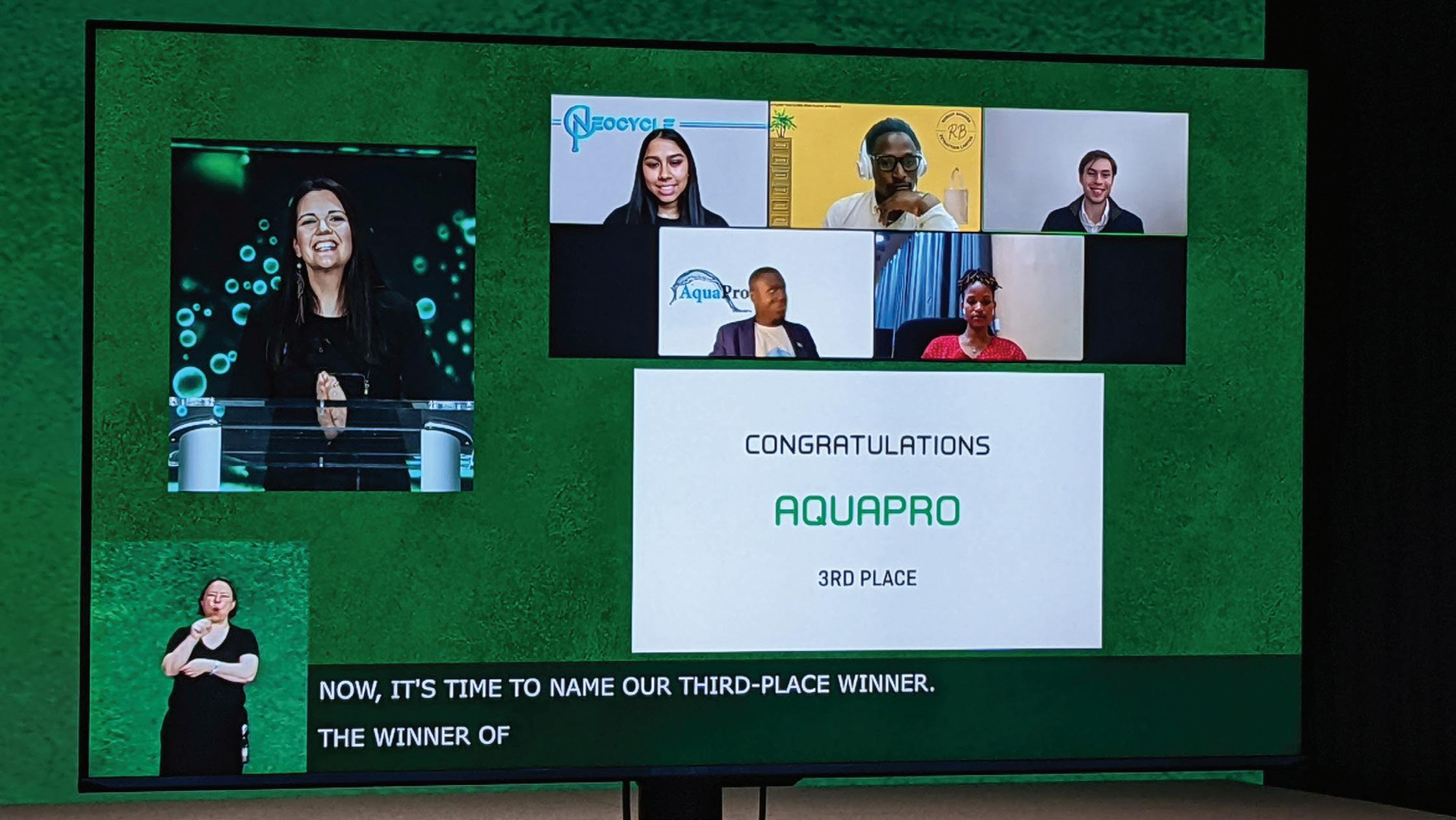

31 Teams / 155 Participants / 70 Schools / 97 Disciplines / 29 Countries
A five-year grant commitment from The Wege Foundation strengthened the backbone of the program, allowing for continued growth and expansion for years to come.
An increase in the yearly prize purse from US$30,000 to US$65,000, following an increase in application quality, to support turning proposed ideas into real action.
Expanding judges, staff and requirements asking teams to identify UN Sustainable Development Goals in their proposals and increasing support and feedback given to participants throughout each phase.
The team Green Promoters created a way to reduce and eliminate the effects of chemical pesticides and fertilizers by developing and marketing their own organic pesticide-fertilizer, called EZA Two-in-One. The product can be used as a pesticide and fertilizer at the same time, and it is shown to be environmentally friendly, safe and affordable. The new product and processes benefit the challenges of waste and idle resources in various communities while creating new opportunities. The introduction of EZA Two-in-One promises to reduce the costs of imported inputs while also promoting safety in agricultural production.

Rare earth elements, known as REEs, are ubiquitous in everyone’s day-to-day lives and essential in many modern technologies, from personal laptops to catalytic converters in vehicles. As the demand for REEs has been growing exponentially, it has become clear that the current supply chain cannot sustain global demand. NEOCYCLE aims to utilize electronic waste, a massively untapped source of REEs, to develop a novel and sustainable synthetic biology approach for circular REE extraction, recovery and usage.

This innovative aquaponics system combines the recirculation of aquaculture with plant culture in the absence of soil. The circular system focuses on growing fish, duckweed, and vegetables, reducing the use of external fish feed, fertilizer, soil and water. High-nutrient water is circulated from the fish to the crops, the crops absorb the nutrients to grow duckweed and duckweed then feeds the fish. Waste from human consumption of the grown vegetables and fish is recirculated back into the system as a compost liquid to supplement continued crop growth.



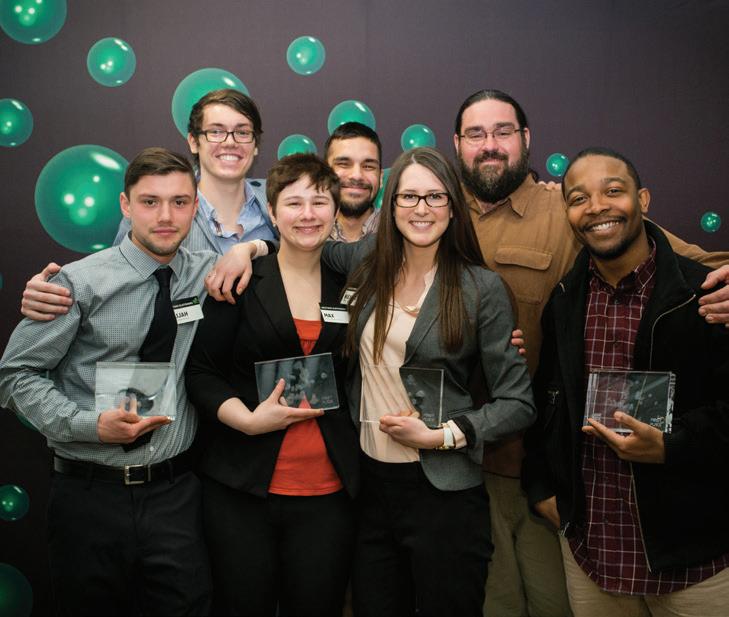


Wicked Solutions Inc. (page 33)
In 2014, the second-place Wege Prize team was Wicked Solutions Inc., an all-Michigan team made up of two students from Kendall College of Art and Design, two from Hope College, and one from Aquinas College. The team’s goal was to offer a better alternative to single-use LDPE plastic bags by creating a circular economy built around bags made from renewable, plant-based polymers. To close the loop, customers would return used bags to the store, where they could be recycled into new bags.
While the project was not brought to life, team member Evelyn Ritter, who studied mechanical engineering at Hope, continues to work in the field of sustainability. She is now director of customer success at Toxnot PBC in Fort Collins, Colorado. The company offers a software platform that helps product manufacturers choose safer chemicals for their products and highlight sustainability improvements to their customers.

Evelyn says she continues to use problem definition skills that she learned during her Wege Prize experience. “Both at Wege Prize and in my job, we would find a reason that a project would not work or a problem that had stopped other similar solutions,” she explains. “Many times, when you start asking questions about why the person is currently doing things the way they are, you find there is actually a totally different problem to be solved. A good example from my current role is that a customer asked if we could import this strangely formatted list of chemicals, [that had] many mistakes and misspellings. When I asked where the data came from, it turned out they were manually typing data from safety data sheets into the spreadsheets. Instead of making the inconsistent spreadsheet import work well, we developed a tool to import chemical data from safety data sheets, saving them and many other customers hundreds of hours of analysis (and tedious data correction!)”
Another skill she applies in her current job is using pictures to help the whole team visualize problems and solutions. During the Wege Prize process, she says, her team spent a lot of time discussing and not quite understanding each other, until they turned the concept into a diagram or charted it out. “These are skills I use at my job weekly when I need to make sure the development team at Toxnot understands what the customer wants and is trying to do,” she says. “This makes sure they can design software that’s really user friendly and solves the issue.”
The Wege Prize experience also helped Evelyn build her professional network. “Two of the judges are still in my network today and have exposed me to many additional development opportunities, [including] the safer chemicals efforts that I now work on today,” she says. “I am incredibly grateful for their influence. For example, I attended the Ellen MacArthur Foundation’s Circular Economy Pioneers program in London last year after hearing about it from Colin Webster, one of the judges.”
Overall, Evelyn says, “The most important thing Wege Prize taught me about being an entrepreneur [is] that you don’t have to be a superhuman to do it. It exposed me to successful people who were making a difference in the world but weren’t Steve Wozniak-genius or Barack Obama-charismatic. It showed me the opportunities that were out there and how big of a goal I could shoot for.”
Western Sustainers (page 36)
Kelsey Pitschel joined four other graduate students from Western Michigan University to form Western Sustainers, the team that won first prize for its zero-waste Local Loop Farm concept in 2015. Now a mechanical engineer at Tower Pinkster in Grand Rapids, Michigan, she credits her Wege Prize experience for teaching her the value of collaboration.

“Everyone on our team had different perspectives since we all had different majors,” she says. The team also included students in biomedical sciences, geography, public relations and civil engineering. “That made me aware of my own potential biases and blind spots, since we could talk openly about the design and its consequences, which were especially important in a circular design.”
Bringing everyone into the discussion took deliberate planning. Kelsey says the team’s brainstorming sessions were always held in person so each team member could contribute to the solution. “I remember all of us being aware of everybody’s voice,” she says. “We had to check ourselves and think about who hadn’t spoken for a while and bring them into the conversation. I think about the collaborative part all the time, especially when I’m working on complex systems.”
It wasn’t just the students who contributed to the Local Loop Farm plan. “To complement our own research, we also pulled a lot of expertise from the Kalamazoo community to help with the systems we were using in our project,” she says. “We had farmers, permaculture experts and engineers in the community, and I still consider a few of them friends to this day.”
Wege Prize also helped Kelsey build her project management skills. “From following schedules to budgets to meeting sustainability goals if they are there, it helped me understand how to see the big picture and the whole team scope when I’m a designer on a project. I definitely use those skills today.”
After winning the prize, several students on the Western Sustainers pursued the Local Loop Farm idea for a while. “One of our team members even bought some land and did a small test, but it’s not running on the scale we designed it,” she says. However, in the seven years since receiving the prize, team members have branched off into their own disciplines, and the prize money helped to fund their spinoff projects.
Looking back on her experience with Wege Prize, Kelsey says, “I feel like I learned so much from my peers. I loved working with them. It was a flip on the traditional academic learning setting, but I really value the opportunity I had to do that.”
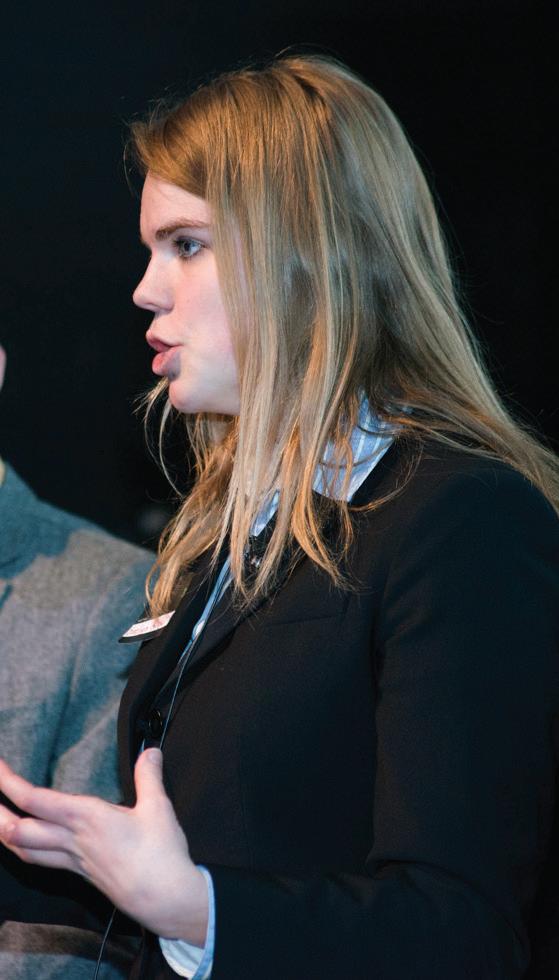
3rd-Place Team
The Originals (page 37)
Since competing in Wege Prize, John Worthley has presented his sustainability capstone project (sustainability modular intensive aquaculture units powered on helio 4 x 9 lithium ion batteries, designed to be 1.34 times more efficient and 4.3 times longer lasting than 13.5 kWh Tesla Powerwall 2) at Reykjavik University’s Iceland School of Energy; worked for IBM for an eight-month stint integrating Watson with Collanote, IBM’s collaborative note-taking platform; and helped found and worked for ICOToday, a startup that developed a platform to launch and invest initial coin offerings, the cryptocurrency space’s equivalent to an initial public offering. He is currently working as a managing partner for Azure Black, a company that helps launch and grow successful cryptocurrency-related businesses.

manager in the Kenyan Parliament; and most recently, the founding of The Leadership Initiative Kenya (TLI), a youth-led program that works to raise funds to send underprivileged children in Kenya to high school. TLI also works on building leadership among the youth through mentorship.
2nd-Place Team
KYCE (page 41)
Post-Wege Prize, Stephanie Musho’s journey has included a stint as an assistant producer with NPR’s “The Moth” (focusing on a special Moth program in Nairobi, Kenya, called Stories of Women & Girls); participation in the Youth African Leaders Initiative Regional Leadership Center, an initiative launched by President Obama to invest in the next generation of African leaders; a yearlong stint as an associate with Fanaka Consulting (run by a senior adviser to the Bill & Melinda Gates Foundation) in which she helped advance the firm’s efforts to advance gender equality in Kenya; a 10-month stint as a deputy county office
LYDIAH MPYISI

2nd-Place Team
KYCE (page 41)
Kenyan Youth for a Circular Economy (KYCE) earned second place in the 2016 Wege Prize competition. The team was made up of five Kenyan women studying at Anglia Ruskin University, Westchester Community College, EARTH University and Roanoke College, including Lydiah Mpyisi.

KYCE’s goal was to create a circular economy in Kenya, integrating a trash-powered community cooker, the human waste-to-fertilizer system PeePoo, community gardens and bio-digesters to create a self-sustaining system. They hoped this circular economy would create employment, improve sanitation and hygiene, enhance the aesthetic value of the urban slums, and improve the overall health of the slum communities.
To tackle the complex problems faced by inhabitants of the slums, Lydiah says, the team first brainstormed reasons why the problems came to be. “With the latter in mind, we proposed solutions that can address the causes and picked the most practical ones to implement.”
After seeing the value of this approach in problem solving, she continues to use it in her daily life.
Lydiah also appreciated the teamwork aspect of the project. “I enjoyed getting input from individuals from other disciplines and using an interprofessional approach to problem-solve,” she says. Despite the time difference and variety of perspectives involved, she says, “It was eye-opening to experience working in groups with people living in different geographic locations.”
Following Wege Prize, two of the team members implemented Lydiah’s idea in Kibera Slum, Nairobi. Their community organization, known as Kilimo Jijini, combines urban farming techniques with financial literacy and entrepreneurship. While Lydiah is not involved in this project, she says, “I am glad the people of Kibera are benefiting because that is all I wanted to do.”
Today, Lydiah works as a clinical research compliance specialist for Virginia Commonwealth University Massey Cancer Center, and she is applying for medical school. She says, “Through participating in the Wege Prize competition, I learned to be thorough and confident. I also improved my negotiation skills and learned more about group dynamics and how to solve conflicts within groups.”
Thanks to her Wege Prize experience, Lydiah has been asked to co-create and co-teach several environmental studies classes. “I have given several lectures on grant writing, community outreach, budgeting, sustainability and many more,” she says. “If I could participate again, I would!”
the plant’s solar arrays and reducing its waste output. While this plan was not implemented as described in their Wege Prize project, team member Brinda Yarlagadda says that similar projects are being done by professor Jose Alfaro and his current students at the University of Michigan School for Environment and Sustainability.
Following her graduation, Brinda took an internship with the National Renewable Energy Laboratory in Colorado, where she used production cost modeling software to identify potential applications for dynamic line ratings. She continued to do research with her project mentor, Jose Alfaro, and he became her undergraduate honors thesis advisor. “I believe that the sustainability-focused research I did then helped me land my current job,” she says.
Today, Brinda is a post-bachelor’s research associate at the Joint Global Change Research Institute of Pacific Northwest National Lab in College Park, Maryland, where she works on energy and climate policy research. In her current role, she says she often draws on the skills she learned during her Wege Prize experience.
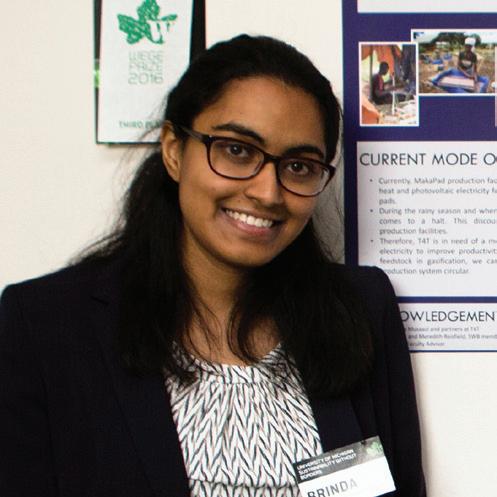
2016
BRINDA YARLAGADDA
3rd-Place Team
University of Michigan Sustainability
Without Borders (page 41)
The third-place team for Wege Prize 2016 was University of Michigan Sustainability Without Borders, a five-person group of international students studying at the University of Michigan. Their team came up with a plan to help the Ugandan company Technology for Tomorrow Ltd. (T4T) adopt a circular model for providing heat and power to its production facilities, which manufacture sanitary pads from papyrus.
The idea was to upcycle papyrus and paper waste from the factory into affordable and clean energy via biomass gasification, complementing
“I learned a lot about presentation skills in how to prepare the poster and give a presentation that a diverse audience could understand,” she says. “I also learned about the diverse experiences people from different disciplines and places have and how their diverse skills enhanced the project. I still do these things today, and they help me in the same sort of way.”
2017 OCTAVIO JOSÉ

SANABRIA VINDELL
2nd-Place Team Somos (page 45)
As the second-place winners in Wege Prize 2017, Team Somos consisted of three students from Kendall College of Art and Design and two from
Autonomous University of Nicaragua. Their goal was to eliminate waste in coffee production by creating a cooperative among small Nicaraguan farms, green coffee importers and consumers in order to reuse resources or turn them into revenue streams.
Due to a combination of circumstances and lack of funds, Octavio José Sanabria Vindell says the project has not been implemented at this point. However, he has leveraged his education and Wege Prize experience, including “ideas from the circular economy, which must always be taken into account,” to continue working in the field of sustainability.

Today, Octavio is the owner and general manager of EMSE-RENOVABLES
S.A., a renewable energy company that sells, designs and installs renewable energy systems in Esteli, Nicaragua. His business offers various services and products regarding renewable energy, from the design and calculation of photovoltaic systems to the installation of these systems.
Like other Wege Prize participants, Octavio credits the experience for giving him an appreciation for diverse teams. “The way in which our team was multidisciplinary helps execute a project,” he says. In his current business, he says, “My partners and I complement each other because we have different skills and knowledge which help us to successfully carry out a job.”
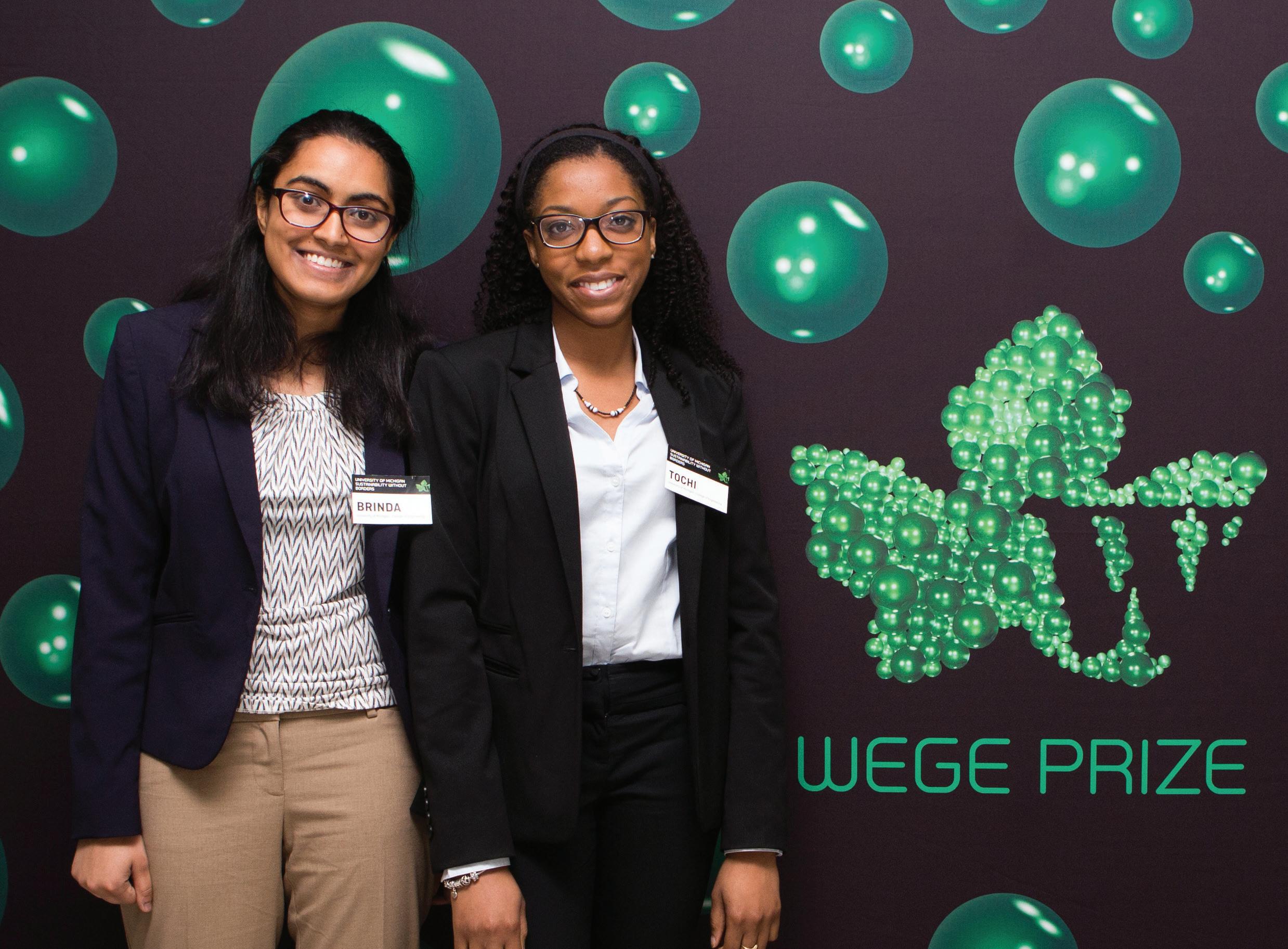
Understanding the value of seeking outside expertise, as Team Somos did via field visits and other studies that relate to feasibility, the environment and the economy, also continues to guide Octavio today. “I do not use this completely in my work, but it does help me to get ideas,” he says.
He also appreciates the confidence the experience gave him in preparing for his career. “Having participated in an international award and having won second place gives me a very high level of professionalism,” he says.
3rd-Place Team
Cheruvu (page 45)
After Wege Prize, Samhita has continued her work with Cheruvu, employing data science to improve the productivity of small farmers in developing countries. In the summer of 2017, she joined the Rocky Mountain Institute as a senior associate, where she contributes to the organization’s research, publication, consulting and lecturing efforts in the field of sustainability. According to its website, Cheruvu has to date impacted a total of 3,600 farmers in 54 villages and conducted 2,700 soil tests.
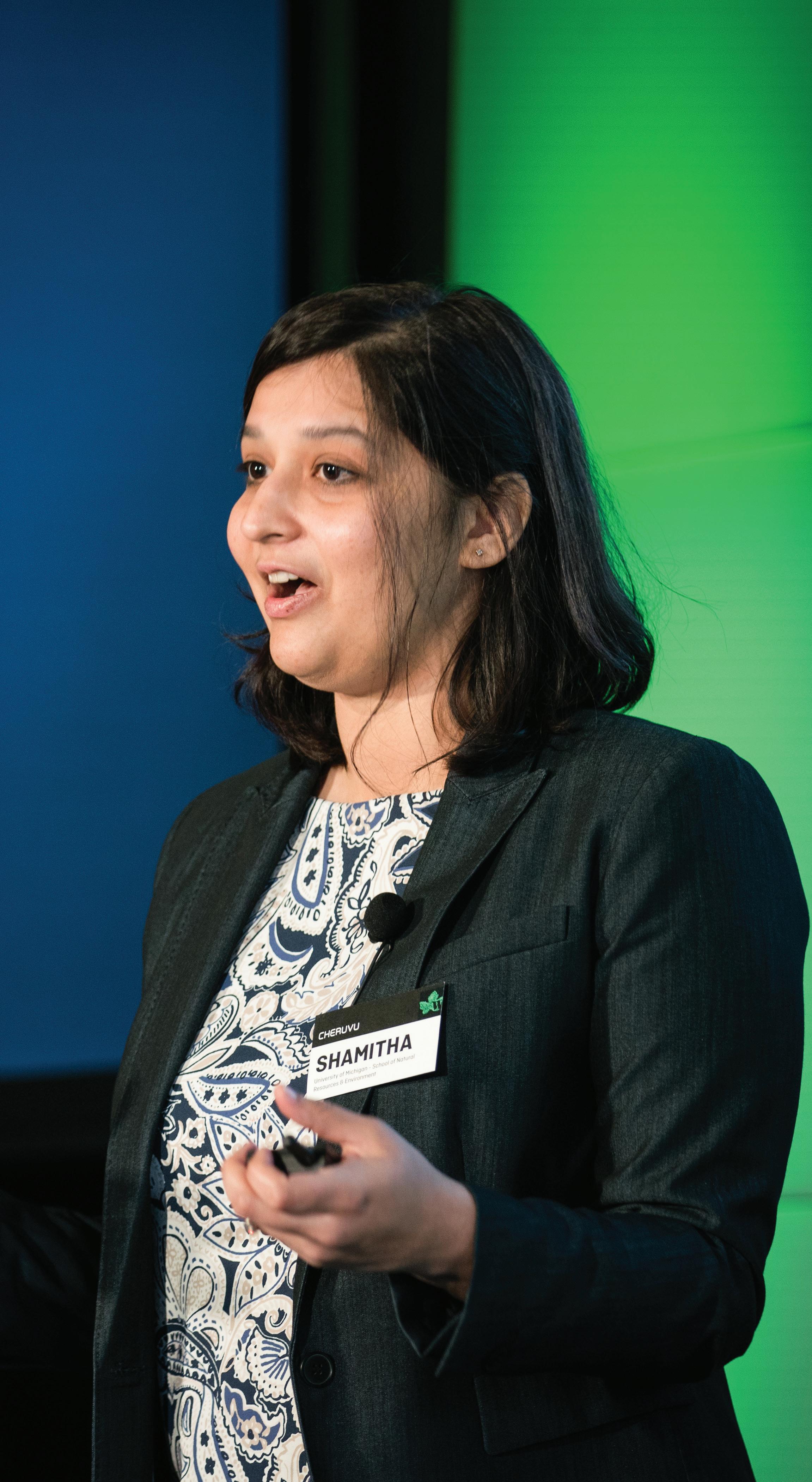

1st-Place Team
Circular Tourism Mexico (page 48)
Since winning Wege Prize 2018 with its ecotourism company Rutopia, Circular Tourism Mexico has continued to grow their business rapidly and successfully. Led by Emiliano, the company now offers 10 uniquely different trips and has hosted a significant number of successful trips. Their support network now includes over 400 communities all over Mexico. Emiliano and his Rutopia collaborators were also named the winner of the 2019 Hult Prize, a $1 million award that positions these incredible young people to widen their impact in their native Mexico and beyond with their work.
When speaking with Emiliano, he shared that one of the most valuable aspects of his Wege Prize experience was the feedback loops with
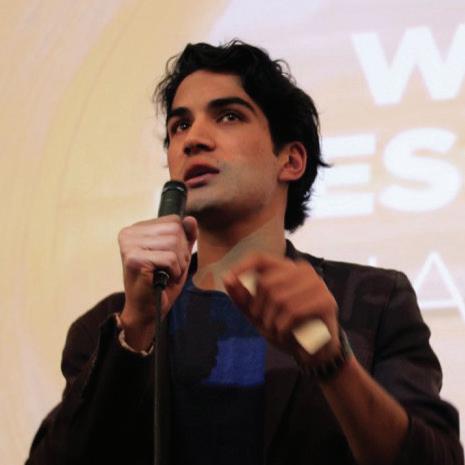
different judges throughout each phase, noting that their level of engagement is unlike that of any other competition. Additionally, Emiliano noted that the team members still sometimes reference their initial research work for Wege Prize to make everyday business decisions because many of the theories of the circular economy included there are still relevant. “[It’s] still our North Star, and that’s where we want to go, to really be able to measure the regeneration of ecosystems and social issues and the communities that we work with. It’s something that’s still very important for us,” he said.
65 customers and have converted over 440 kilograms of waste to fertilizer. Audrey says, “We do a lot of pilots with local farms, and we’re still in the lab creating blends and preparing to take upcoming projects.”
Many of the design thinking approaches the team relied on during the Wege Prize experience still guide Sabon Sake today. “The whole framework is research and analysis, and we use a lot of empathy maps to understand the customer journey and the industry and sector we’re in. We also use prototyping to test whether a product has features or benefits that customers might like now or in the future. We’ve done a lot of iteration since the time our group first presented our idea, and we’ve also pivoted quite a lot to make the design more sustainable.”

Sabon Sake (page 49)
2018’s second-place team, Sabon Sake, focused on using biotechnology and web-based technology to transform waste from sugarcane farming into bio-compost fertilizer instead of burning it as farmers traditionally had done. The goal was to create a more circular economy that would help rural farmers in Ghana’s Volta Region achieve greater yields, reduce crop losses and overcome poverty while reducing harmful environmental impacts from burning.
Since graduating from Ghana’s Ashesi University with a degree in business administration, team member Audrey S-Darko has helped transform the idea into a full-fledged company, though its focus has evolved since then. “We went in focusing on just the farmer,” she says.
“After going back to research and analysis, our go-to-market strategy was to concentrate on companies that were willing to restore lands they’d degraded. We realized that we could make them our primary market and make the farmer secondary.”
Today, Sabon Sake is selling bio-blends to boost the fertility of soil in sub-Saharan Africa. They have a core team of four employees, serve
Working on Wege Prize also underscored Audrey’s belief in the importance of diversity and inclusion. “We had a science person and a business person on board, and a mix of field experience. That created a really rich blend of perspectives, and having different skill sets and personalities in the team taught me how to learn, manage conflict, communicate better, and help people feel like they belong,” she says. Sabon Sake still makes an effort to include women and diverse viewpoints on the team. “About 70%-80% of our volunteers, temporary workers and core team are women,” she says. “And not just Africans. We also have people from outside Africa on board as advisers, and we work with people from business, biotech, and IT backgrounds. I hope to become even better at that.”
Overall, participating in Wege Prize was a valuable stepping stone for Audrey. “The whole project gave me a lot of confidence to keep taking a step forward,” she says. “Even after the presentation, hearing feedback from the audience and judges and having people writing to me gave me a sense that, hey, this business model could work! It built up my confidence and resilience. We just have to hang in there and keep going.”

3rd-Place Team
Booming Babies (page 49)
The third-place team in 2018 was made up of five students from Princeton, Yale and Michigan State universities. Their project, Booming Babies, aimed to turn children’s clothing into a circular economy, offering secondhand clothing through a subscription service and partnering with fabric dissolving/melting firms to turn worn clothing into new fabric suitable for babies.
While Booming Babies was envisioned as an online market, team member Melissa Mazzeo is currently the CEO and co-owner of a brick-and-mortar children’s resale store, Merry Go Rounds, in her home state of Massachusetts. “My mom had owned this business for 20 years, and I was inspired to take it to the next level,” she says. While the store offers clothes for sale, not rental as originally detailed in Booming Babies, she is working on ways to incorporate some of the group’s innovative ideas. “We still want to offer the option to do a customized box of outfits for each customer as we would have for the subscription service,” she says. “The difference is that you purchase and own the clothing — but if you want to resell it back to us, you can.”
Melissa has found the user experience skills she learned during her Wege Prize experience especially valuable to her business. “The customer experience way of thinking is something we’re trying to do with everything,” she explains. “I was talking to the partner I’m working with to launch our custom box, and we were working out all of the steps from a customer perspective. From logging on to navigating to specific pages to answering questions, putting ourselves in the shoes of the customer helped us recognize gaps we would have missed otherwise.”
“Our team and our judges were our external feedback providers during the experience,” she explains. “The feedback process itself was really interesting. At the time, it seemed very intensive, but it helped us shape our vision and strategy, and to think on a more condensed timeline. I got a lot of value from that, and it made me more open to constant change. That’s been helpful as we figure out how to adjust to a pandemic and having the shop closed for three months. We’ve been pivoting and trying a whole bunch of different things, with a mindset of staying responsive and flexible.”
Melissa has remained in contact with several of the people she met through the experience. “One of the judges recently messaged me wondering about the status of Booming Babies,” she says. “That was really cool. I wasn’t expecting them to have interest this far out. I’ve also seen some of the other contestants. Audrey S-Darko was visiting the U.S. and stayed with my family for a while. At the time, we were competing against each other, but all of the teams in my cohort really did like each other.”
Reflecting on her Wege Prize experience, she also values the collaborative style of the project for teaching her how to work with all kinds of people.
REDENT (page 52)
First place in the 2019 Wege Prize competition went to REDENT, a five-person team made up of students from Wellesley College, University of Wyoming, Ashesi University, African Leadership University and EARTH University in Costa Rica. The winning project proposed a method for Nigerian farmers to recycle cocoa pod husks into organic fertilizer, helping them practice more sustainable agriculture and take advantage of a new income stream.
REDENT team member Collins Patrick Ohagwu, who is currently in his second year at EARTH University, says he is still working on

implementing the project in Nigeria, and he is also partnering with another international team to develop a project in Ghana.

“The project is still alive but has not grown as fast as anticipated,” he says. “I was in Nigeria from late December 2019 to early January 2020 and had the opportunity to visit the cocoa producing community in Kwara State, where we intend to pitch our first recycling plant. I also met with the community chiefs and several cocoa farmers and contacted some of the young community members who showed so much interest and are more than happy and willing to work with us.”
He adds, “Unfortunately for me, none of my Wege Prize teammates are presently in Nigeria, and we never thought that would be a problem until now. We had to recruit a new on-ground team and train them enough to run the project; which could be a risky thing to do, but we hope that all the measures we´ll be taking will at least mitigate the risks.”
While guiding projects from afar has been challenging, the experience of collaborating with international teams helped Collins become more efficient about time management and communication. “There´s nothing as important as a great team, especially during the first phases of a project,” he says. “However, since most of my teammates were in different time zones, we could only allocate duties and responsibilities for the weekdays and have a Skype meeting on the weekend to discuss our findings and decide on the way forward.”
He also valued the feedback from Wege Prize judges, which helped hone his solution. “Wege Prize has amazing judges who are excellent in their fields, so it really pays to listen to them,” he says. “I love that they give genuine feedback and the opportunity to rub minds together in order to improve the final product.”
As he continues to learn and bring his solutions to life, Collins reflects, “Being an entrepreneur is never an easy thing. It confronts the status quo and prompts one to think beyond what is readily available. I learnt to further sharpen my mind by considering all the variables and the value chain of every input into every project I work on. I just realized that if you really want to move forward, you must be prepared to take calculated risks.”
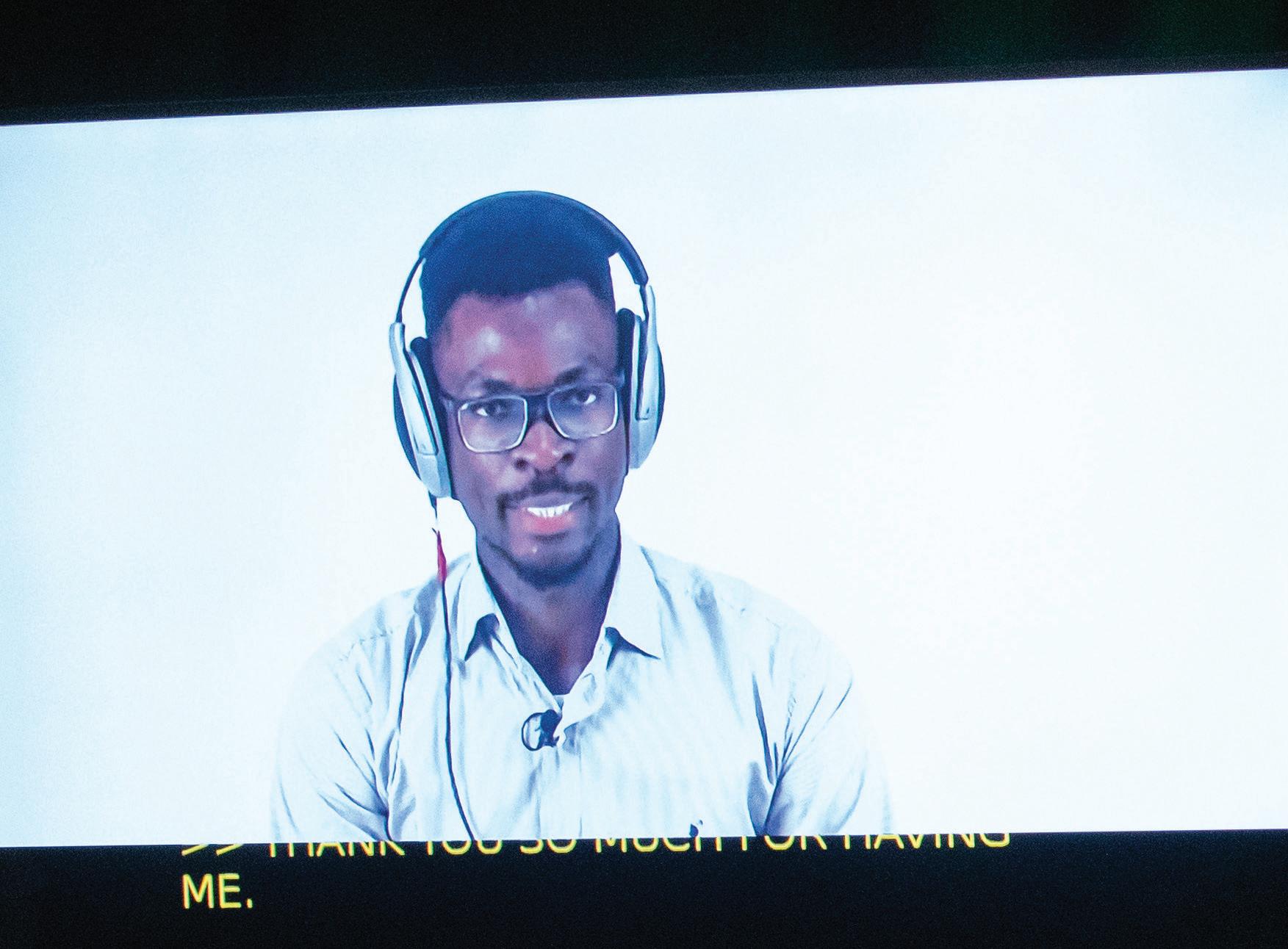
Wet Technik (page 53)
Returned for 2020 as part of the team
Hya Bioplastics and won first place (page 56)
Wet Technik, made up of five students from Makerere University School of Art and Technology in Uganda, won third place in Wege Prize 2019. The team’s project proposed using recycled bottle caps and pumice stone to build artificial wetlands that could recycle grey water from schools and factories.
In the past year, their project has continued to move ahead. According to team leader Mark Musinguzi, a final-year mechanical engineering student at Makerere University, they successfully designed and completed a pilot wastewater recycling plant at Africa Hall in Makerere University.
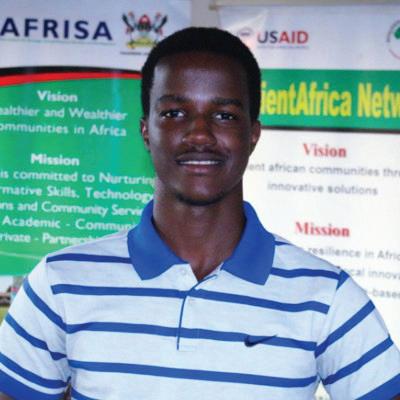
“The results were phenomenal! The water quality met the release standards of wastewater set internationally,” he says. It also helped eliminate pollution from direct wastewater release and provided valuable water that could be used for activities like agriculture and car washing.
As an added benefit, the project improved the aesthetic environment around Africa Hall, which was formerly a disposal site for grey water.
“The area was formerly soaked and posed a public health risk to the surrounding student community,” he explains. Wet Technik transformed the area, using treated grey water to irrigate a vegetable garden for the 600 students who live in Africa Hall. “The risk to public health has been mitigated, and three potential customers have expressed interest in the system and would like to have it in their residences,” Mark explains.
While developing the idea for Wet Technik, Mark says his Wege Prize team relied on a human-centered design approach. “We had to start off by deeply researching our end users’ needs and understanding the problems they were facing,” he explains. “We then had to ideate as a team about the existing assumptions about wastewater treatment systems and create new ideas. This led to the critical stage of virtual
prototyping, where we tested these assumptions, and then to the final implementation of the proven prototype.”
Mark says the feedback from the judges helped refine the concept and explore ways of incorporating the circular economy into the design process. “We were able to learn a lot about the impacts of climate change, and our minds were opened up to the different ways climate change can be mitigated through innovation.” They also networked with engineers at the Ministry of Water in Uganda and with Michael Werner, Wege Prize judge and lead for Circular Economy at Google.
From a financial perspective, Mark says managing the $5,000 award money from Wege Prize was also a good learning experience. “This helped me develop my project management skills and understand the different processes required to obtain financial support.” The team has since raised another $7,000 in financing for Wet Technik, and Mark says, “The project enabled me and my team to build our skills in pitching and proposal writing, which are key to accessing financial support.”
The next steps for Wet Technik involve testing the performance of floating bed systems in constructed wetlands in conjunction with the Civil Engineering Department of Makerere University. “We have as well engaged the government of Uganda to install such systems at various government-owned buildings and facilities countrywide. We are still actively looking for clients or customers who will want to install our systems.”
Team Biochar consisted of students from universities in four different countries: Kenya, Netherlands, Uganda and Ghana. These students came together to develop a system that would convert Ghana’s abundance of pineapple waste into biochar and compost to improve soil fertility, increase crop yield, and enhance food security while eliminating environmental pollution and reducing the spread of disease.
After competing in Wege Prize 2020 on this team, Emmanuel Hanyabui used the project idea and feedback he received from Wege Prize judges to apply to the UNITE 2030 Youth Delegate Program. Based on his application and this idea, he was selected for Cohort 4. UNITE 2030 is a peer-to-peer leadership development program for young change-makers who are taking action to tackle poverty, inequality, injustice and climate change by the year 2030. Hanyabui graduated from the University of Cape Coast with his Master of Philosophy in land use and environmental science in 2021.
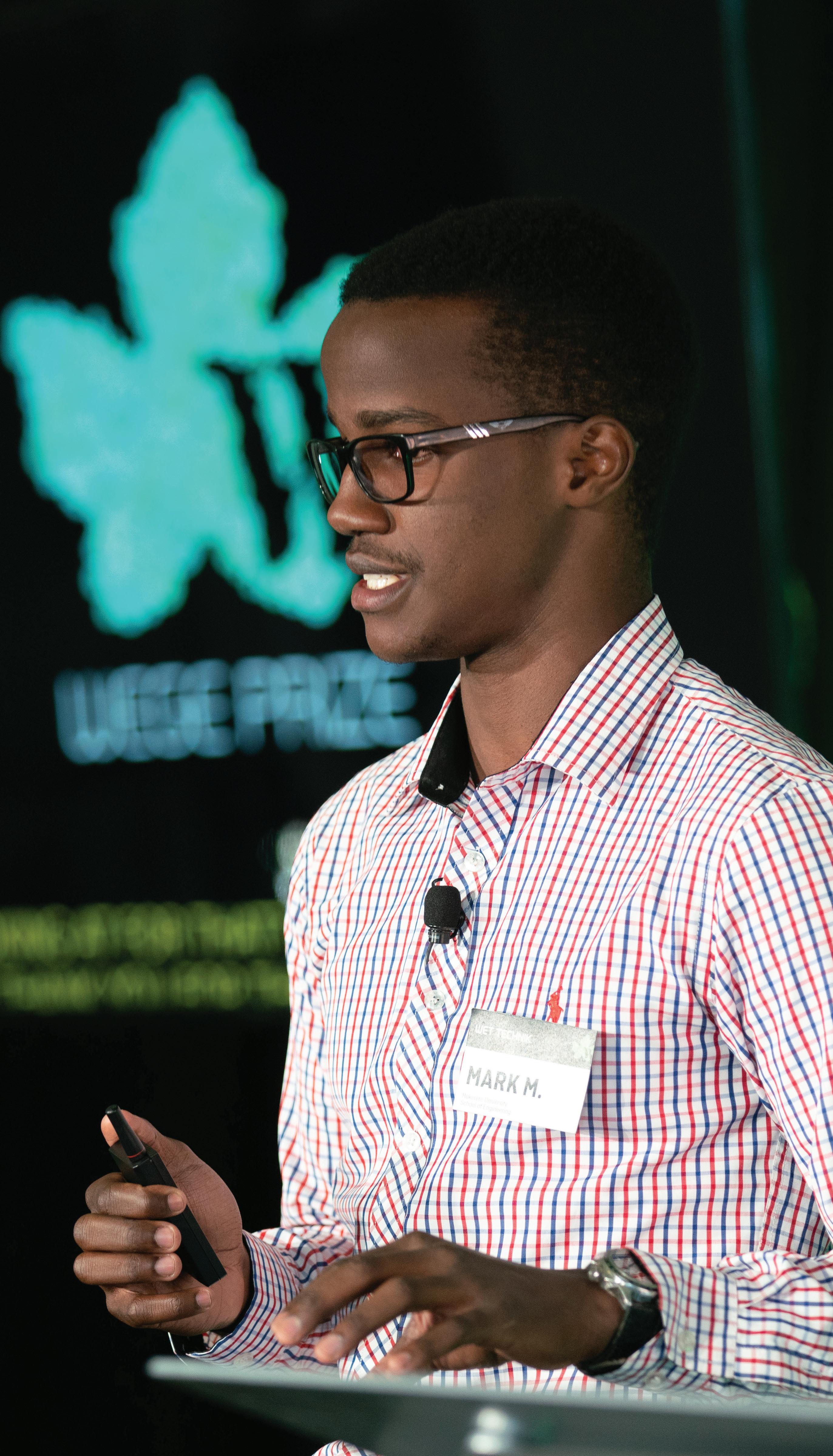
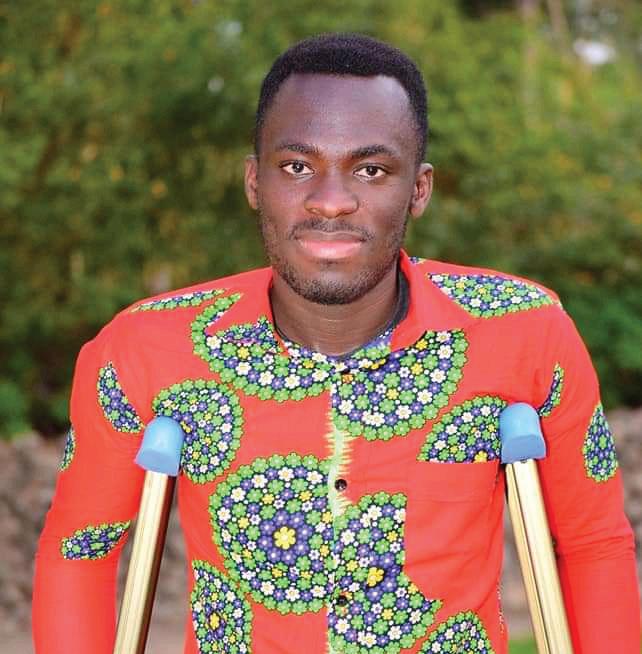

Emmanuel Kwesi Arthur, another teammate from Biochar, shared that the Wege Prize experience opened up additional collaboration opportunities, including research activities with top professors in the areas of economics and finance. When asked about what he learned from Wege Prize, he simply stated, that “I learned that the world is a limitless space capable of making every impossible thing possible.”
Arthur graduated from Kenyatta University with his Master of Science in finance in 2021.

1st-Place Team
AgriTrade Hub (page 60)
AgriTrade Hub competed in Wege Prize 2021 with its idea of developing wood waste and sawdust from increased logging in Ghana into nutrientbased substrates for mushroom production. Since competing in Wege Prize, the team’s agribusiness enterprise has continued to expand. AgriTrade Hub has increased itsworkspace in Ghana to include office space, an incubation room and a harvest room to expand mushroom production. It has also continued sales of its mushrooms in recyclable paper packaging, as previously planned.
When asked about what advice Christiana Oppong Brenya might give to current or future Wege Prize applicants, she noted they should “concentrate on [the] circular economy and how best their solutions address that. The world is in need of passionate individuals driven to tackle wicked problems with a touch of diversity, circular economy and unity.” Furthermore, Christiana shared her appreciation for the Wege Prize community and how it “involves youth of diverse backgrounds to practically create tangible solutions to real-life problems.”
2nd-Place Team
SUTOTE (page 61)
Team Sutote chose to work on the wicked problem of synthetic pesticides, which have been detected in the samples of irrigation water in Tanzania where many of the teammates are from. Sutote’s solution was the development of a closed-circle production system for tomatoes using organic pesticides from the Mexican sunflower (Tithonia diversifolia).

After competing in Wege Prize 2021, Tennyson shared that Sutote continued to test its organic pesticide in the laboratory on Colletotrichum sp. which causes serious losses in tomato and other fruits’ production. Additionally, Sutote conducted market research to better understand its target market, which was a recommendation from Wege Prize judges. To progress in product development, Sutote has successfully acquired land, installed water systems and constructed a greenhouse in Tanzania for product testing before starting the sale of its organic fertilizer and pesticides.
When asked about what he learned from Wege Prize, Tennyson mentioned, “We have learned that solving real problems requires real solutions that are not only economically feasible but also regenerative. We have also learned that success requires preparation and analytical skills. Through participating in Wege Prize, we have gained skills in project analysis and implementation, which are skills that we didn’t have before joining the Wege Prize community.”

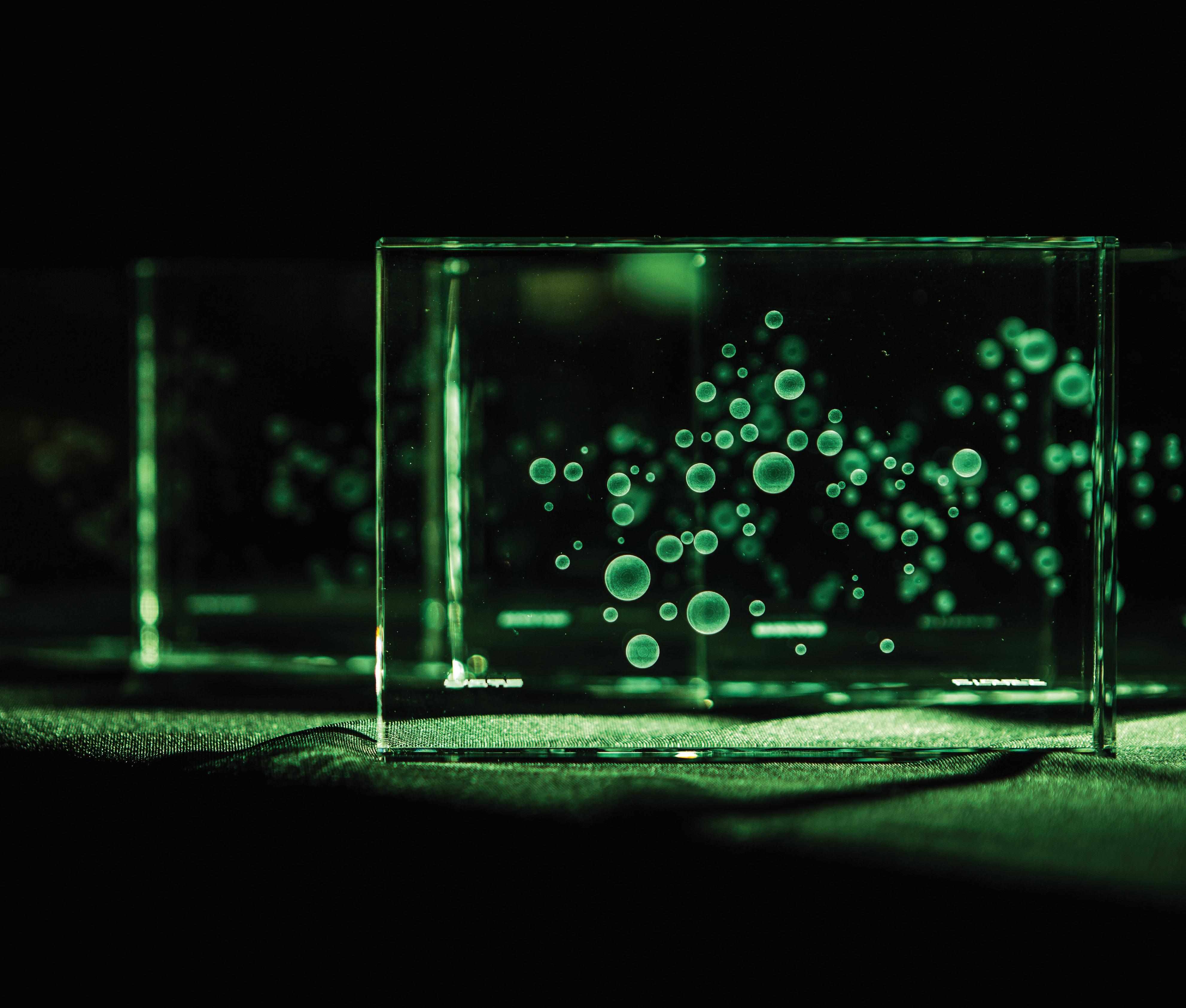
At its core, Wege Prize has always been fluid by design. The same steadfast dedication to experimentation, iteration and innovating from failure displayed by our teams year after year has been a constant undercurrent of our organizational efforts. Because the world we’re working together to change is nothing if not dynamic. So too are the wicked problems our fearless teams tackle, and the social, cultural and economic realities that surround them.
It is in this spirit of continuous evolution that KCAD and its Wege Center for Sustainable Design approach the tremendous opportunity to continue growing Wege Prize over the next four years through the generous continued support of The Wege Foundation.
For 2023, the Core Judge panel will be expanded to 10 professionals who reflect a diversity of expertise and come from different social and cultural backgrounds. For 2025-2026, the panel will be expanded even further to 15 judges. It all adds up to infusing teams’ efforts with a global perspective and focused guidance from experienced practitioners who are leaders and change-makers in their fields.
As we continue to enhance the breadth and depth of educational resources provided to participants throughout the competition, we will explore additional opportunities to incorporate a greater degree of personalized, one-on-one interaction between participants and judges, both virtually over the course of the competition and in person during the competition’s annual final event in Grand Rapids, Michigan.
We’ll also explore opportunities to foster connection and dialogue between participating teams throughout each competition cycle as well as create an active community of competition alumni to virtually meet and network with each other, competing student teams and prospective student teams. We will continue to refine the ways in which judges provide feedback that both challenges participants to interrogate their existing knowledge, perspective and experiences and encourages them to carry their work forward with passion and pride into real-world implementation.
One of the measures of success for Wege Prize is our ability to attract a diverse, driven and engaged pool of student participants. In the years ahead, we will continue exploring new ways to increase recruiting efforts, with the goal of an average participant growth rate of 10% per year over the next four years, while also continuing to grow the geographic, disciplinary and cultural diversity of the participant pool.
This will mean continuing to research and connect with pertinent faculty and staff contacts at colleges/universities and professional organizations around the world who can catalyze student participants and, through continued collaboration with our PR collaborators at C.C. Sullivan, increasing the scope and frequency of efforts to document the story of successful teams’ work, fostering relationships with relevant national media outlets, and sharing these stories of impact to encourage more student participation and high-quality project ideas.
Stay tuned to wegeprize.org as our journey continues.
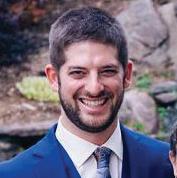
Kyle Austin is the content coordinator at KCAD, where he co-leads the Communications team in showcasing the talents and accomplishments of KCAD’s far-reaching creative community. As a founding member of the Wege Prize organizing team, Kyle has helped shape and evolve the competition’s mission, competitive framework, educational experience and communication strategy while amplifying participants’ success stories and the positive impact of their work. He believes in the power of whole systems thinking, collaborative design and creative problem solving to transform our world for the better and is continually inspired by all those working to realize a circular economy.
Professor and Sustainability Officer, Kendall College of Art and Design
Gayle DeBruyn is chair of the Collaborative Design and Master of Arts in Design programs and advises the furniture design concentration in the Product Design Program at KCAD. In addition to teaching, Gayle is on the planning team for Wege Prize and manages the Wege Prize High School Summer Collaborative Studio. She shares her classroom experience with the broader community by providing professional development training for teachers and as a co-developer of XQ Super School, Grand Rapids Public Museum Middle and High School. She is past president of the West Michigan Sustainable Business Forum, and she serves on the City of Grand Rapids leadership committees for both the Community Collaboration on Climate Change (C4) and United Nations University Regional Center of Expertise in Sustainable Development.

After a 20-year career in residential and contract furnishings, Jill Armstrong had the opportunity to consult in green marketing early in its inception. From there her business blossomed into working with sustainability, environmental and social justice marketing and events. Jill has worked with Wege Prize for the past eight years as a consultant, facilitating global connections and partnerships while providing project management and event planning support for the Wege Prize competition. Jill has been a core asset in supporting Wege Prize’s growth from a local competition into a powerful global platform for creative problem solving that’s drawn incredible participants from institutions around the world.

Having worked almost 10 years in various administrative roles in higher education in Philadelphia, Martha Stackhouse moved to Grand Rapids, Michigan, and began working for Wege Prize in November 2021. In her role, she works behind the scenes to build the global network for Wege Prize while organizing, planning and promoting each phase of the program. She is inspired by the influential and interdisciplinary work that Wege Prize participants are doing and looks forward to continuing to grow the program and its impacts on the world of circular economy design and innovation.
Former Chief Communications Officer, Kendall College of Art and Design

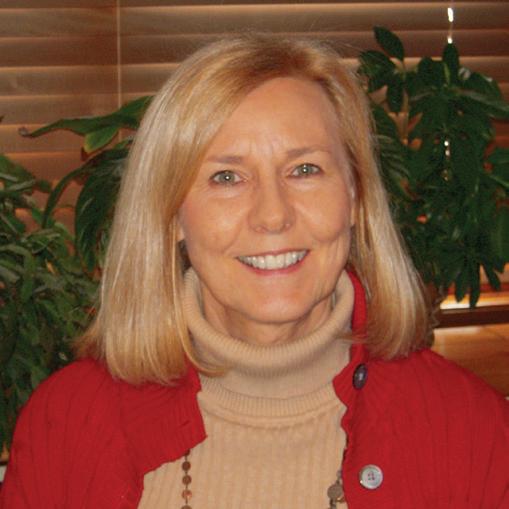
2013-2020
Elena Tislerics is a brand management professional who previously served as chief communications officer for KCAD. In this role, Elena was a founding member of the Wege Prize organizing team and helped grow the competition from a local level to a national and then international level from 2013 to 2020. She currently owns and operates the independent design firm, About Face Studio.
Ferris State University does not discriminate on the basis of race, color, religion or creed, national origin, sex, sexual orientation, gender identity, age, marital status, veteran or military status, height, weight, protected disability, genetic information, or any other characteristic protected by applicable State or federal laws or regulations in education, employment, housing, public services, or other University operations, including, but not limited to, admissions, programs, activities, hiring, promotion, discharge, compensation, fringe benefits, job training, classification, referral, or retention. Retaliation against any person making a charge, filing a legitimate complaint, testifying, or participating in any discrimination investigation or proceeding is prohibited.
Students with disabilities requiring assistance or accommodation may contact Educational Counseling & Disabilities Services at (231) 591-3057/ecds@ferris.edu in Big Rapids (including statewide students) or the Director of Counseling and Disability Services for Kendall College of Art and Design (KCAD) at (616) 451-2787 ext. 1136/MarieYowtz@ferris.edu in Grand Rapids. Employees and other members of the University community with disabilities requiring assistance or accommodation may contact the Human Resources Department, 420 Oak St., Big Rapids, MI 49307 or call (231) 591-2150/HumanResources@ferris.edu
Inquiries and complaints of disability discrimination may be addressed to the Director of Accessibility, Arts, Sciences and Education Commons 1017, 820 Campus Dr., Big Rapids, MI 49307 or by telephone/email at (231) 591-3057/ JulieAlexander@ferris.edu or to the Director of Equal Opportunity, 120 East Cedar St., Big Rapids, MI 49307 or by telephone/email at (231) 591-2152/EqualOpportunity@ferris.edu.
Individuals with complaints of sex discrimination, including sexual harassment, may address those complaints to the Title IX Coordinator, 805 Campus Dr., Big Rapids, MI 49307 or by telephone/email at (231) 591-2088/ KaitlinZies@ferris.edu or to a Deputy Title IX Coordinator, including the Director of Equal Opportunity, as above; the Extended and International Operations Director of Student Services, 151 Fountain St. NE, Grand Rapids, MI 49503 or by telephone/email at (616) 643-5741/JocelynGoheen@ferris.edu.
Other inquiries or complaints of discrimination may be addressed to the Director of Equal Opportunity, as above.
Updated August 13, 2020